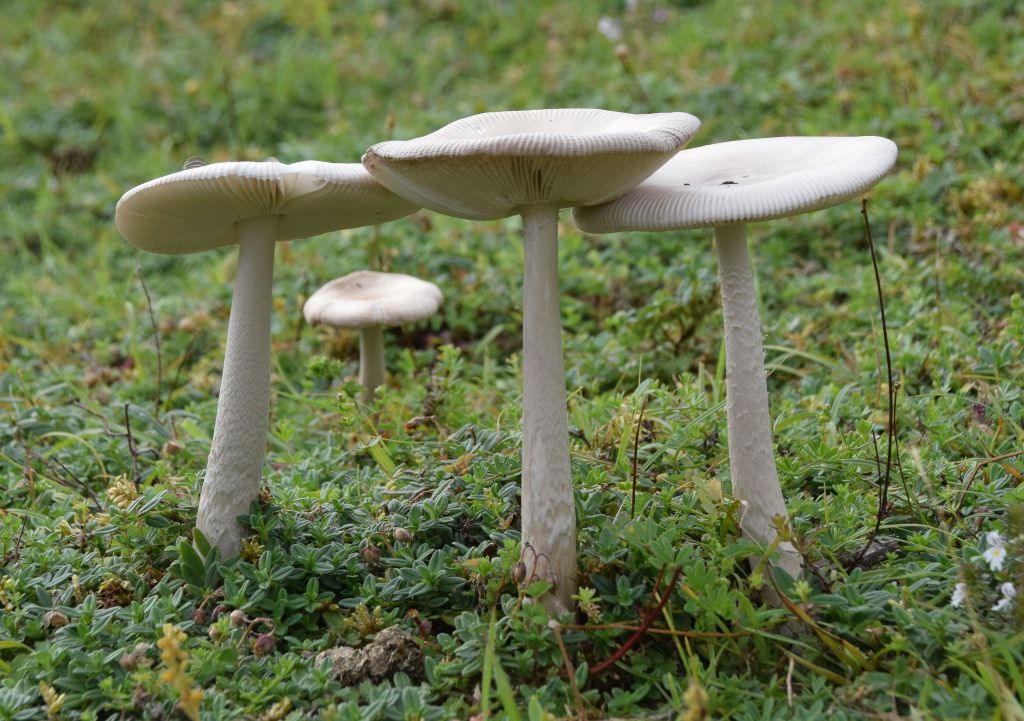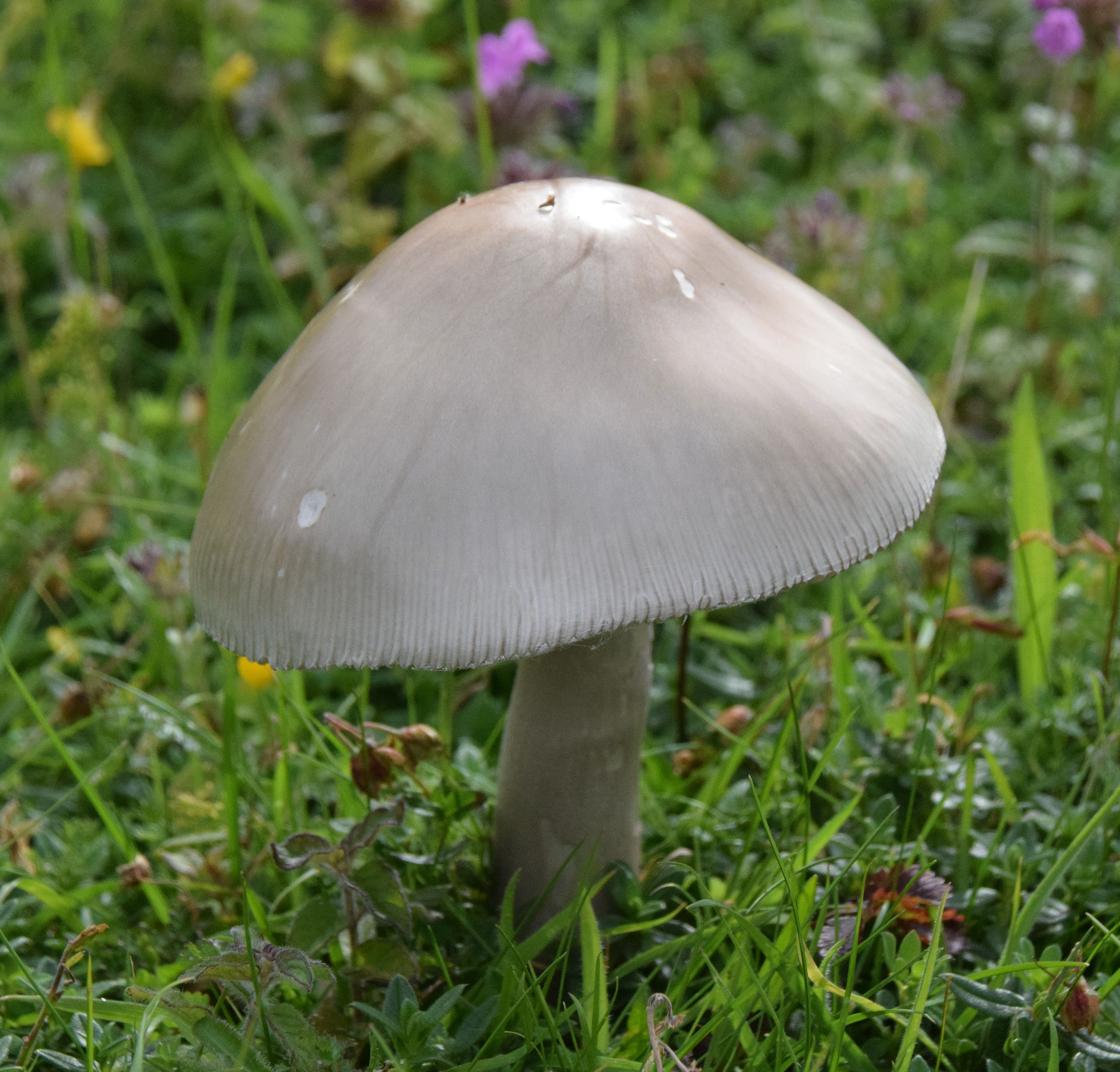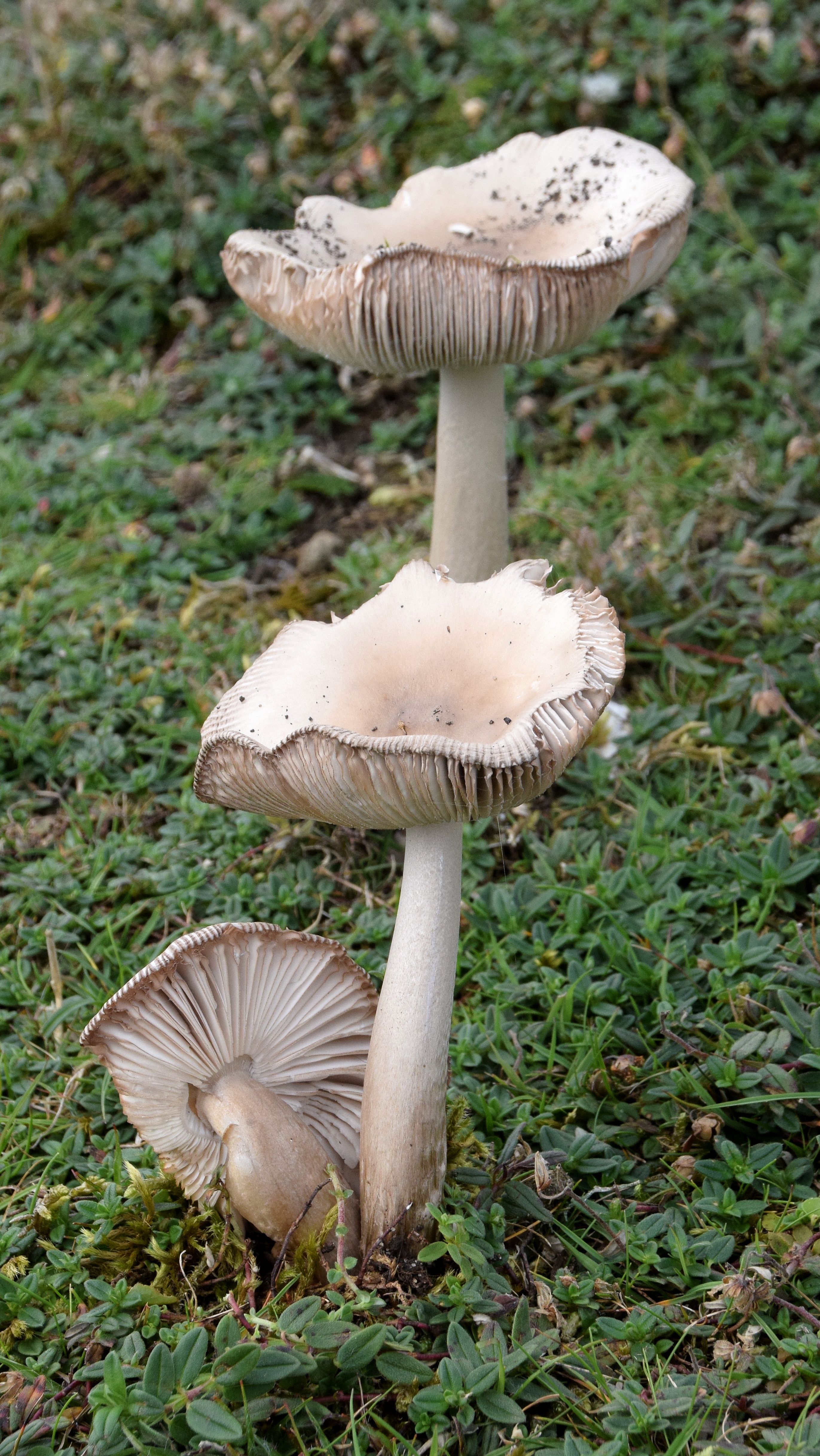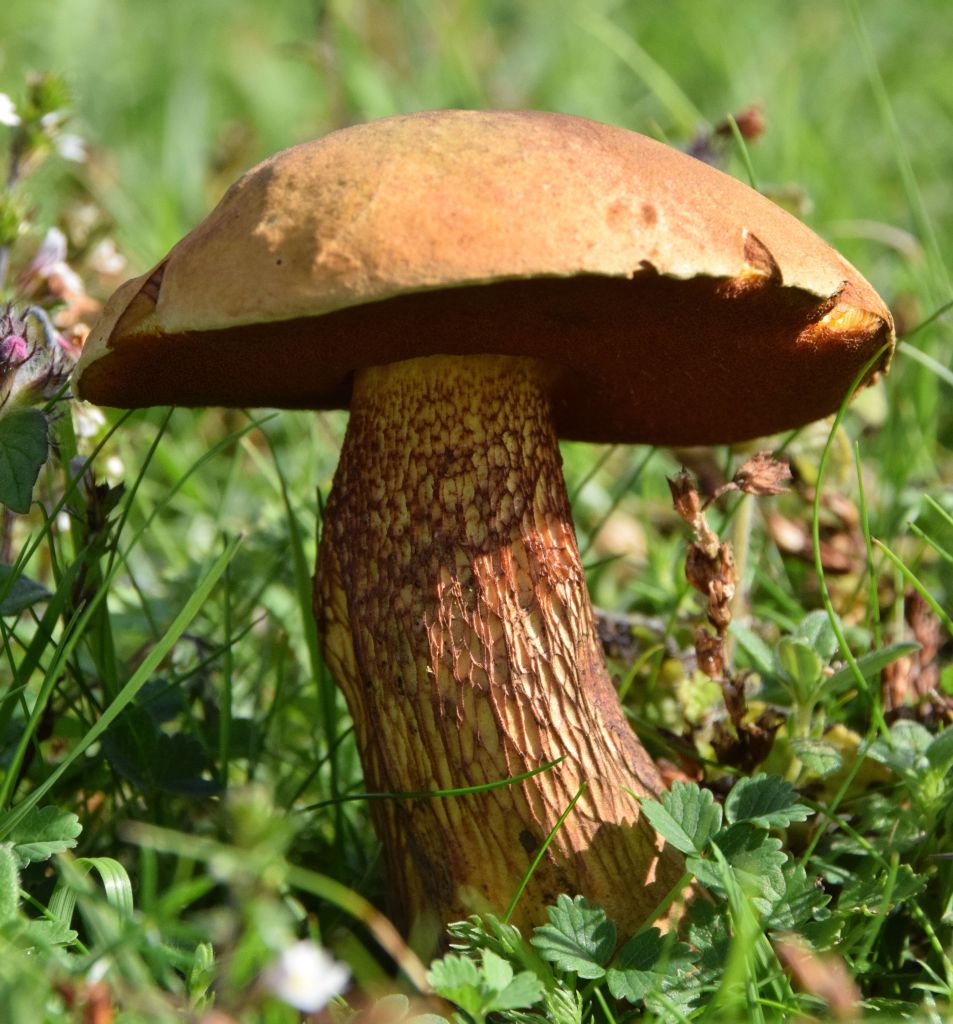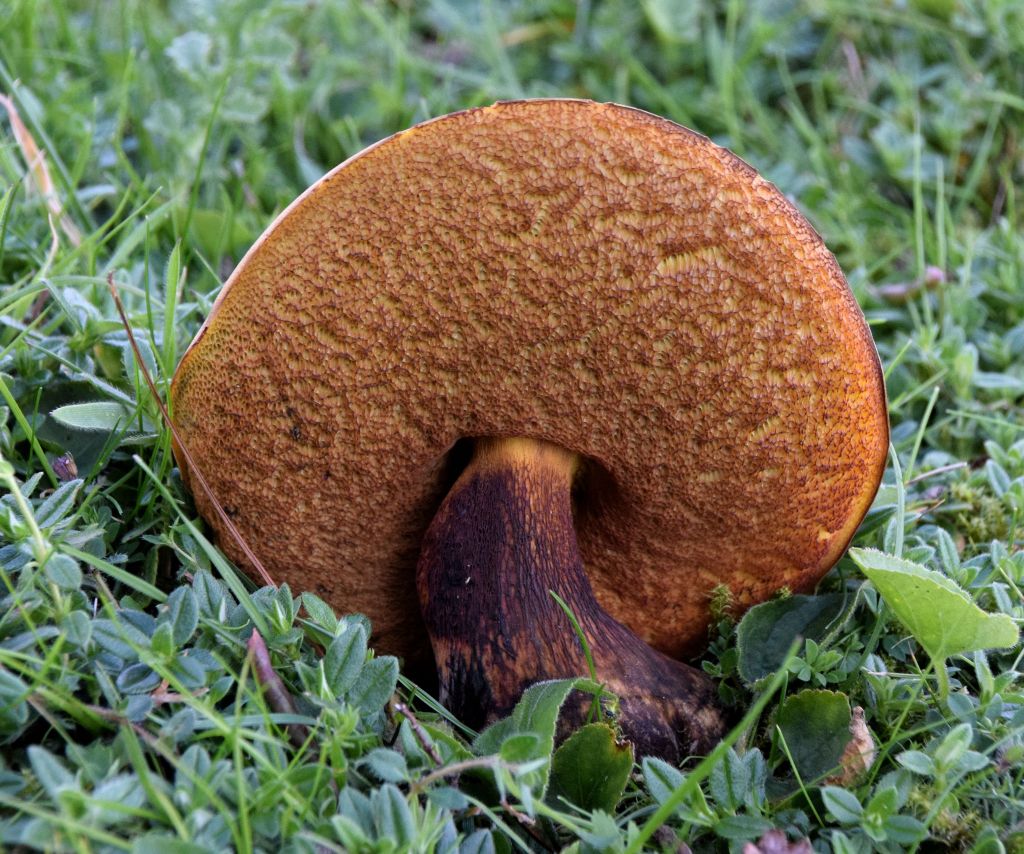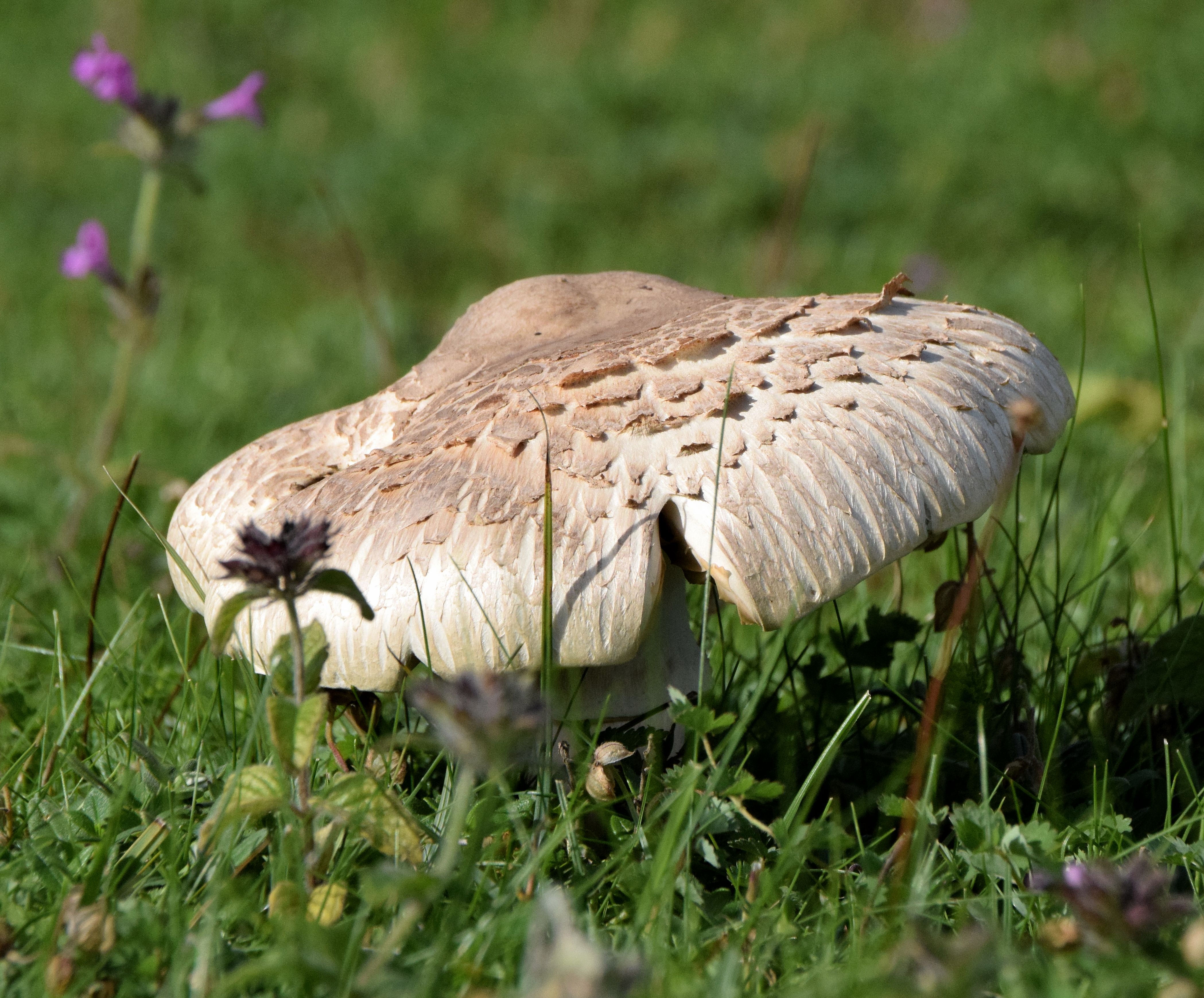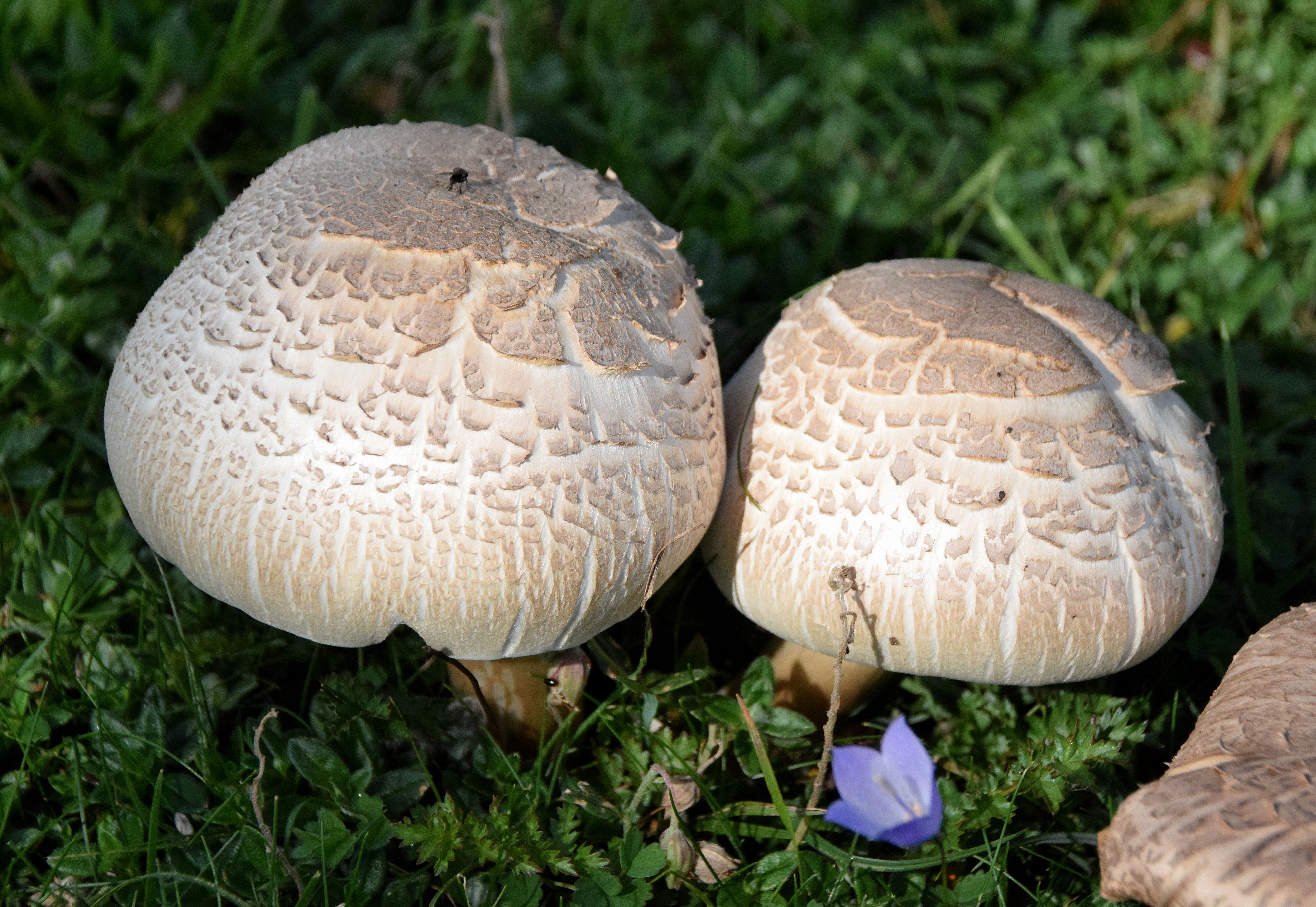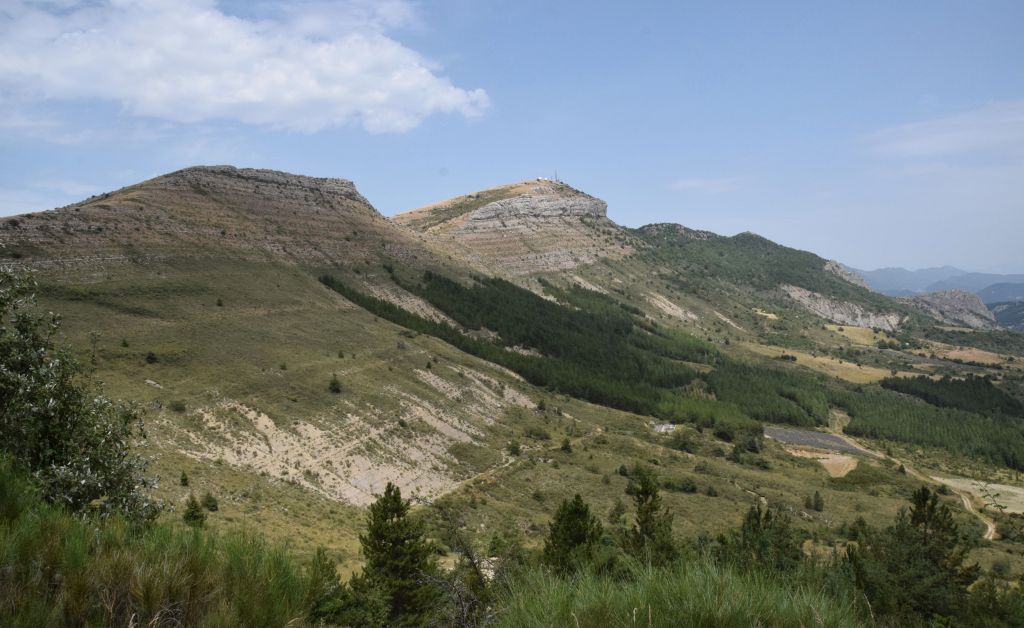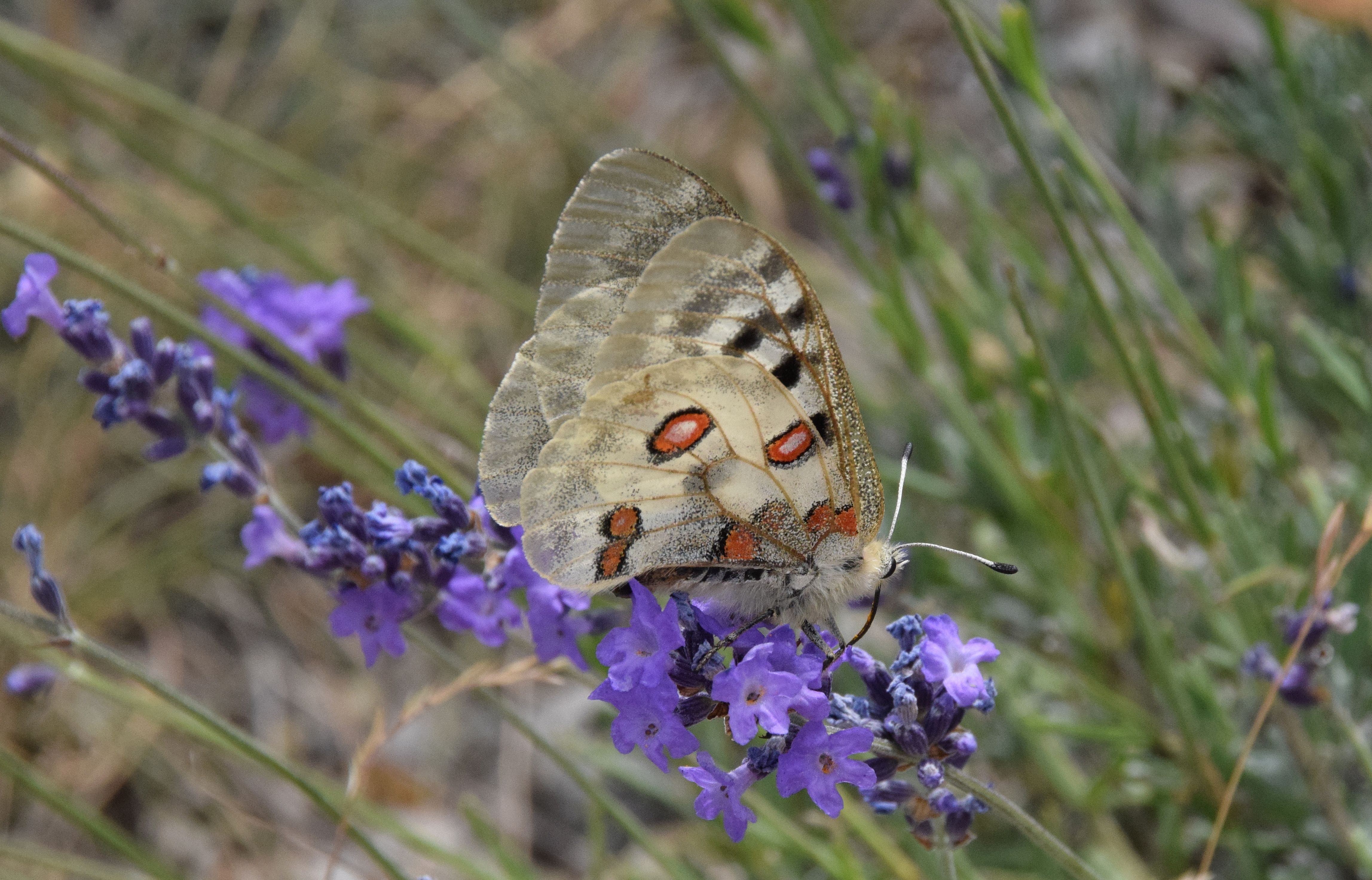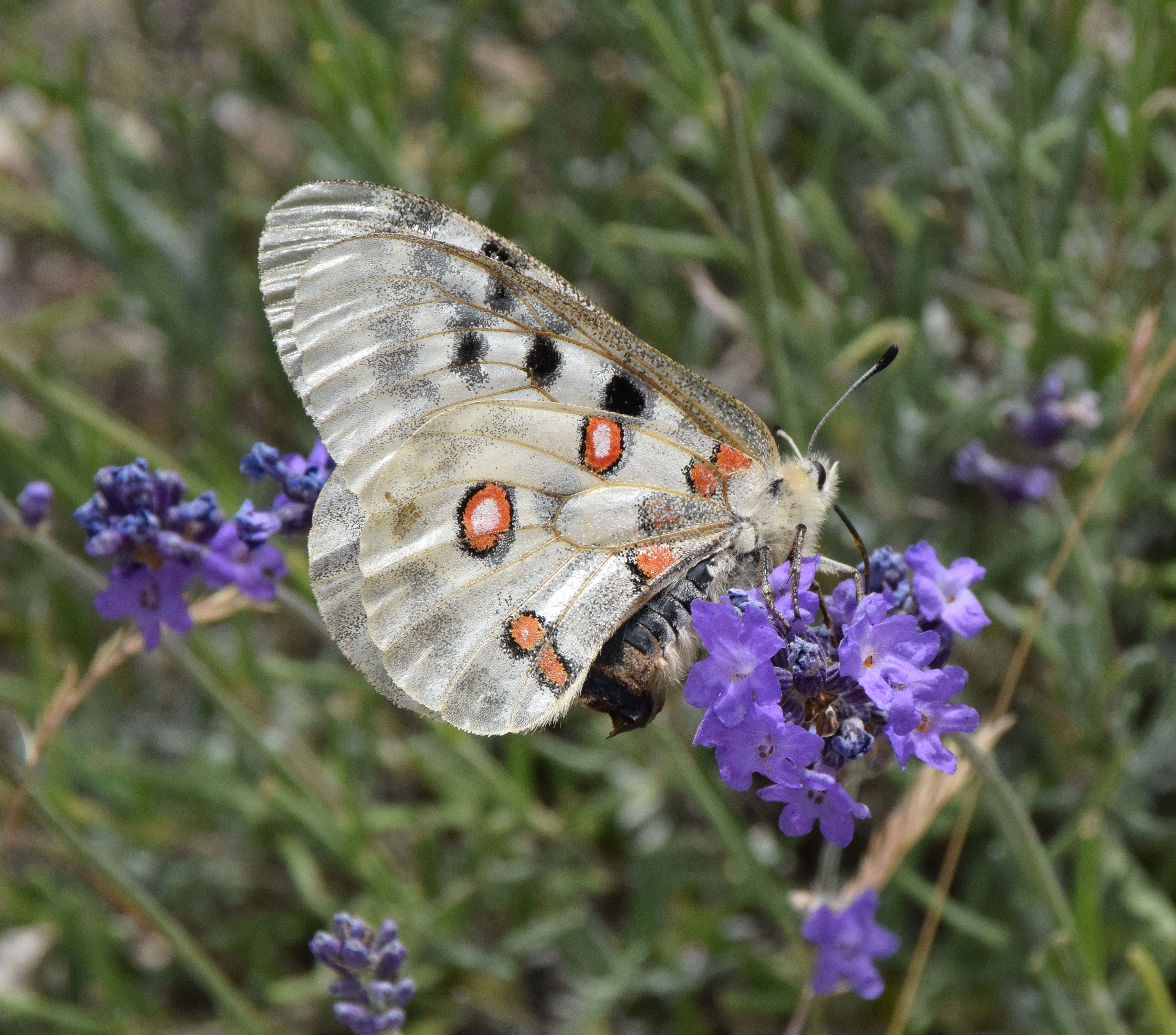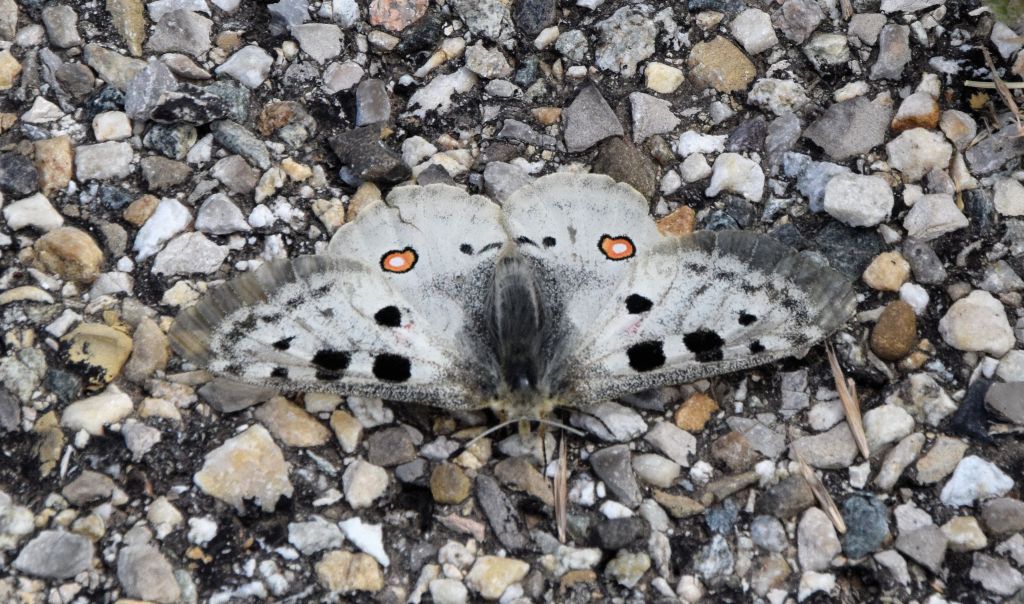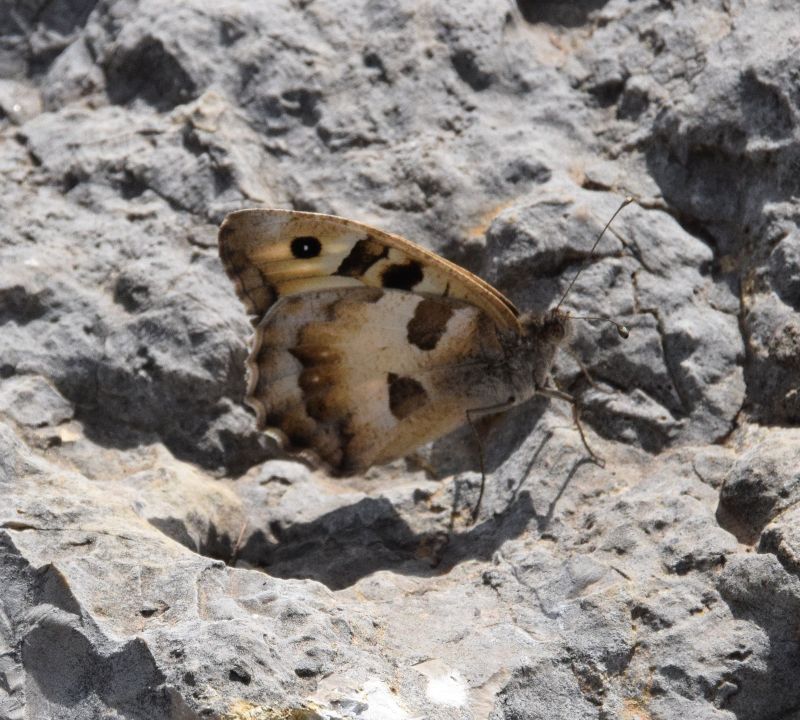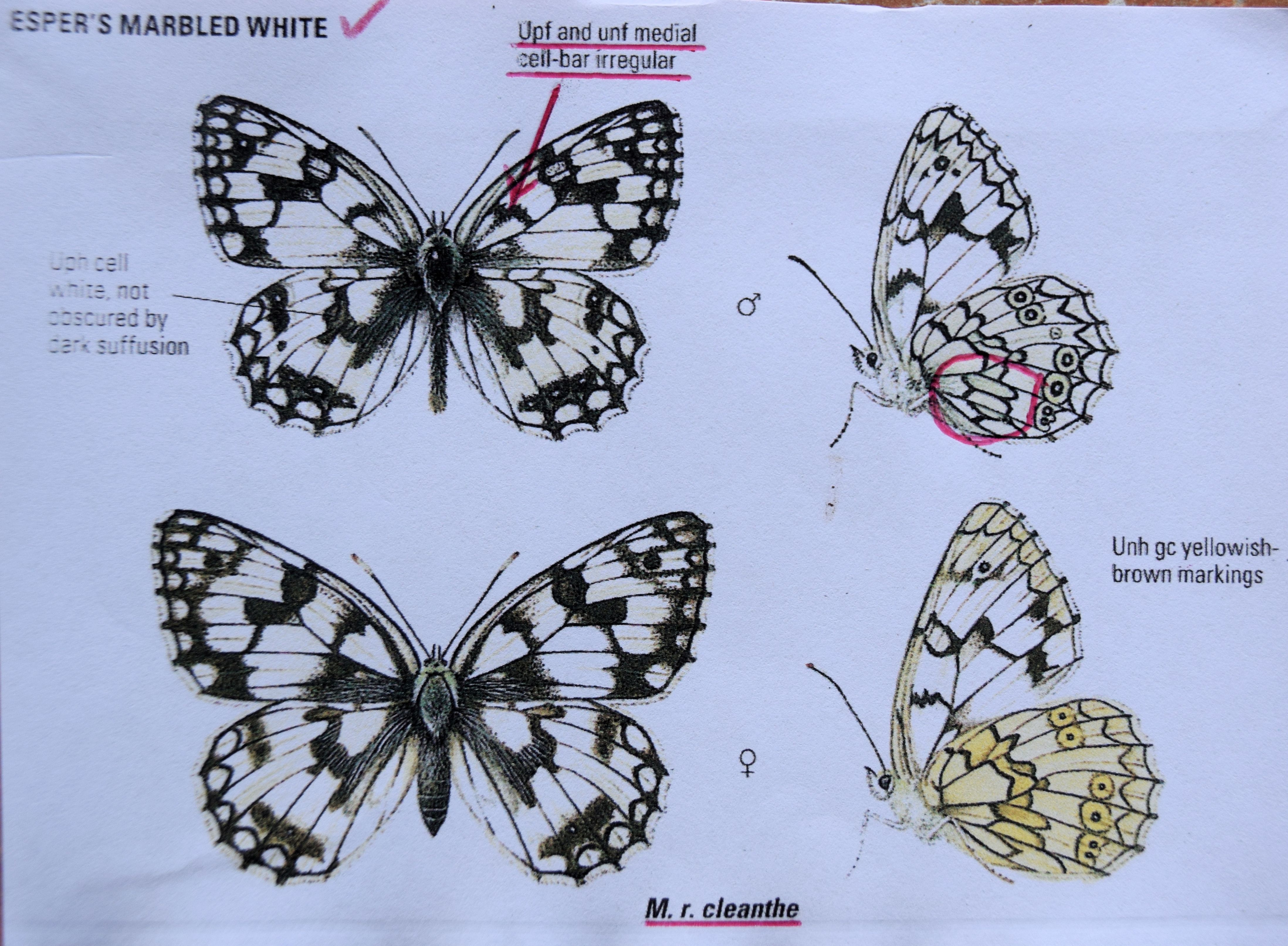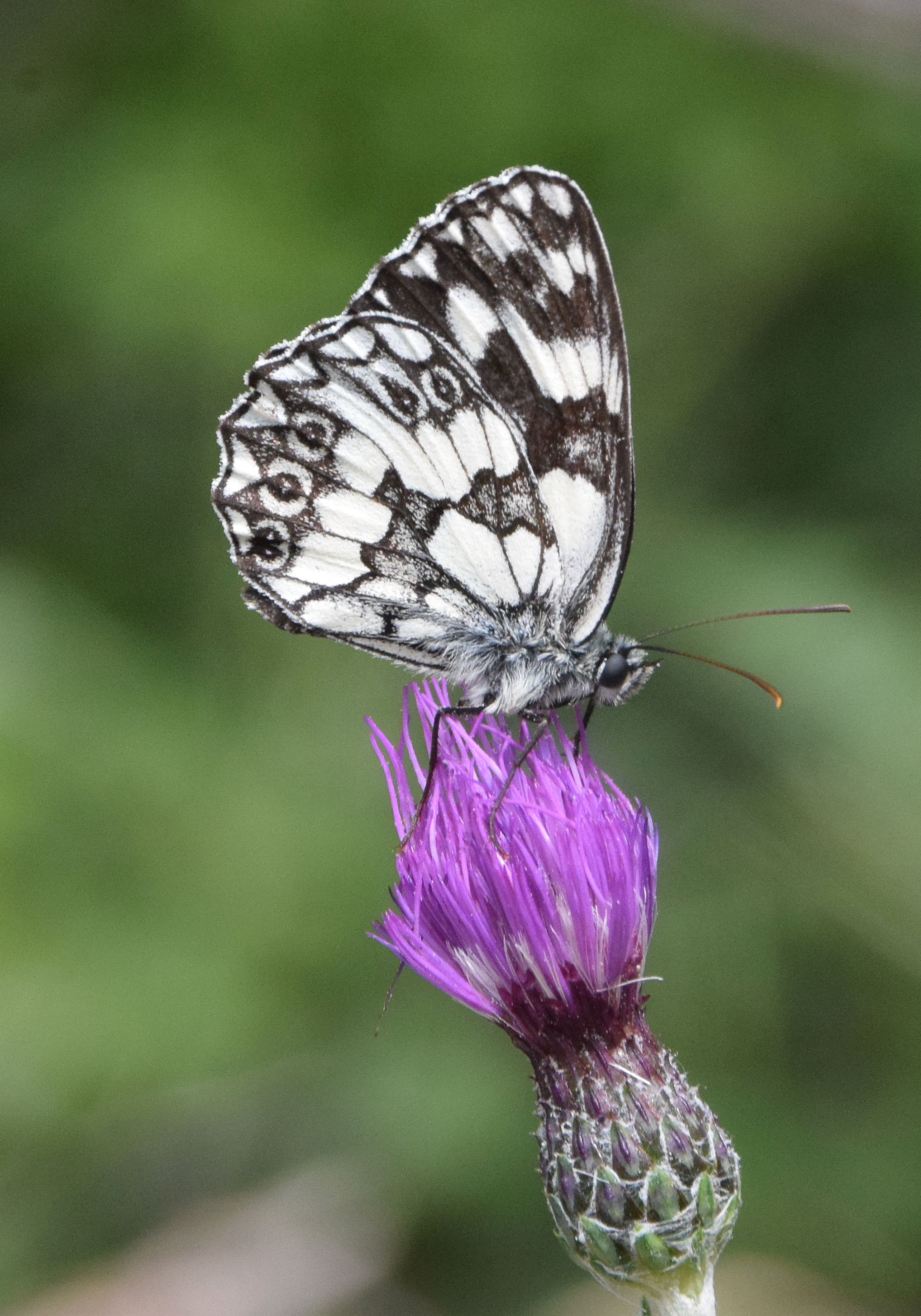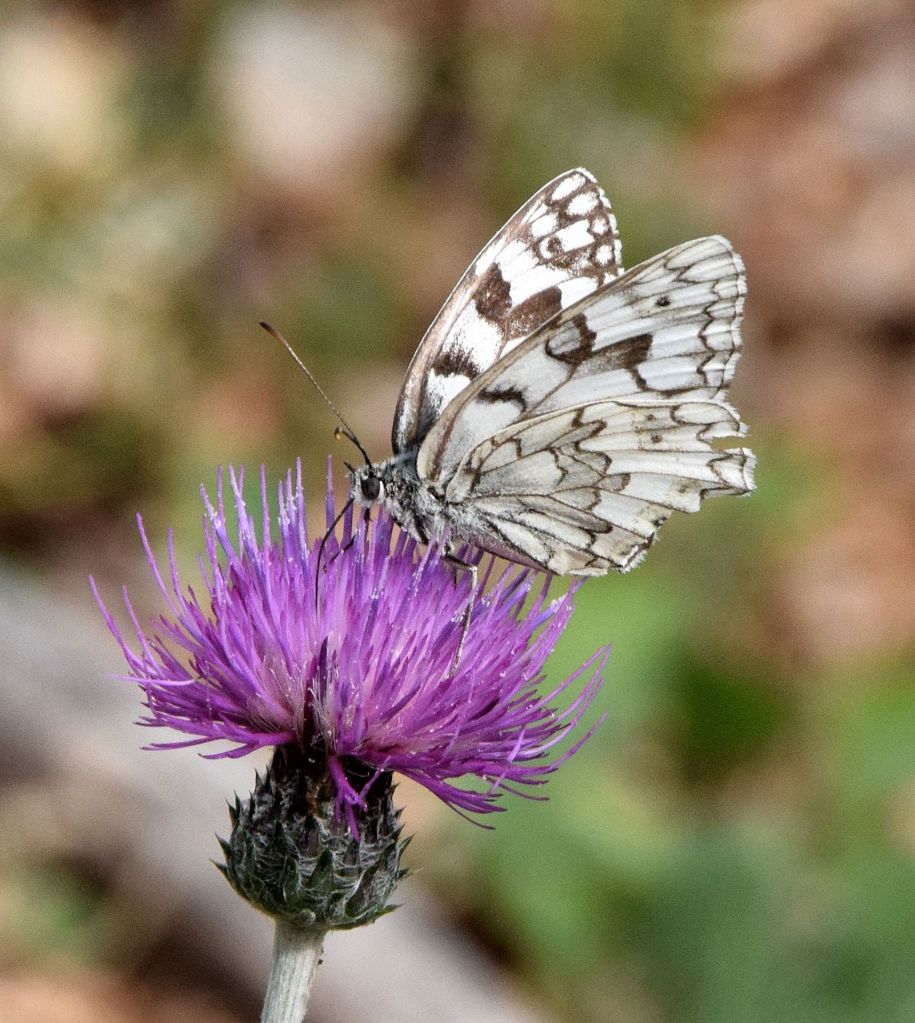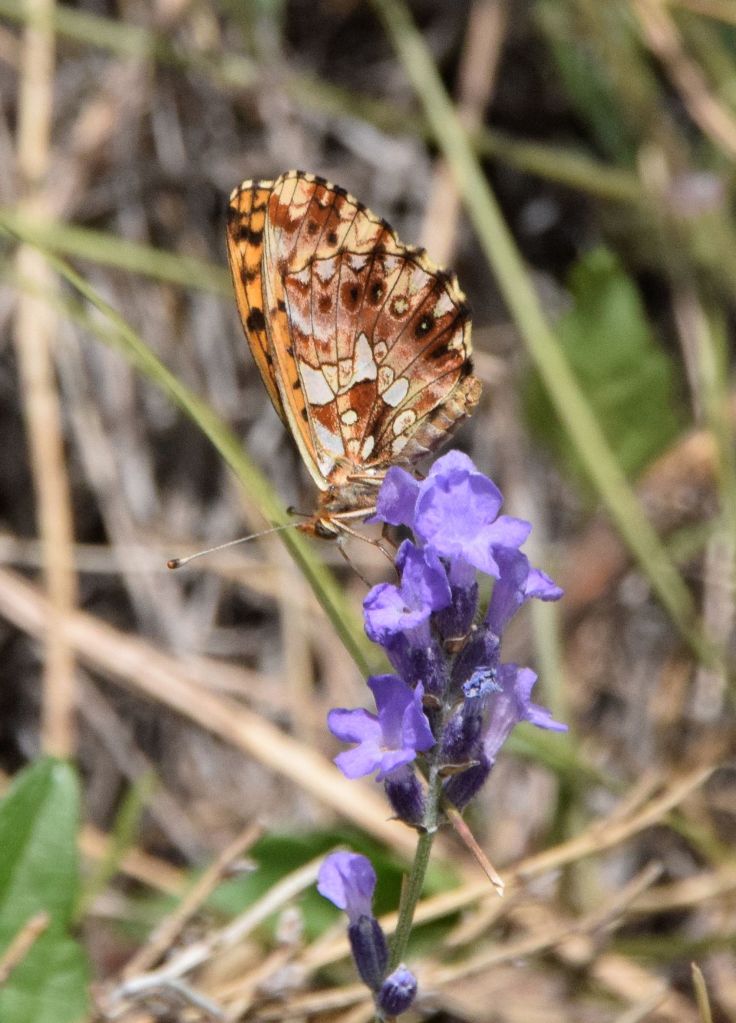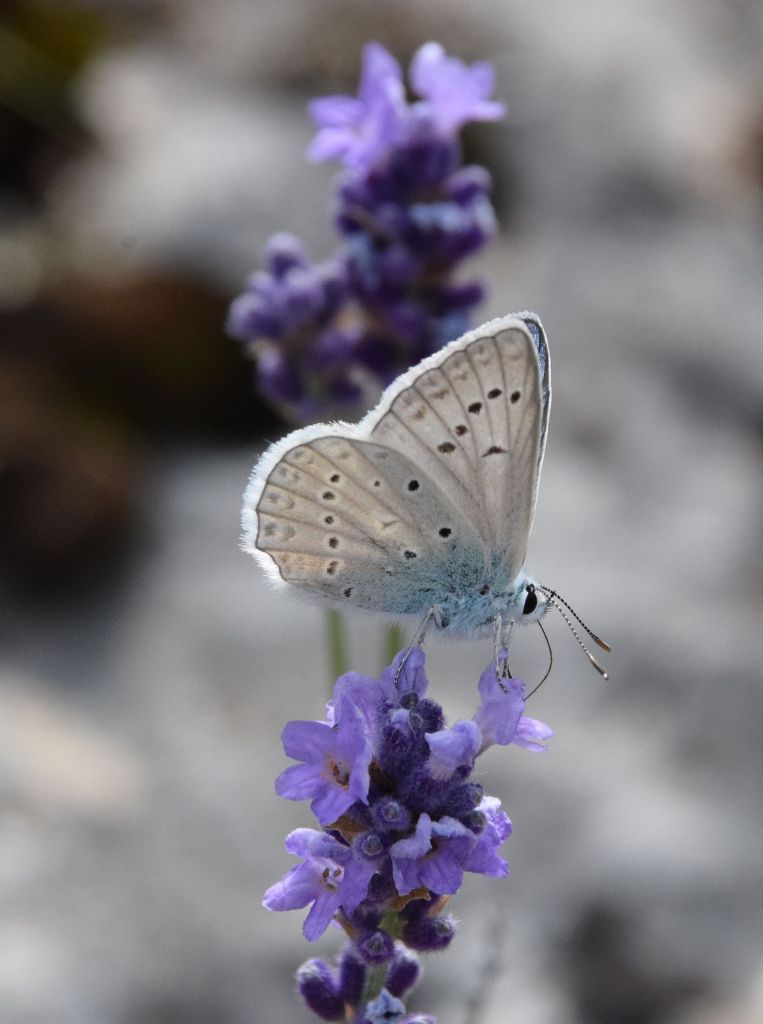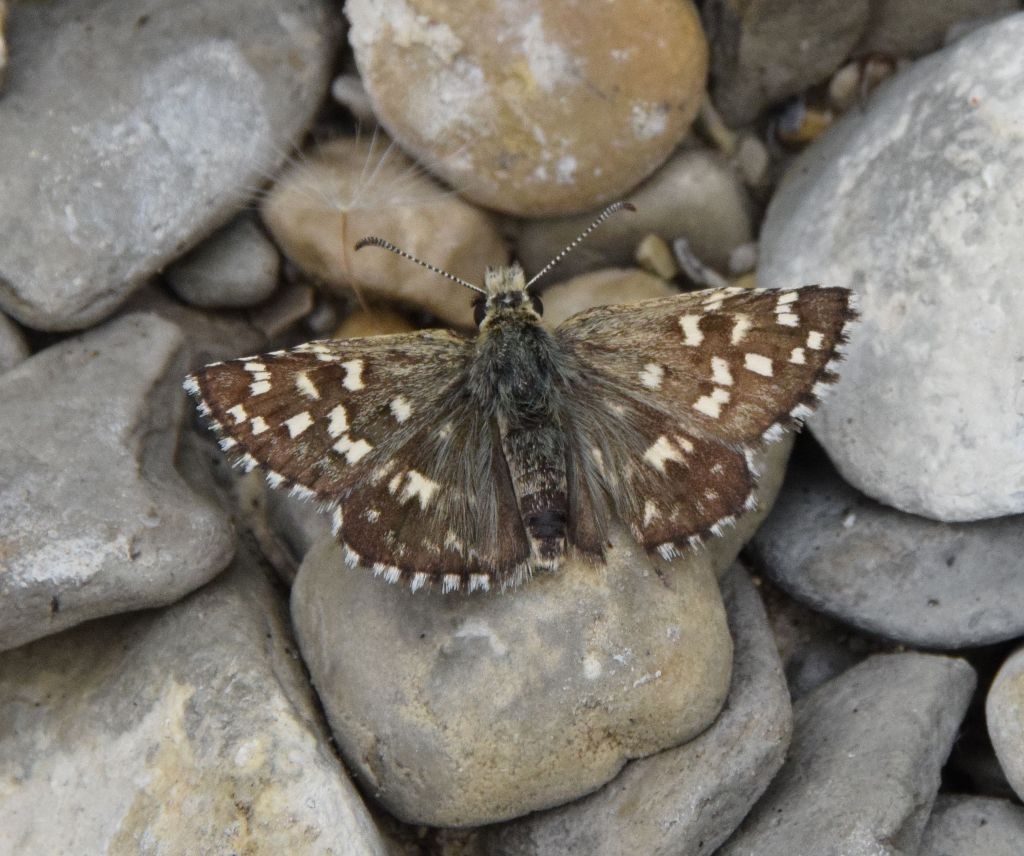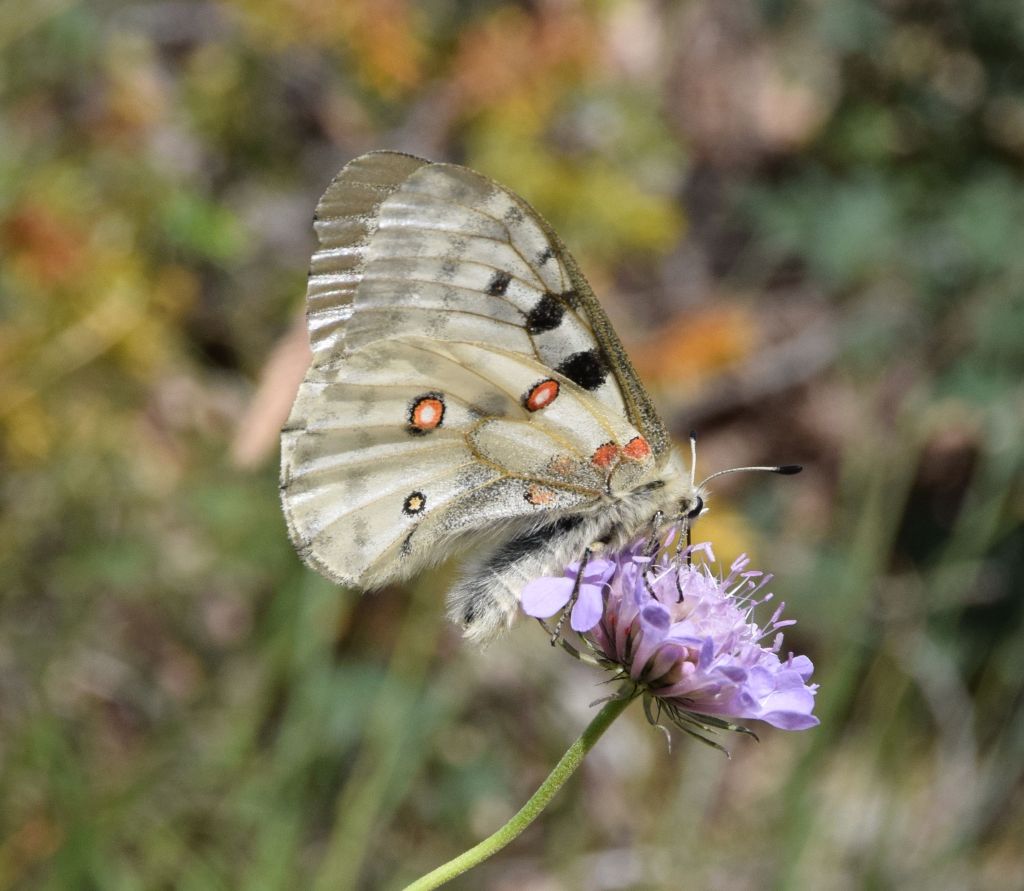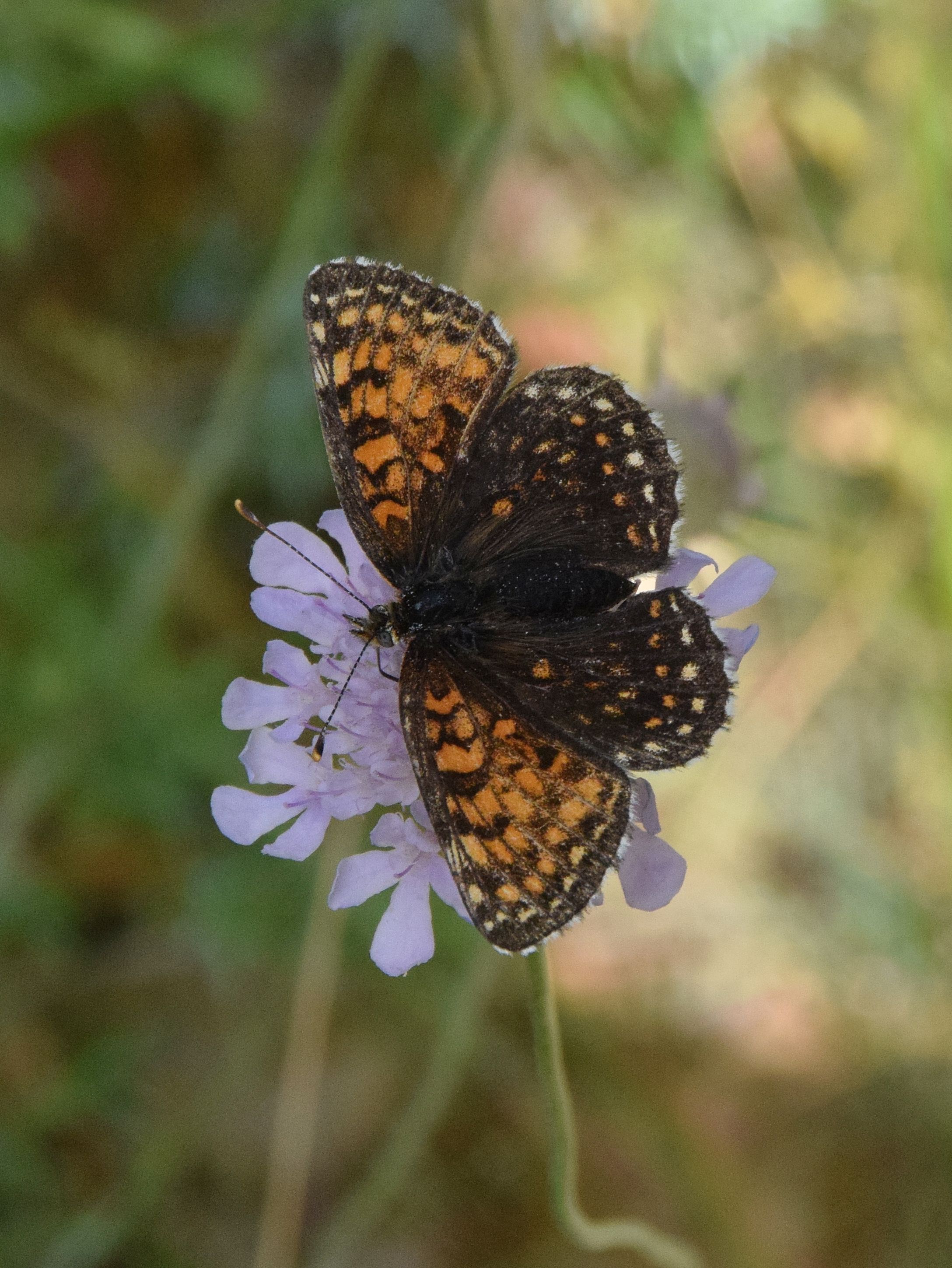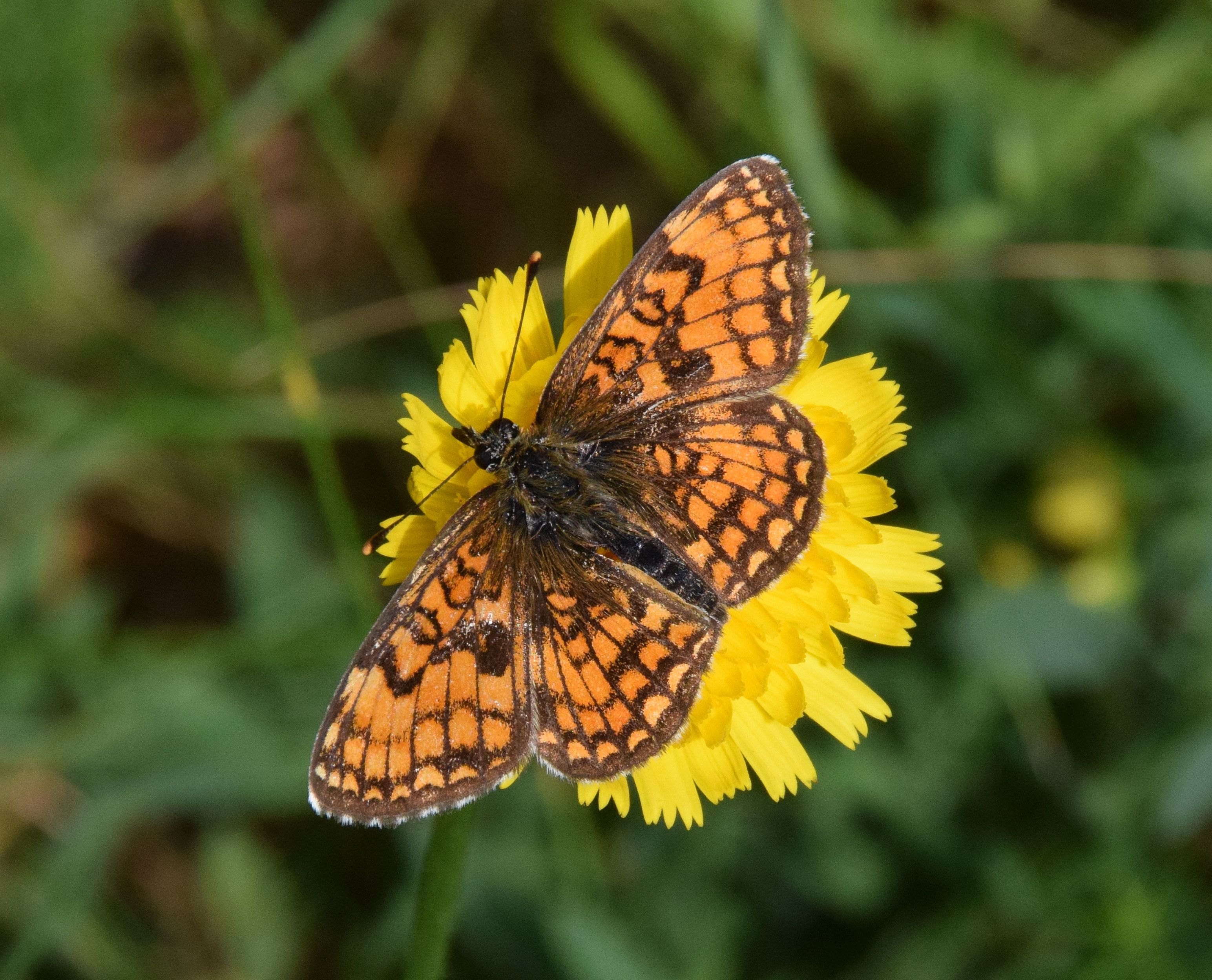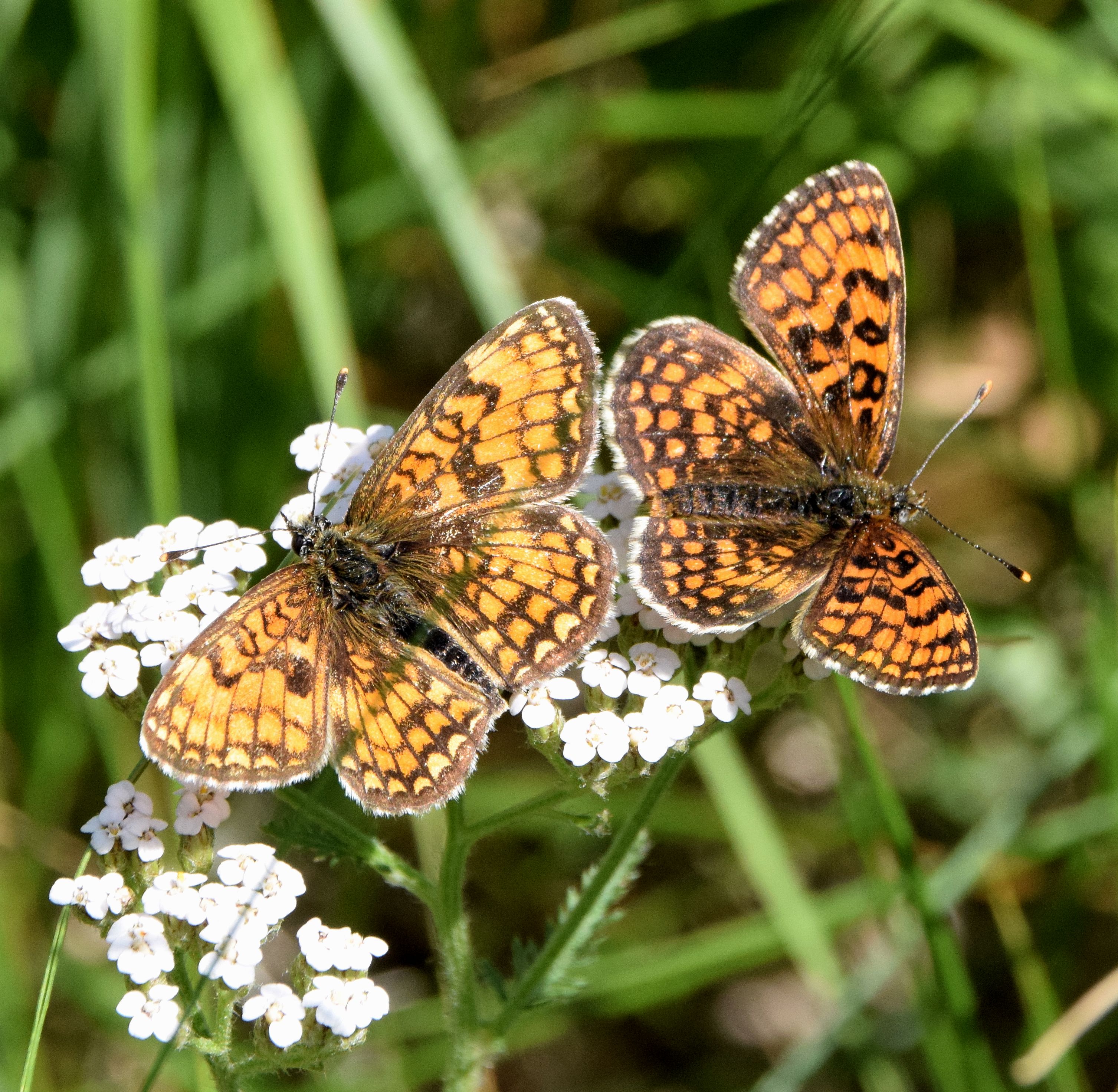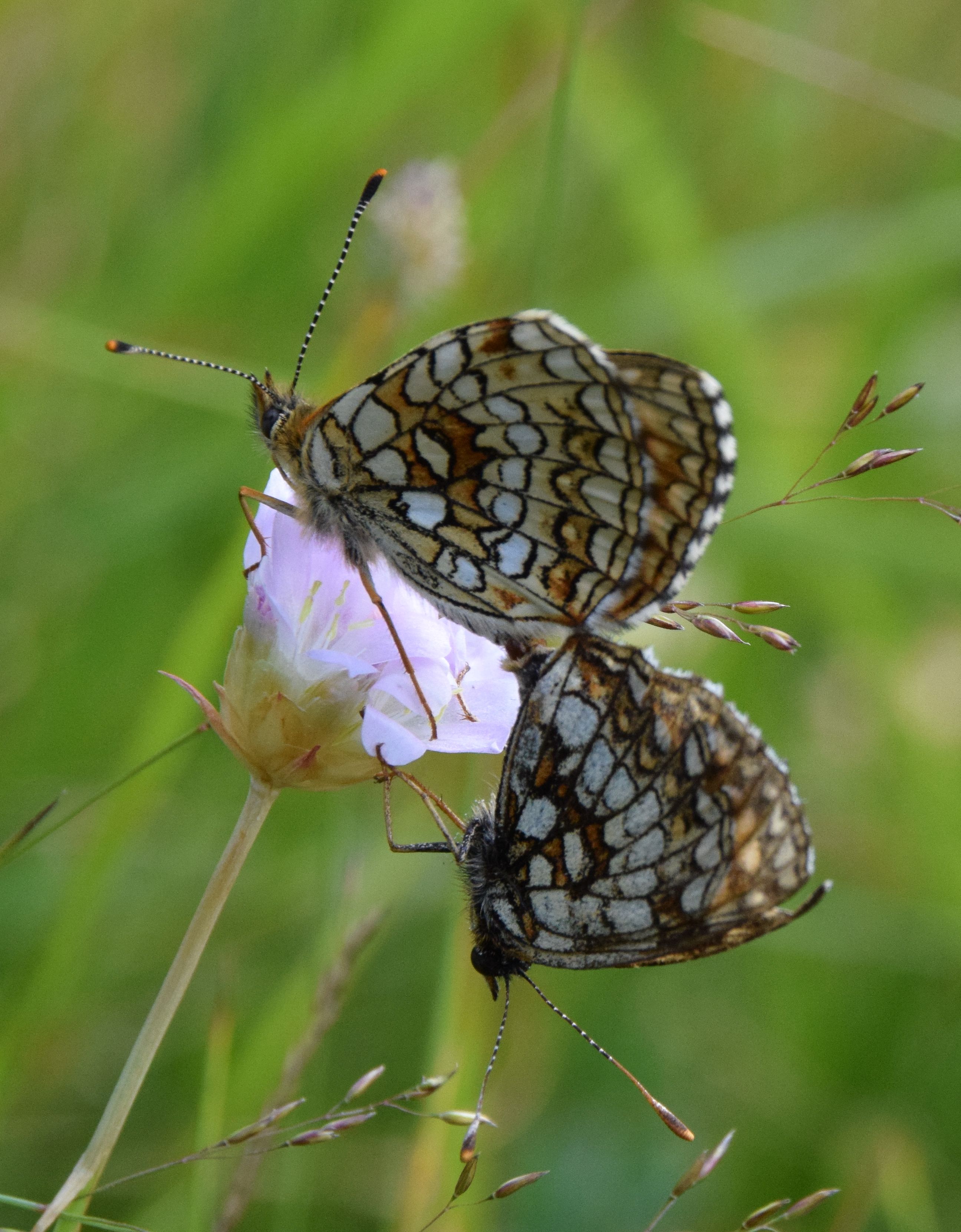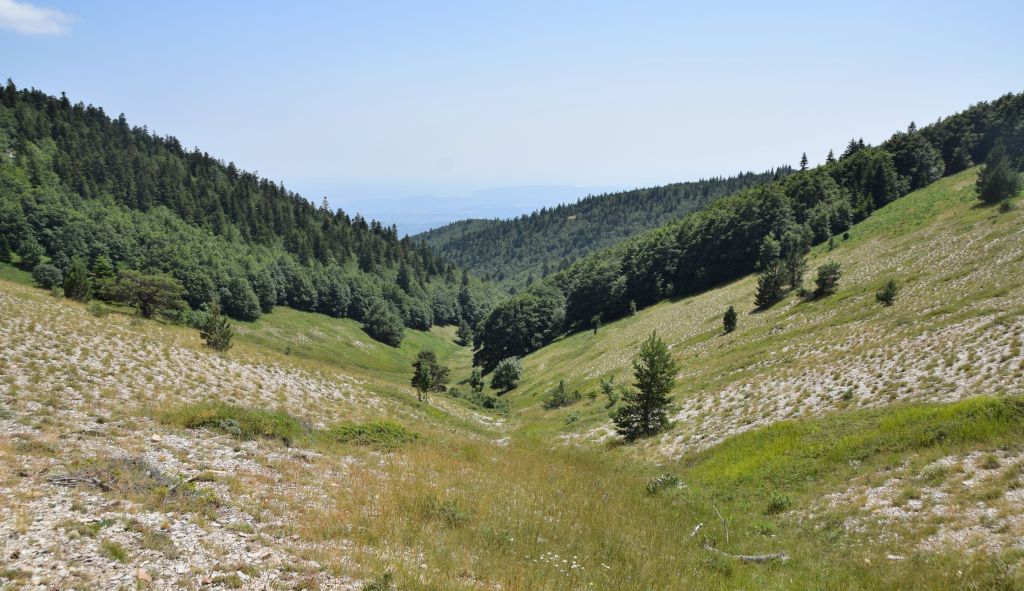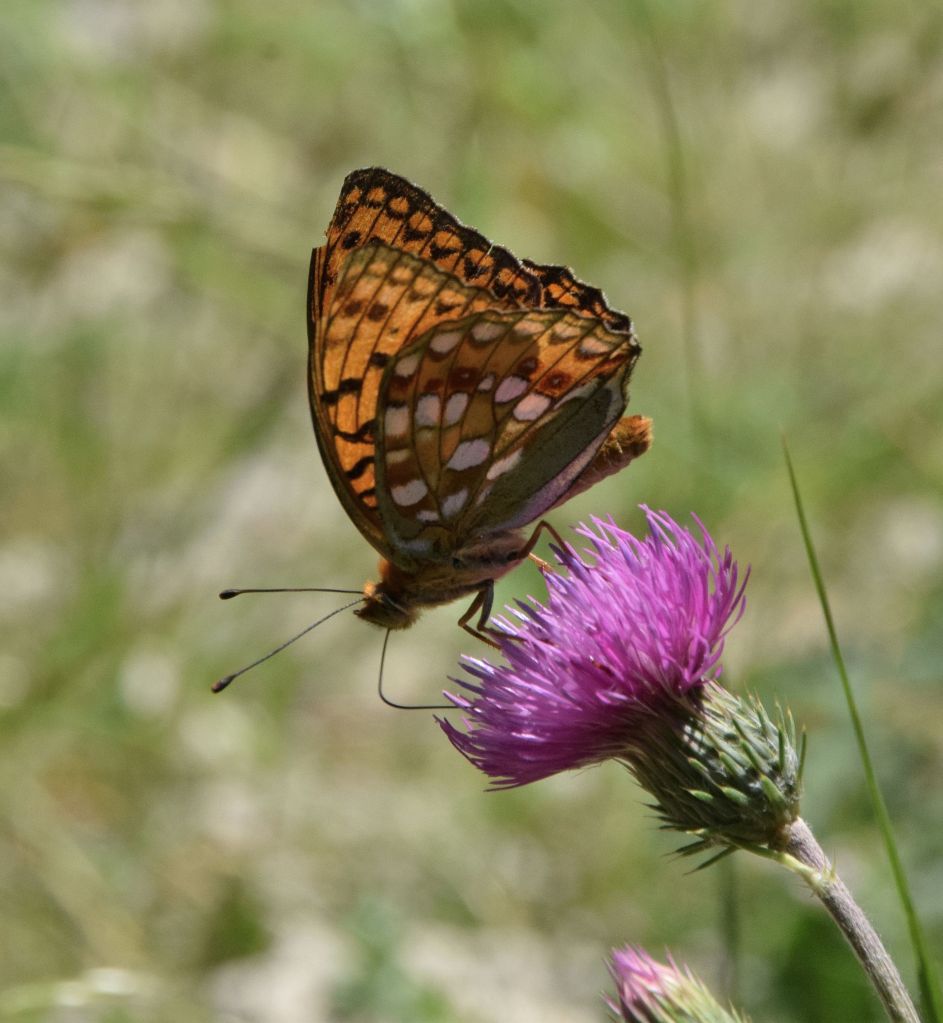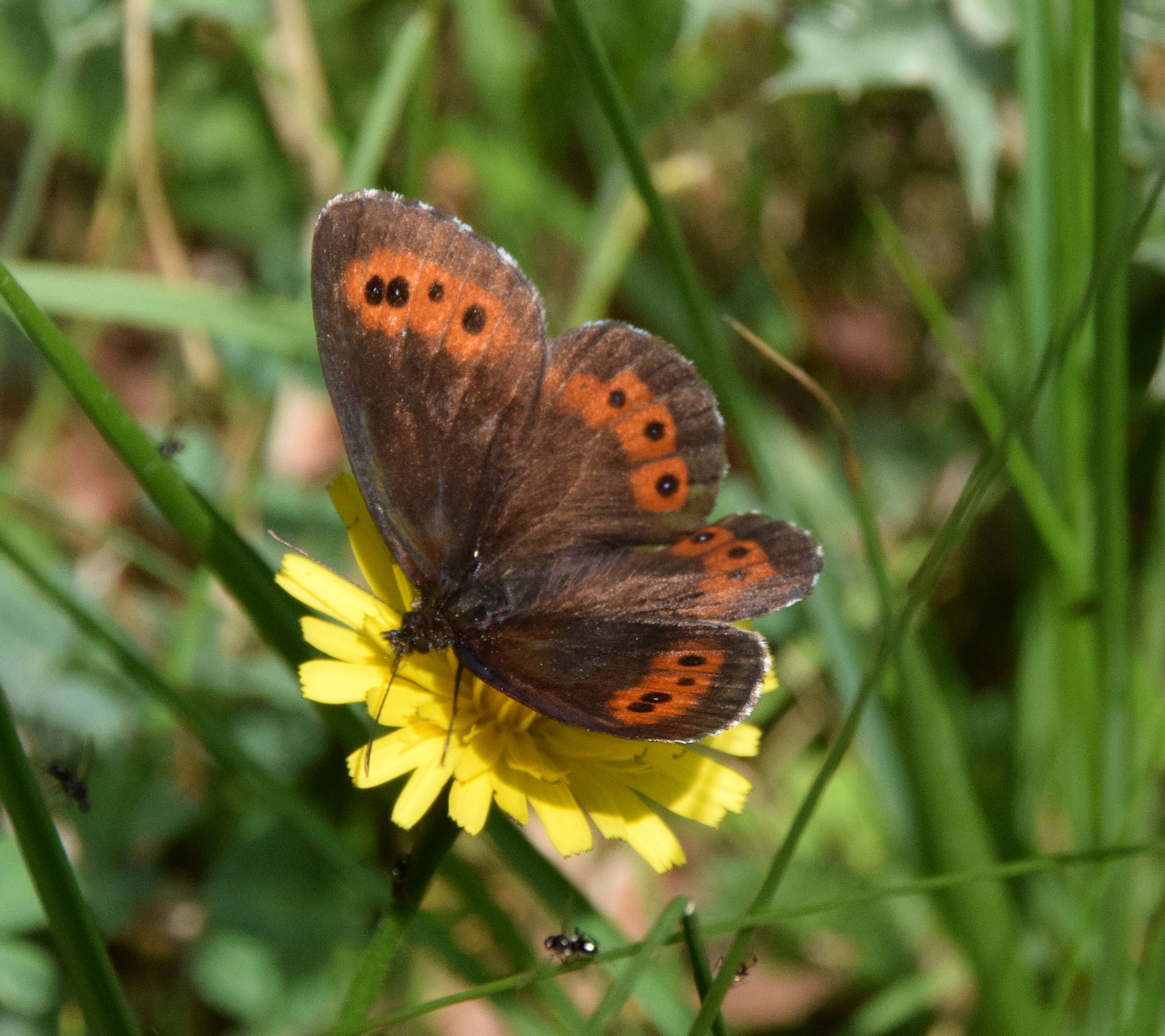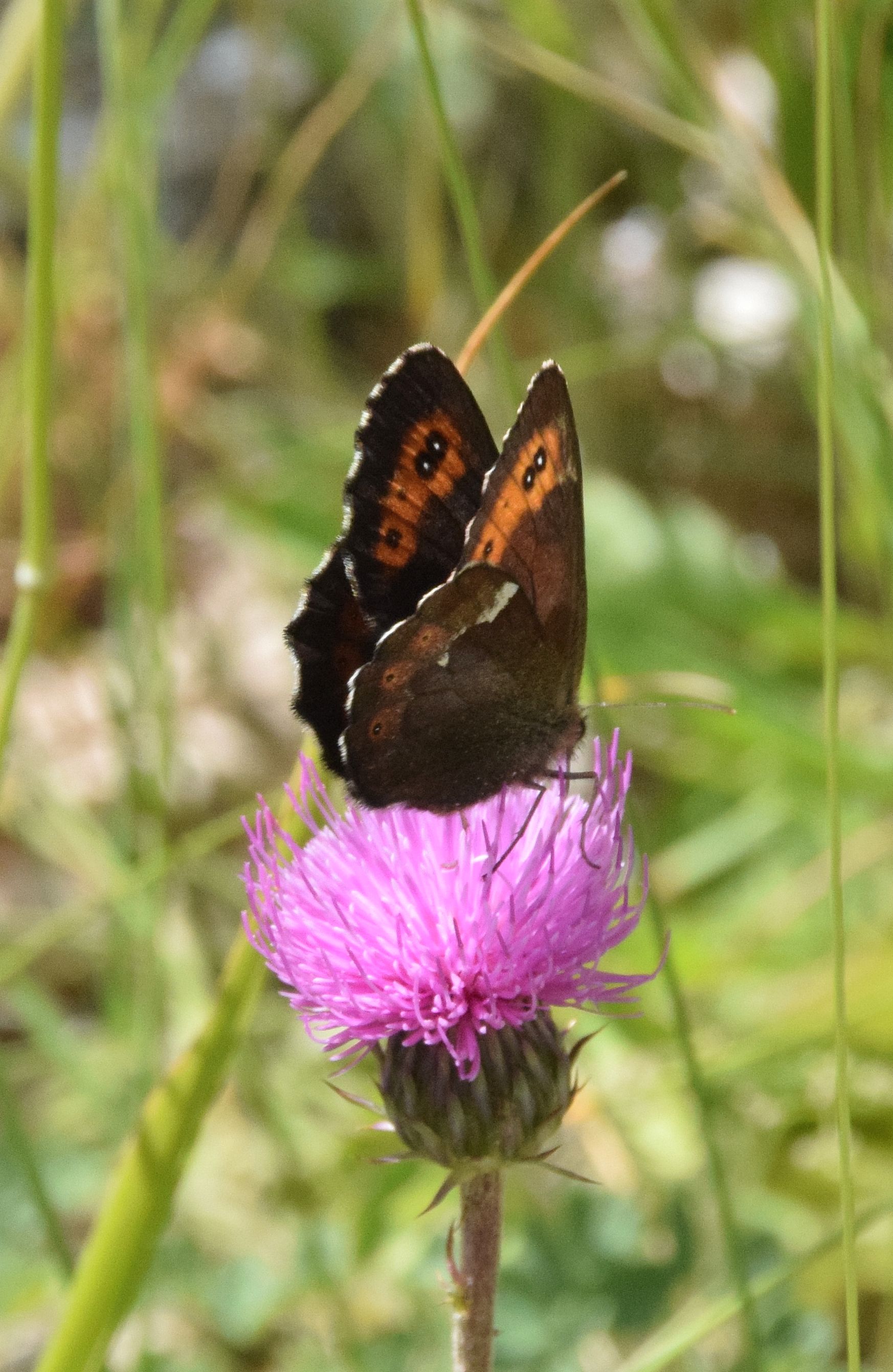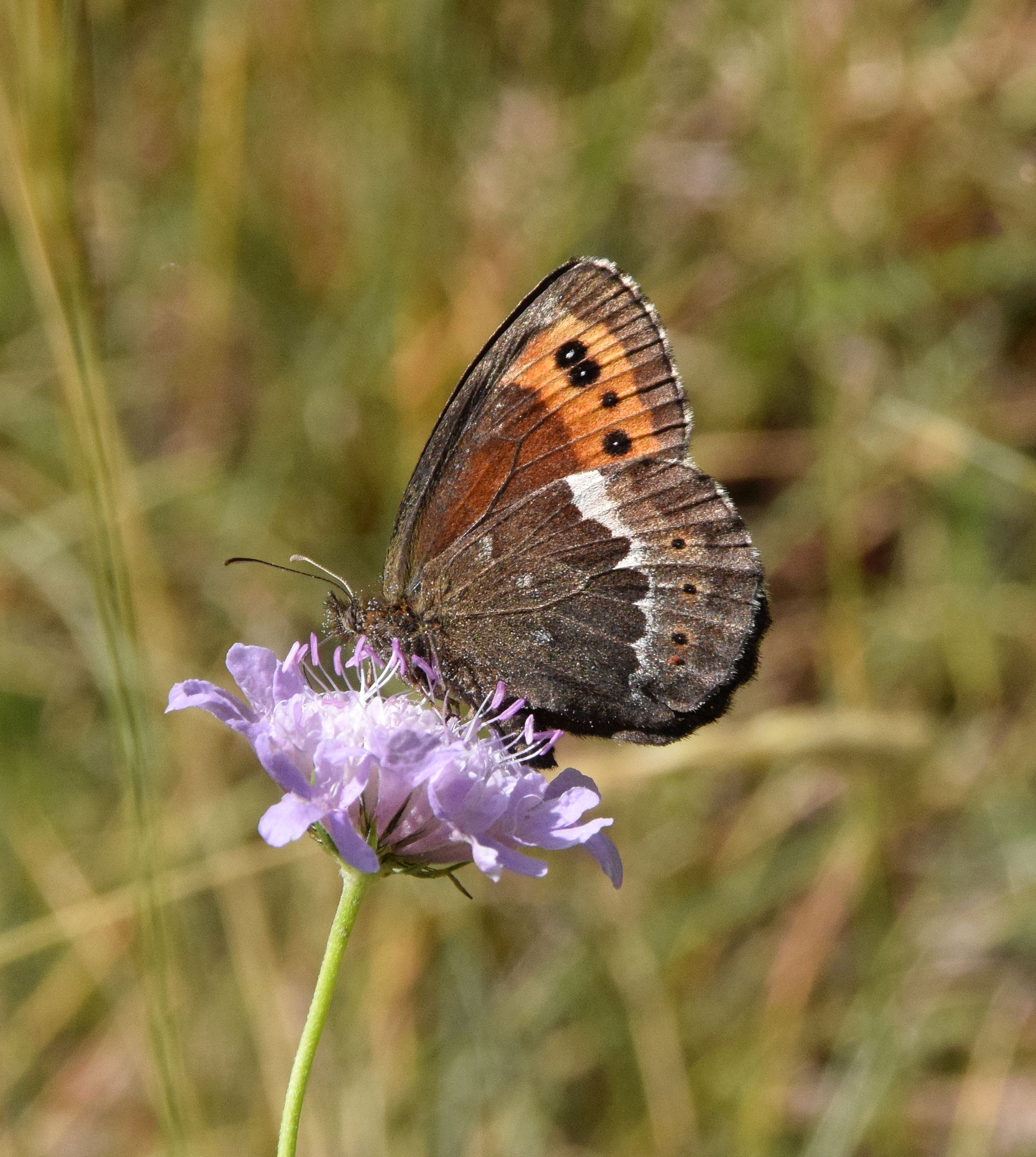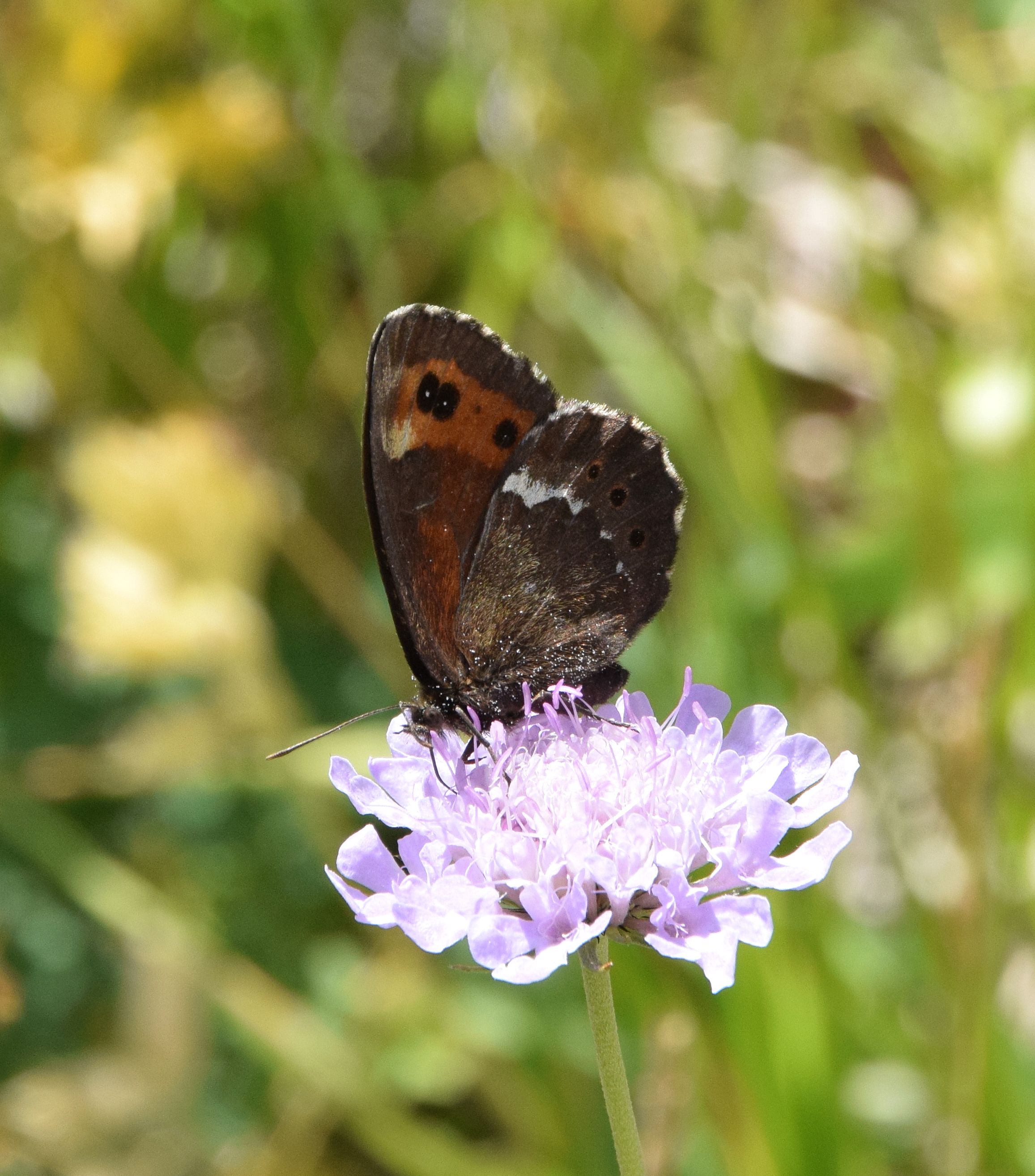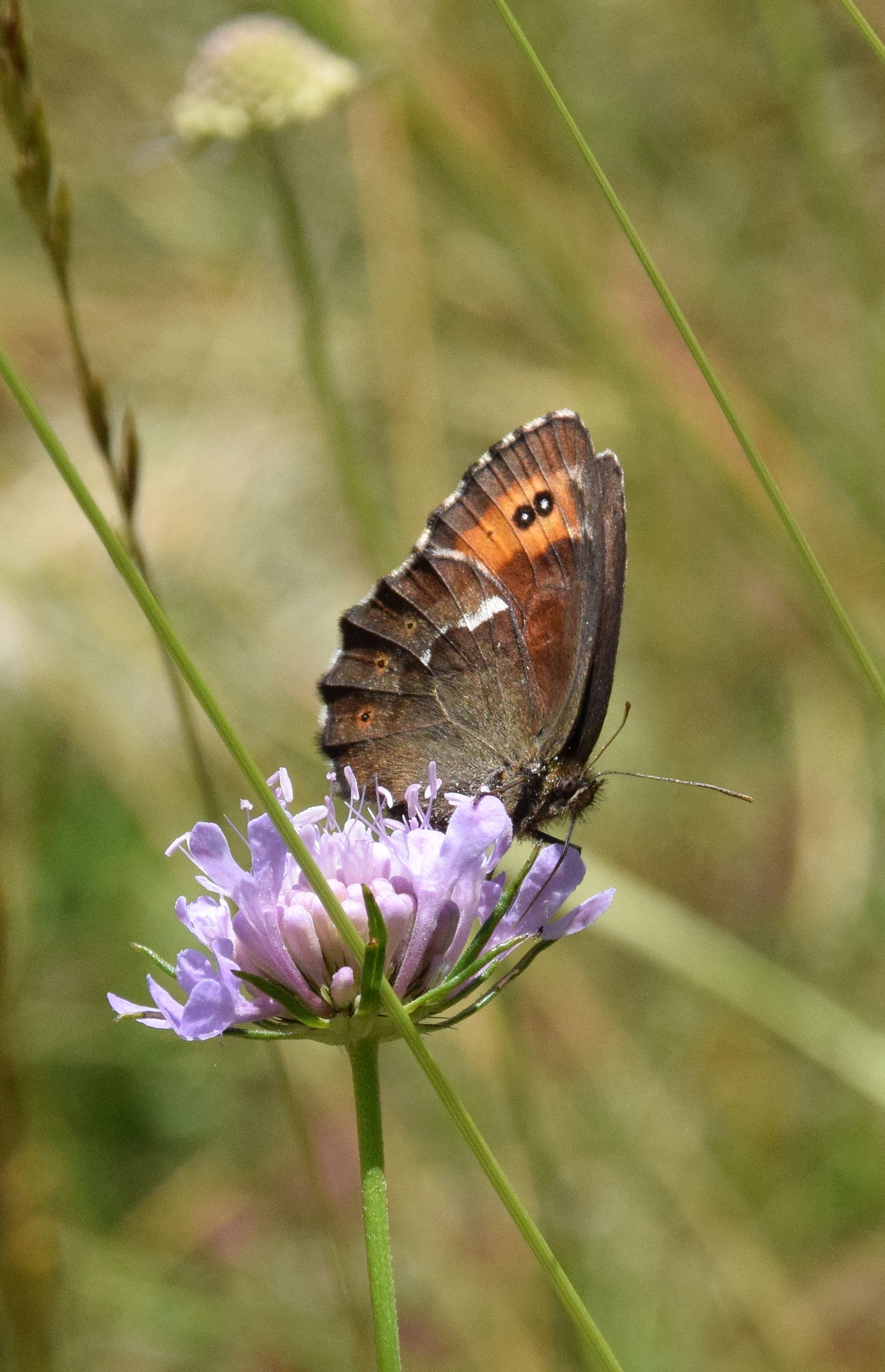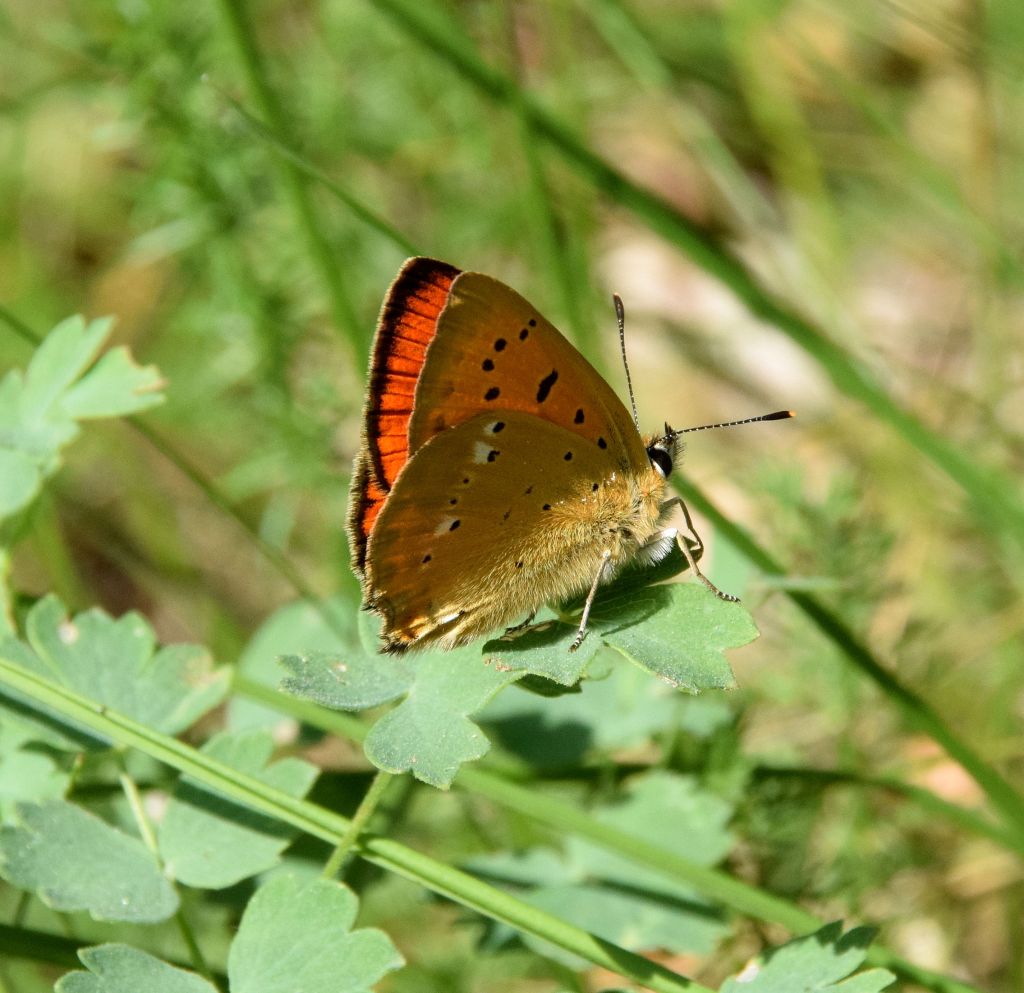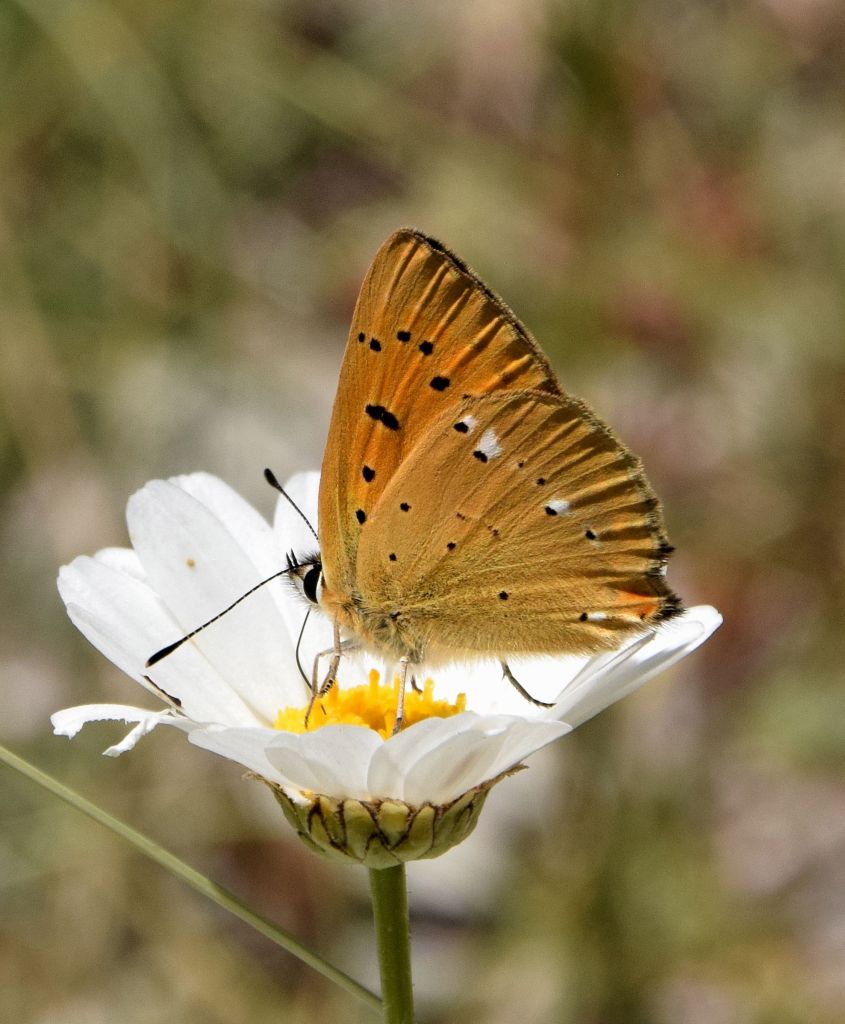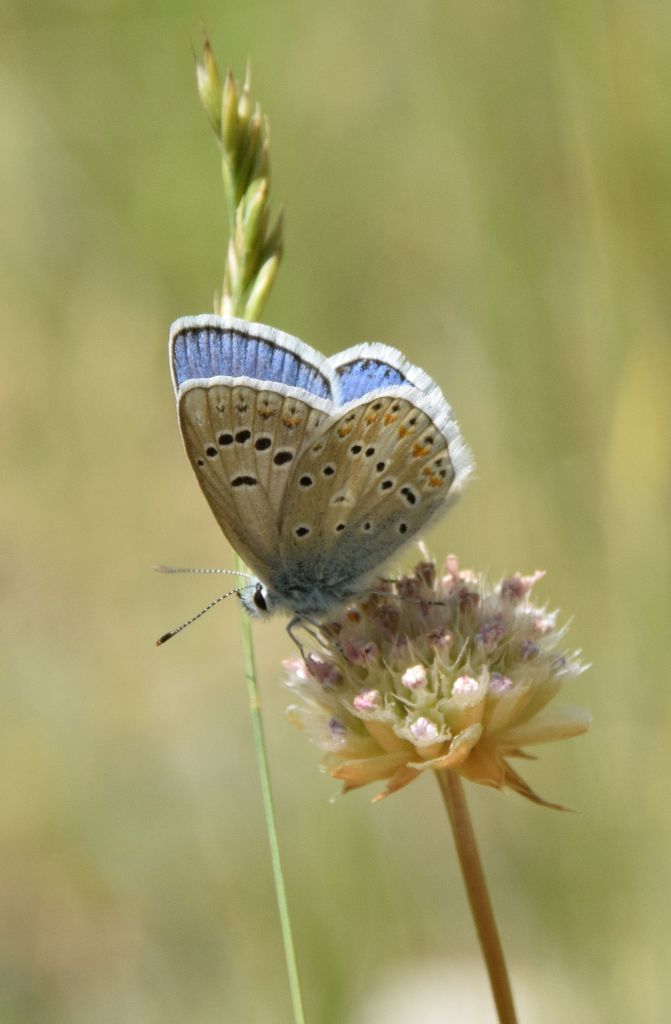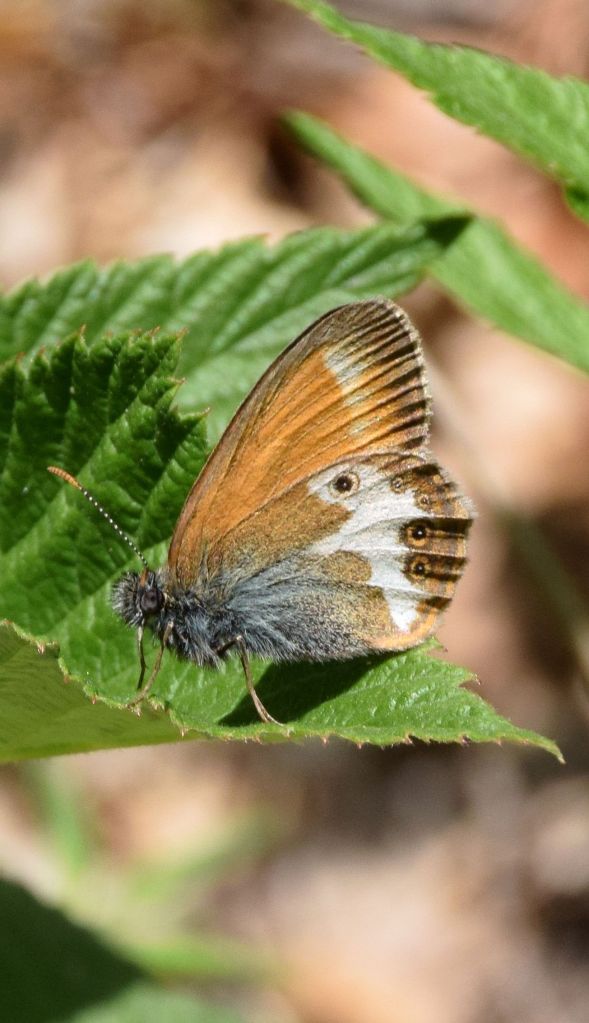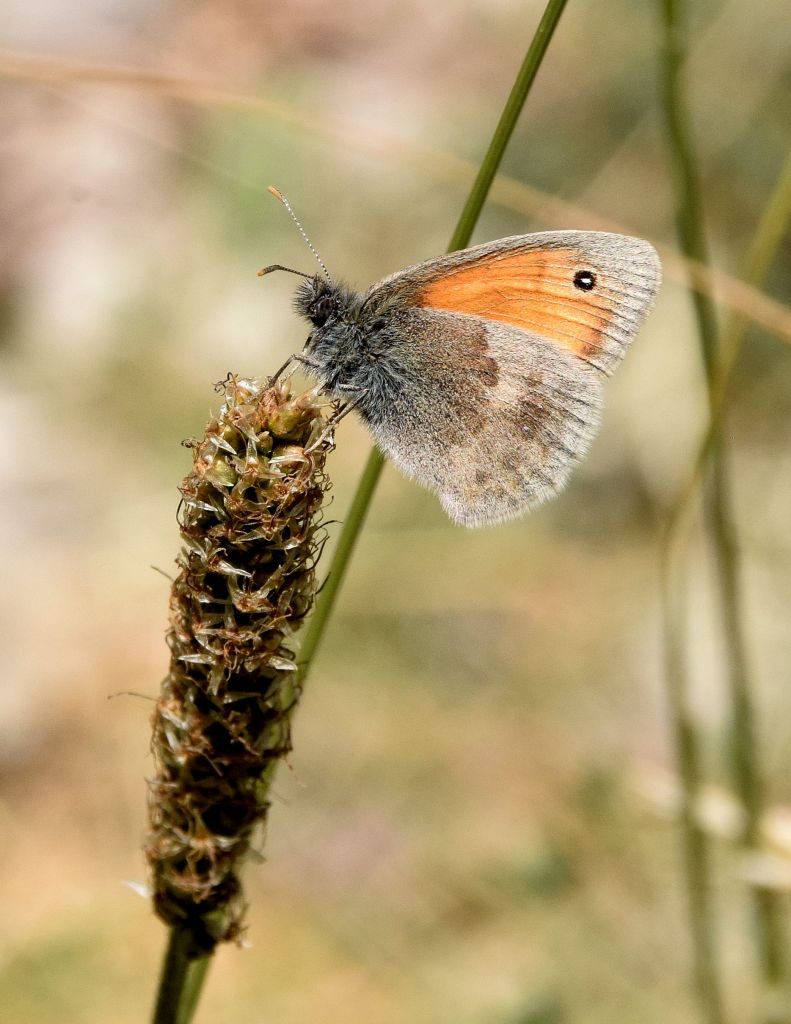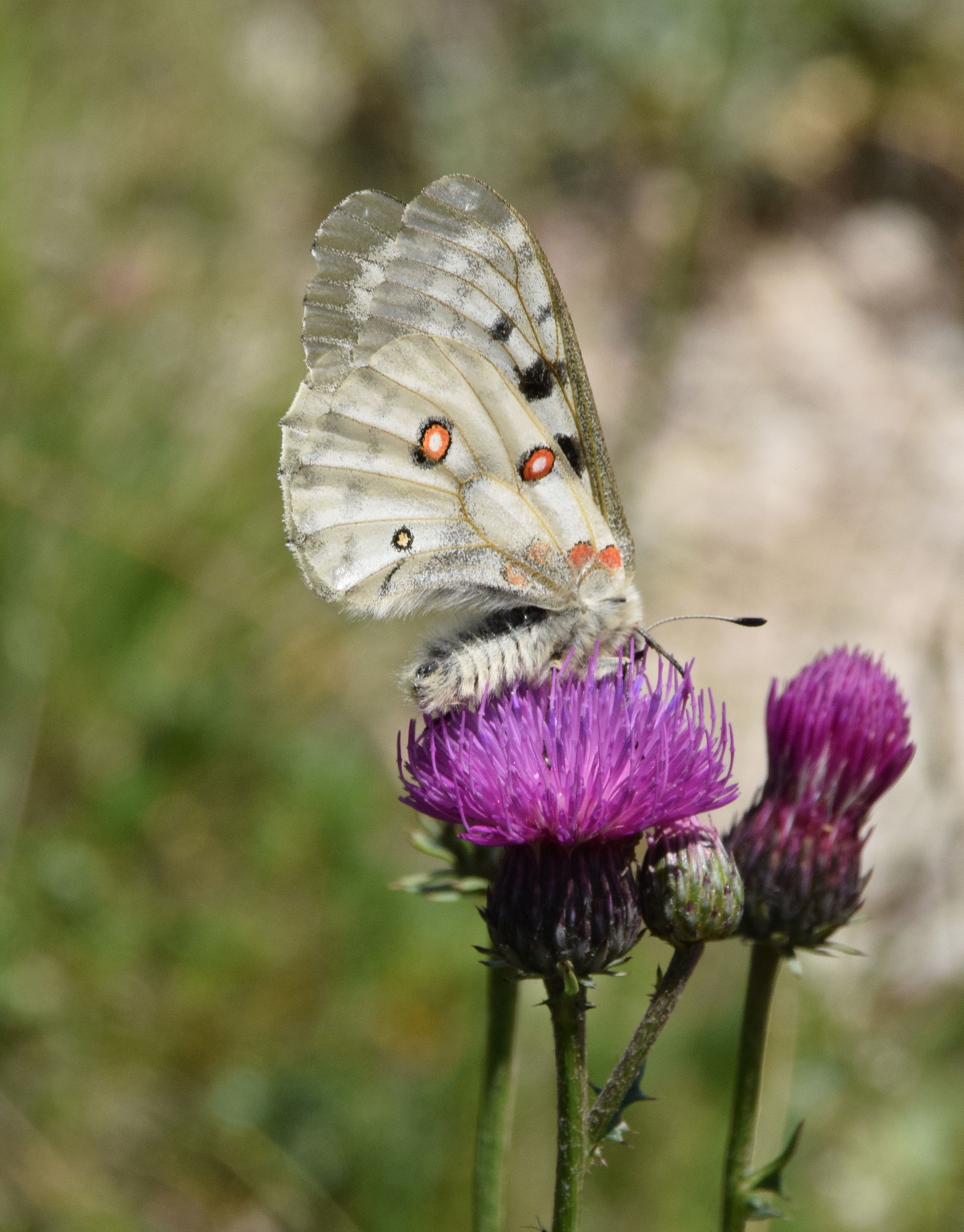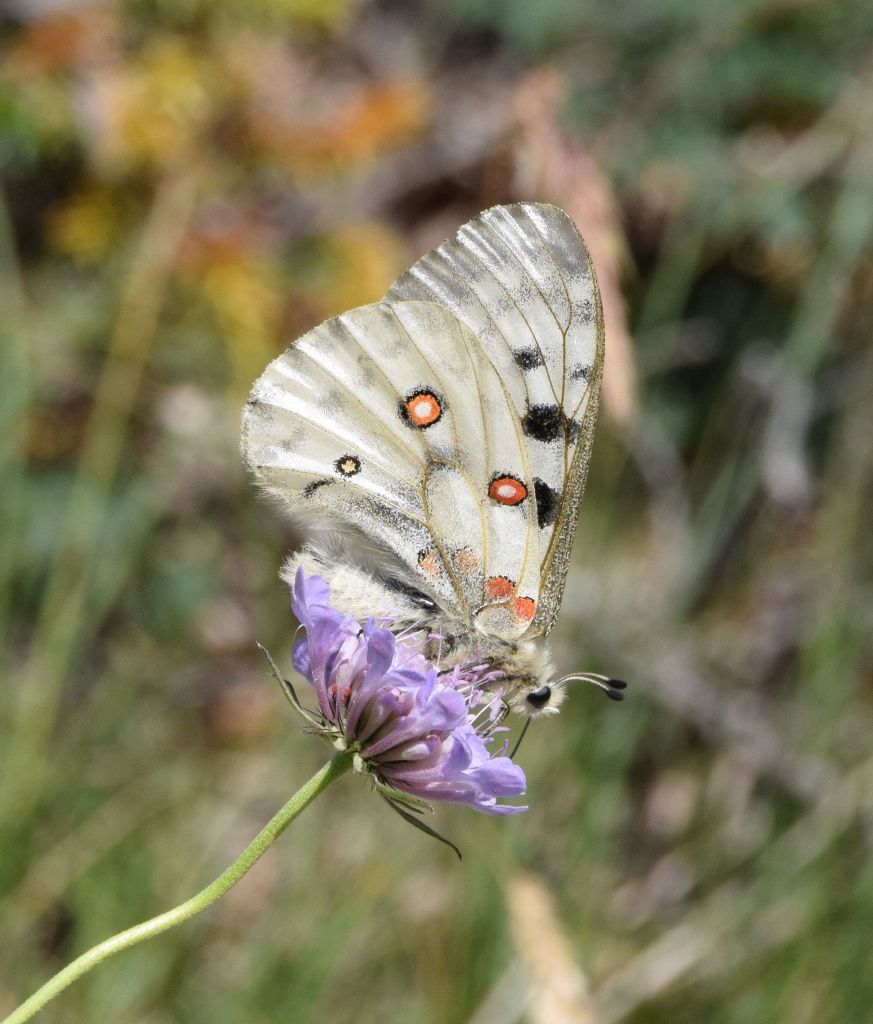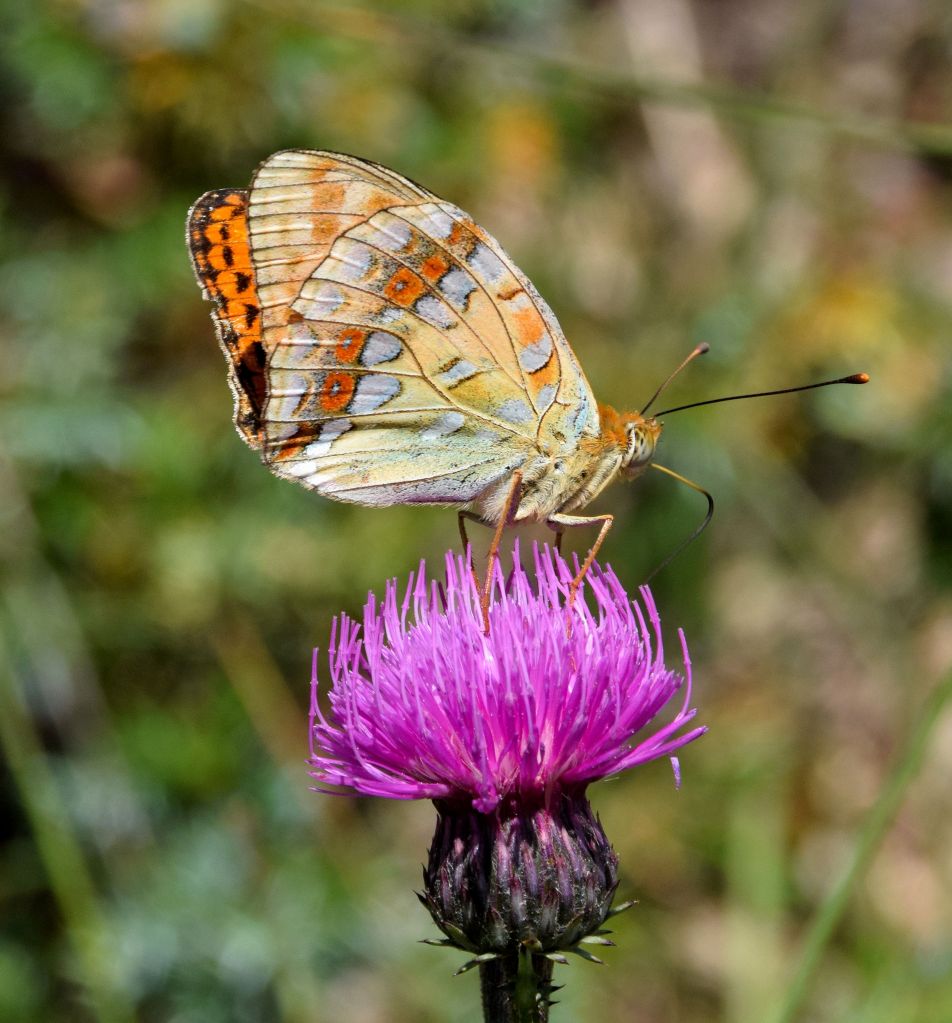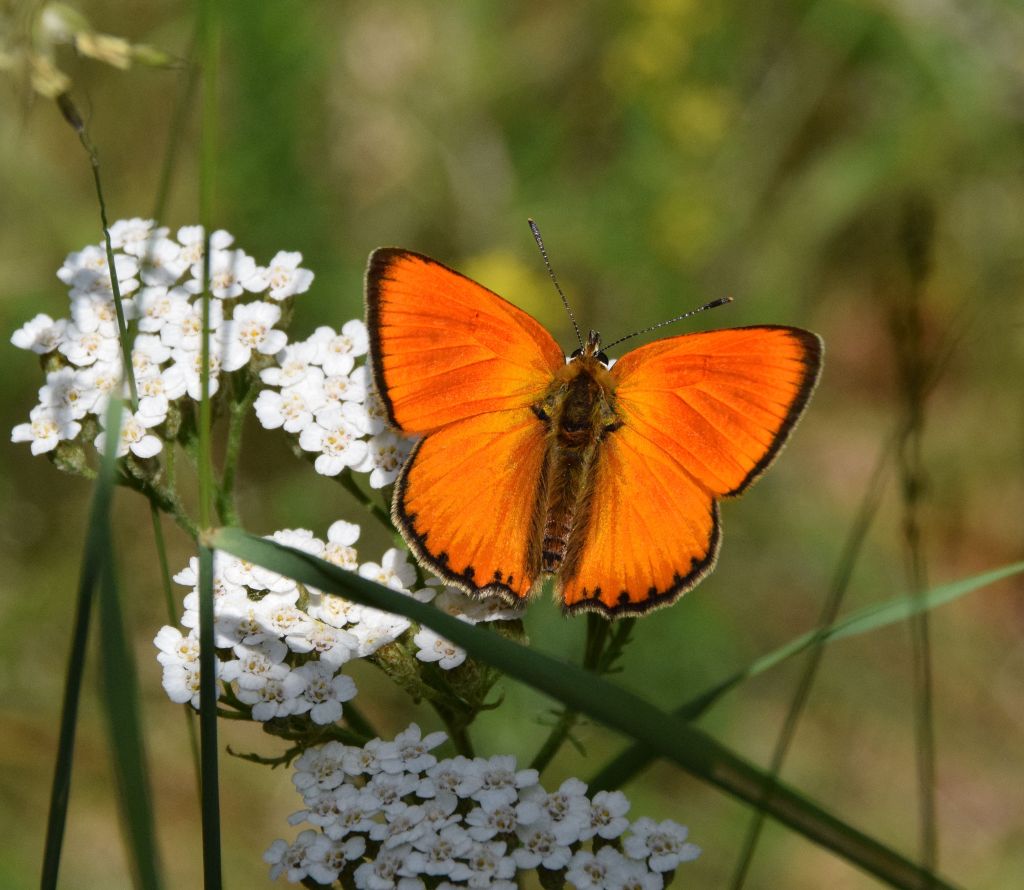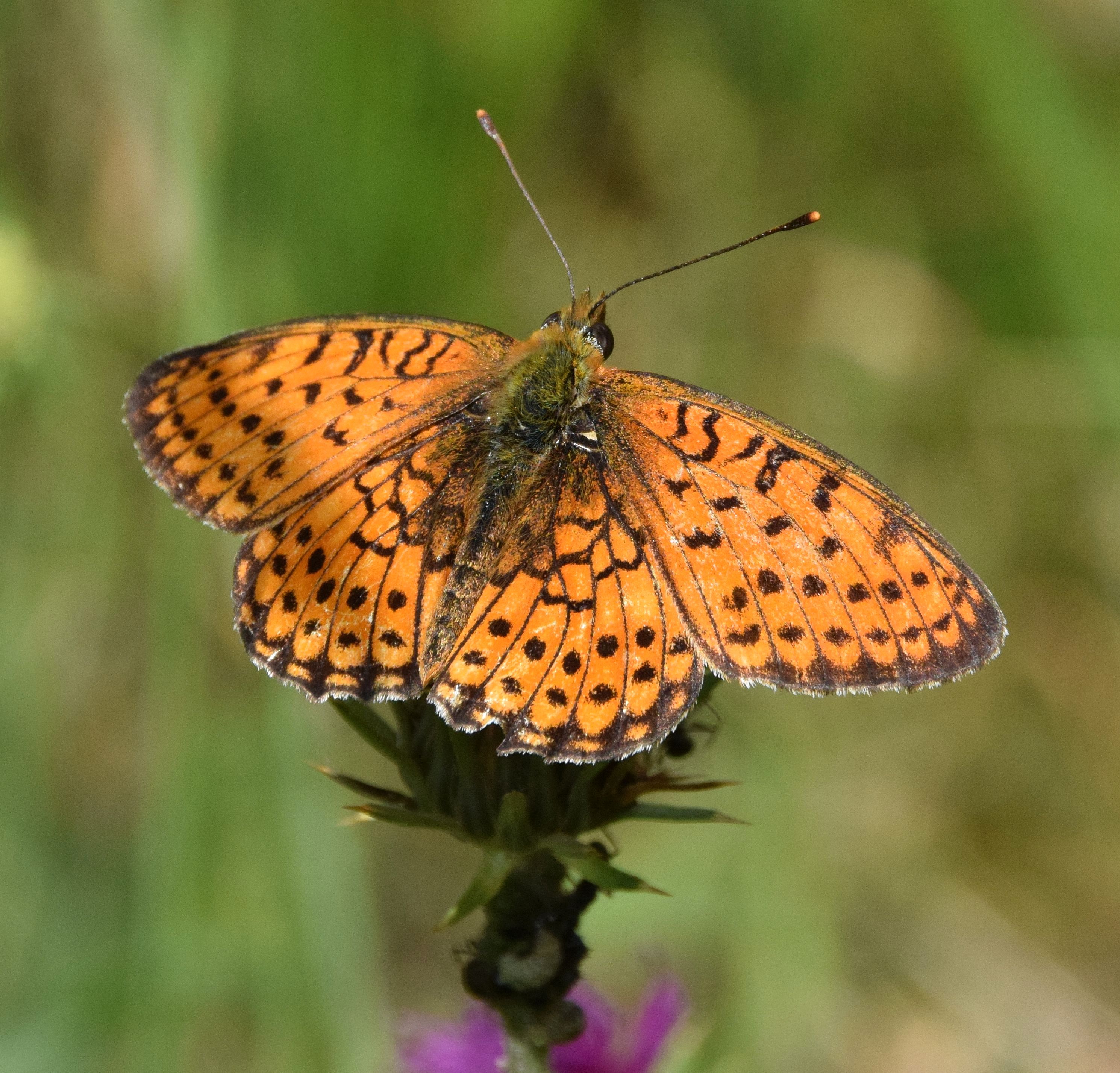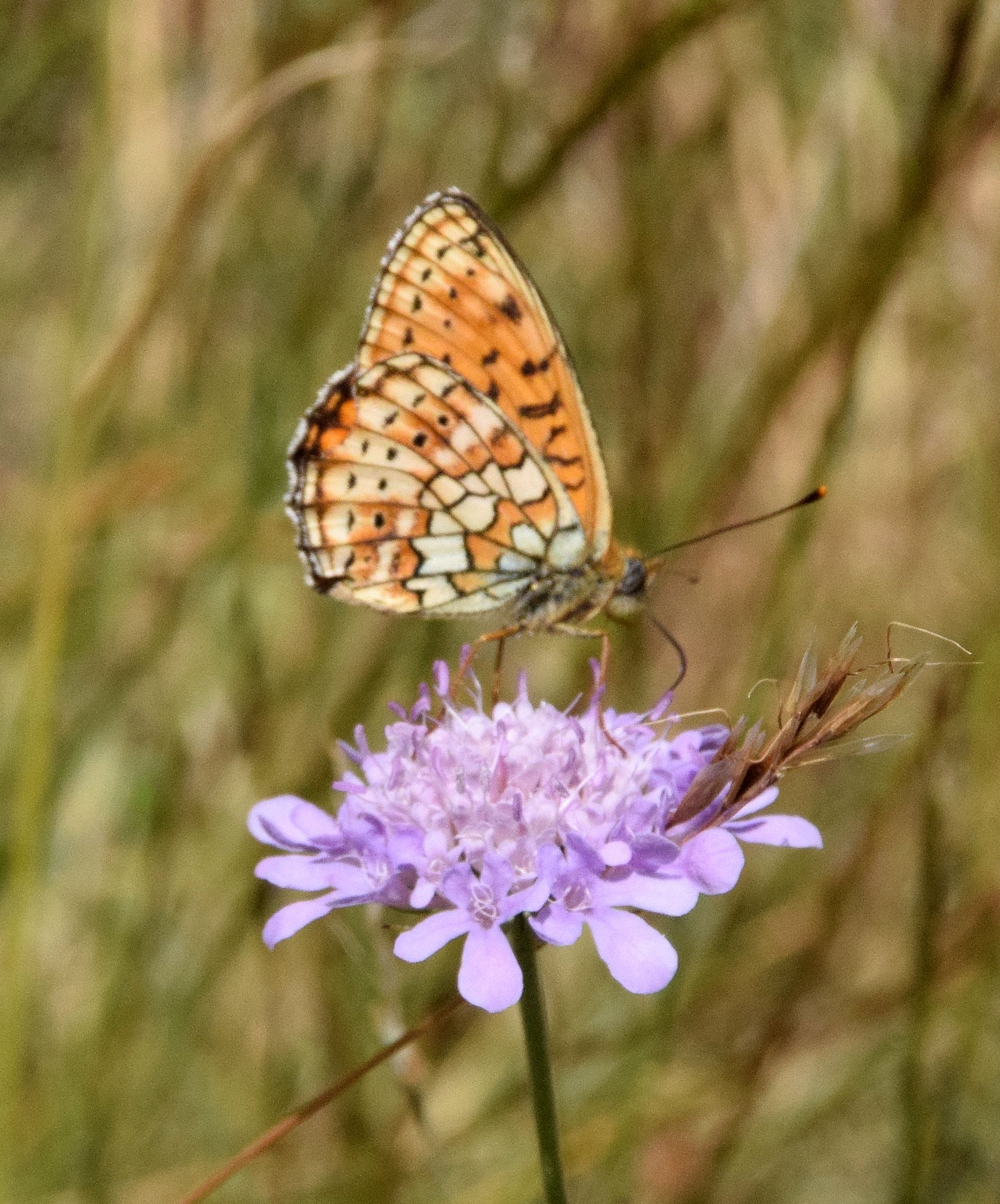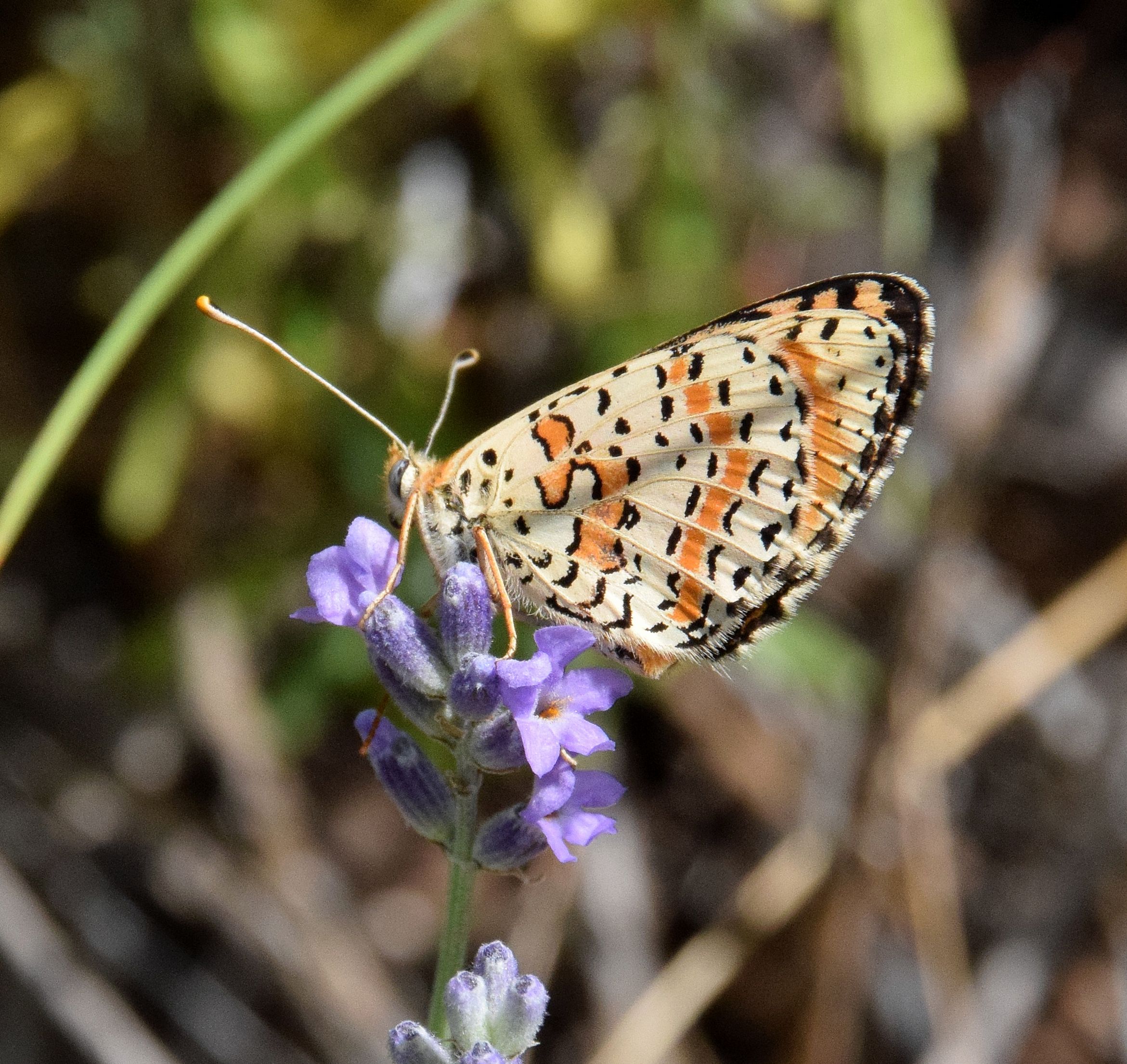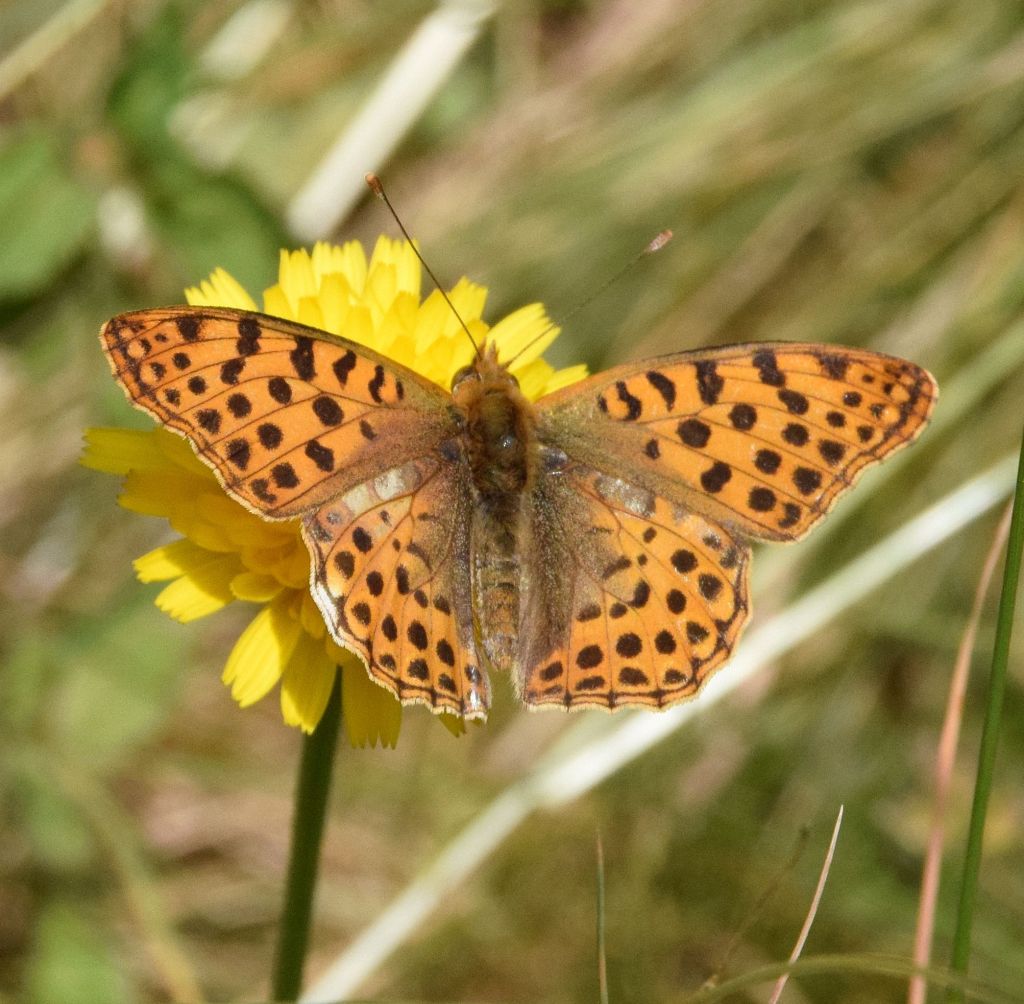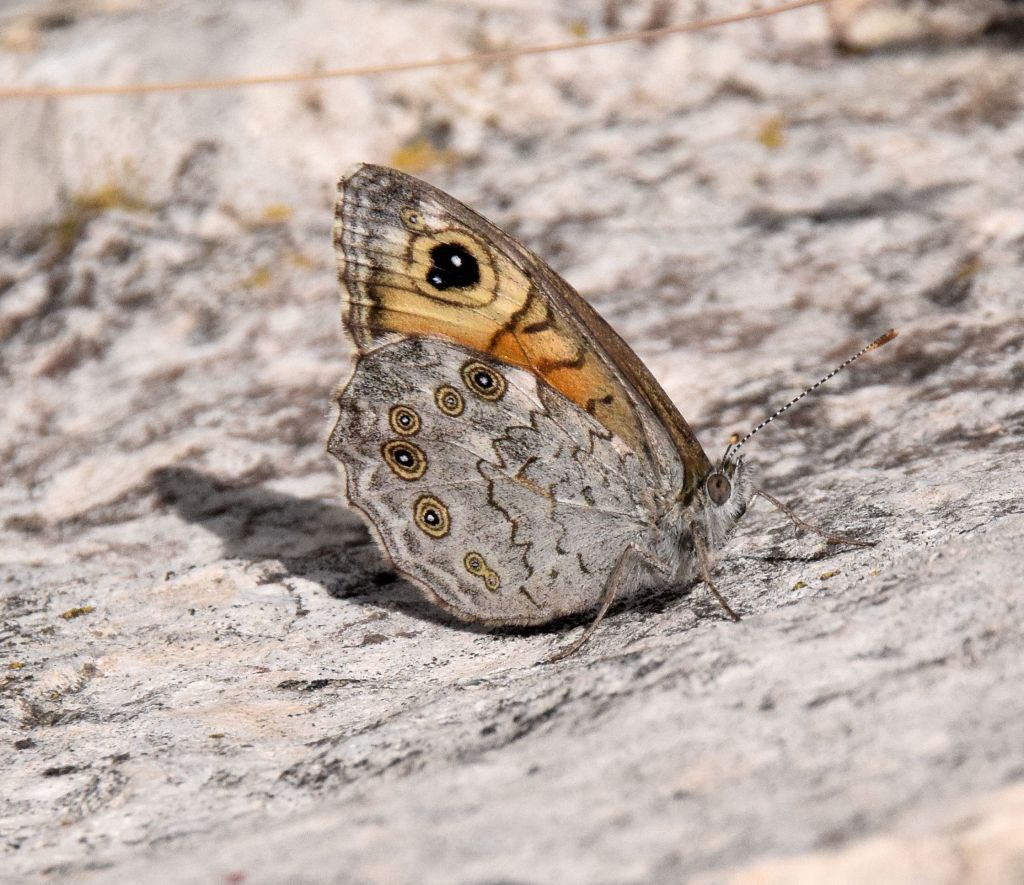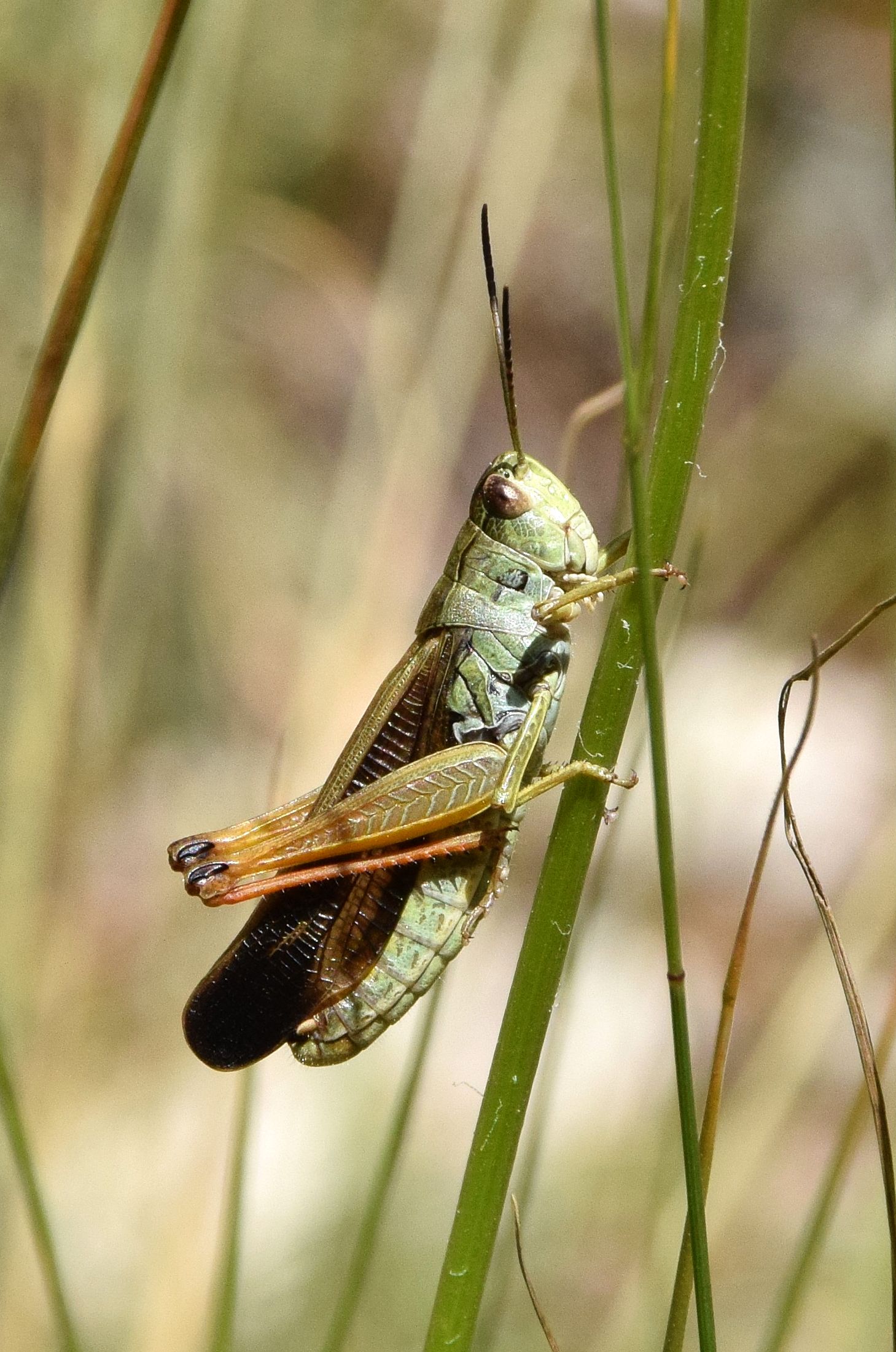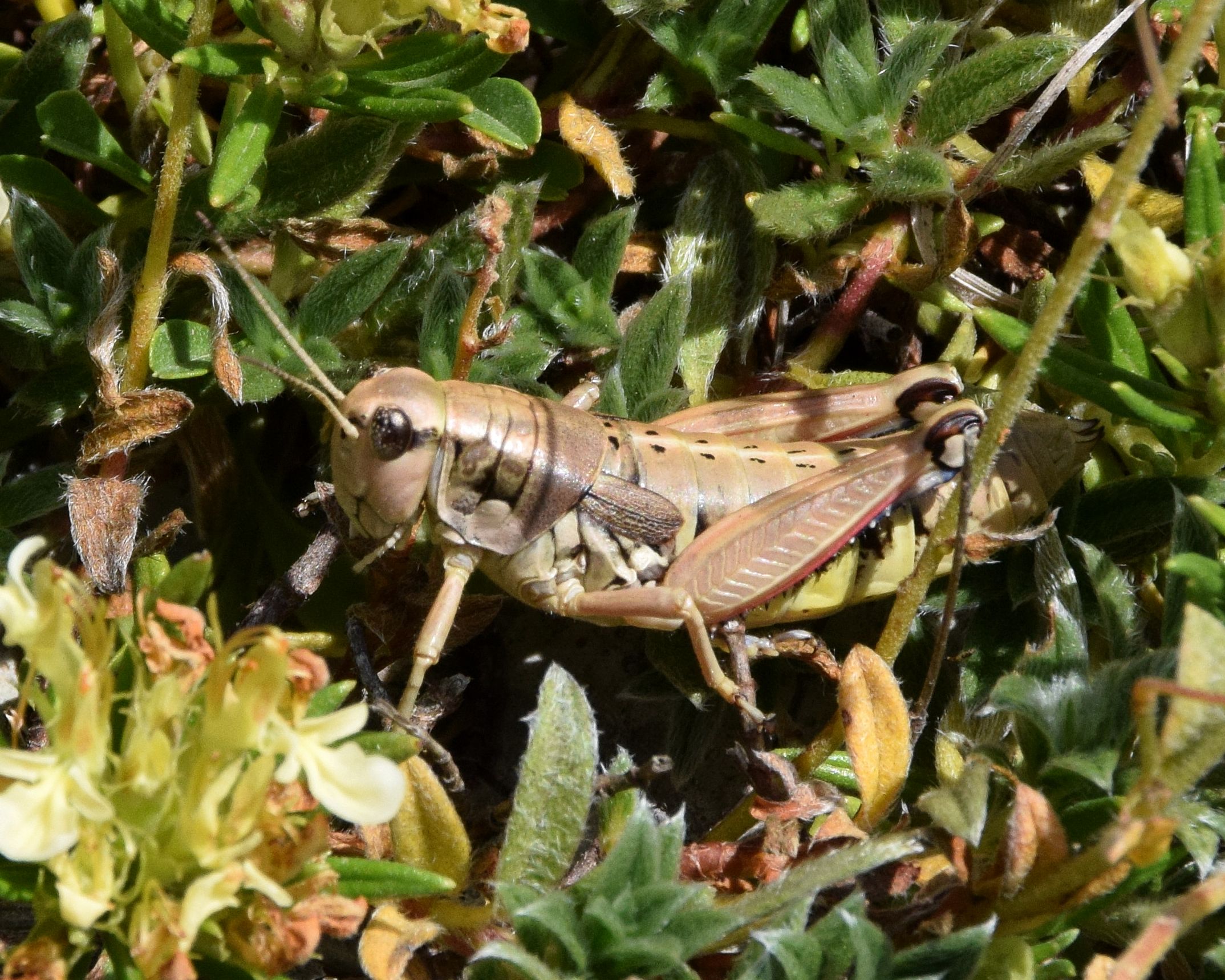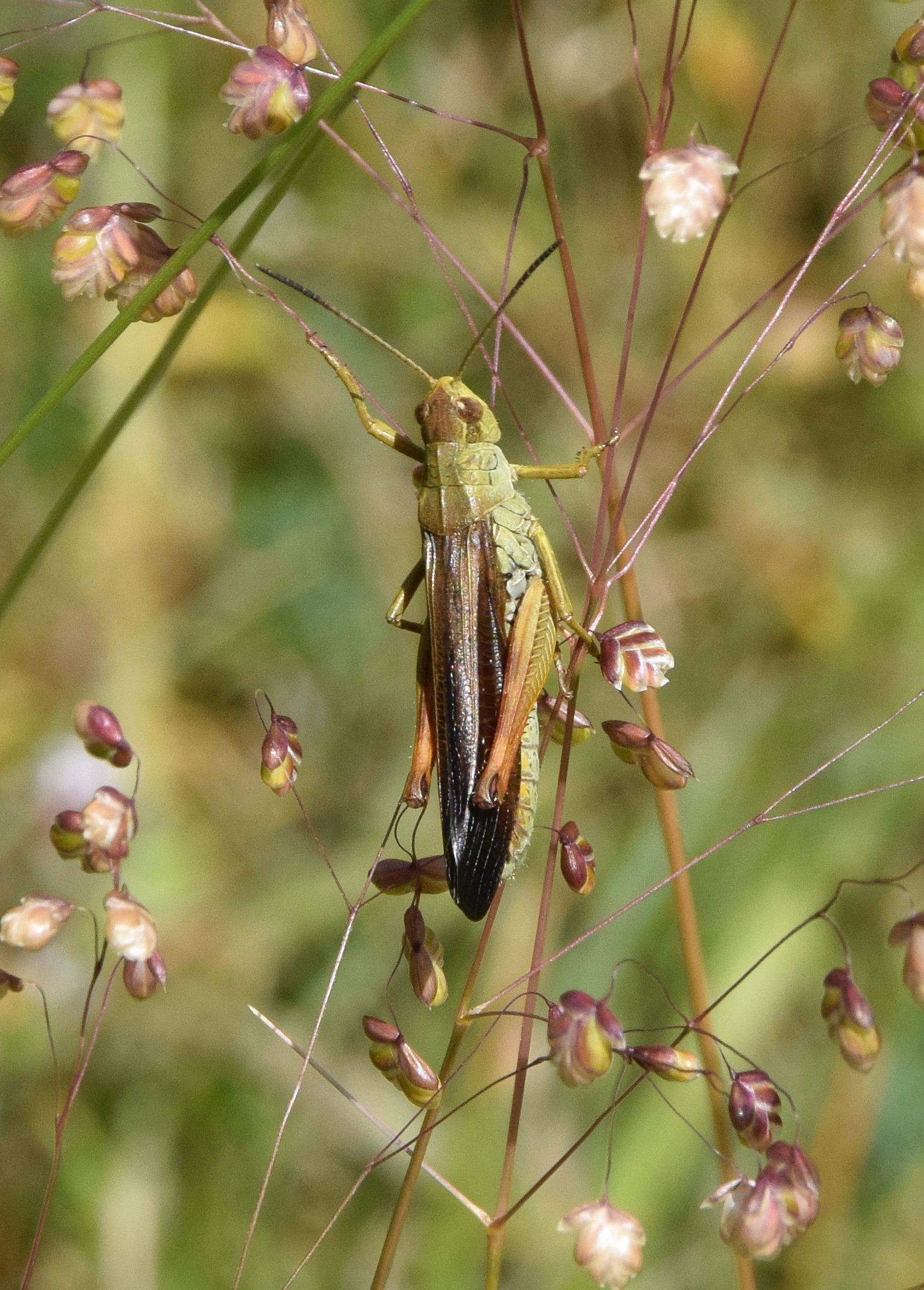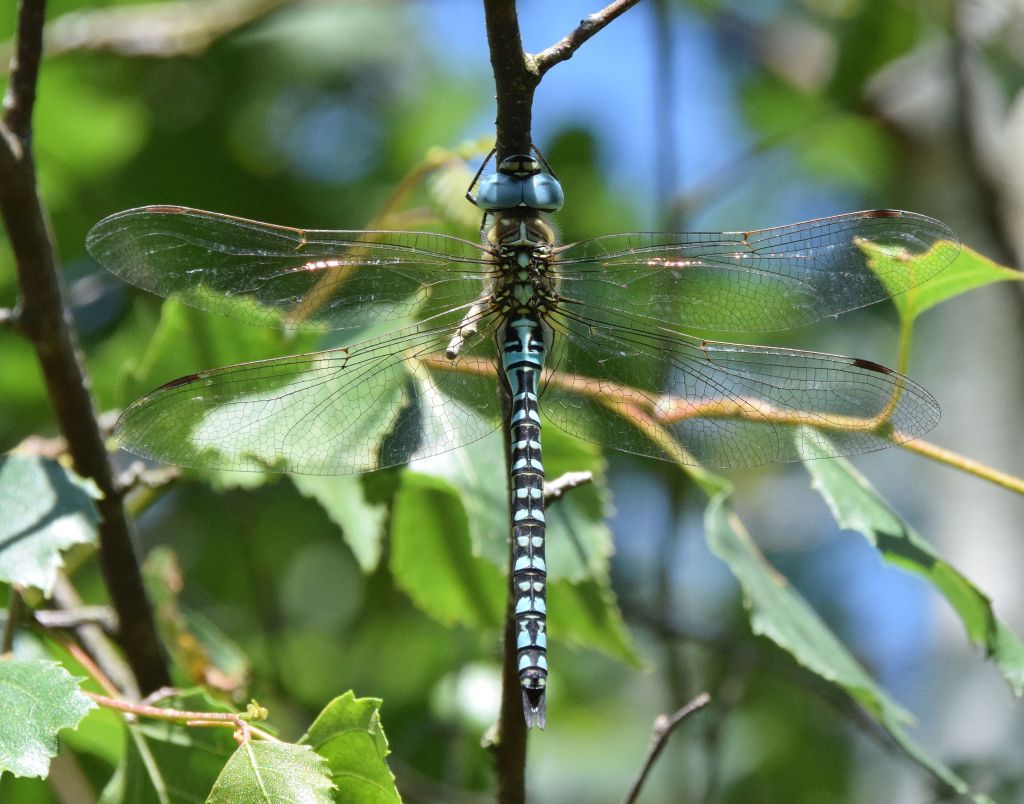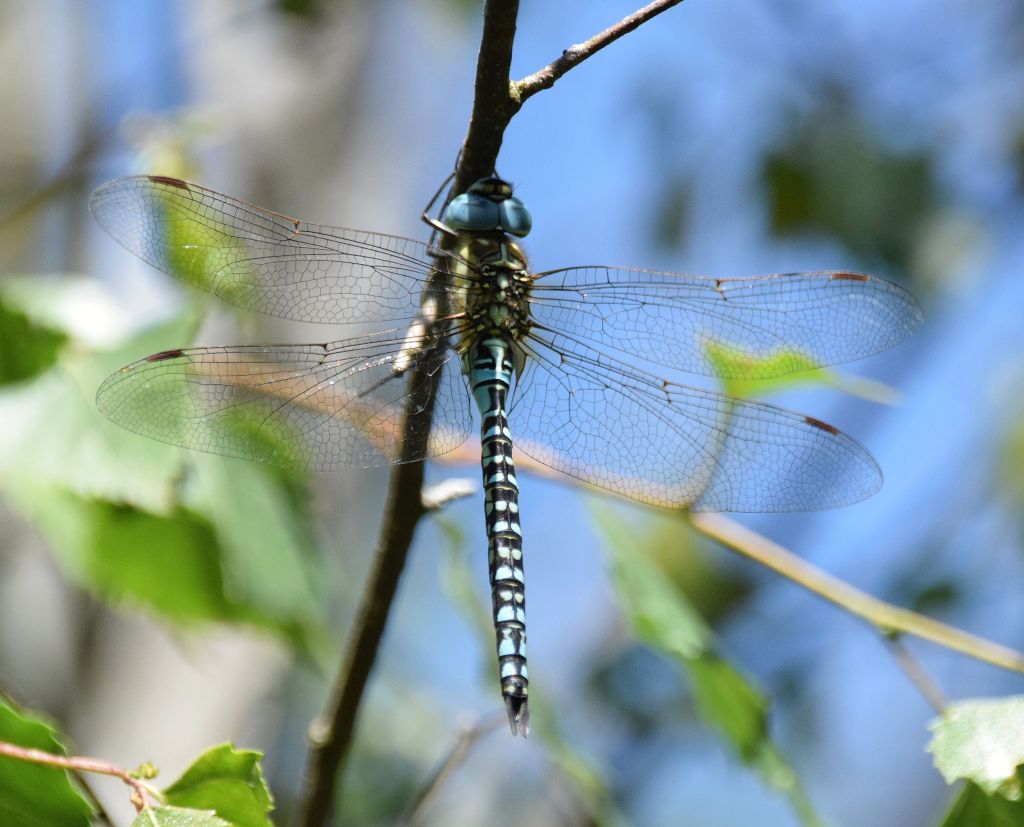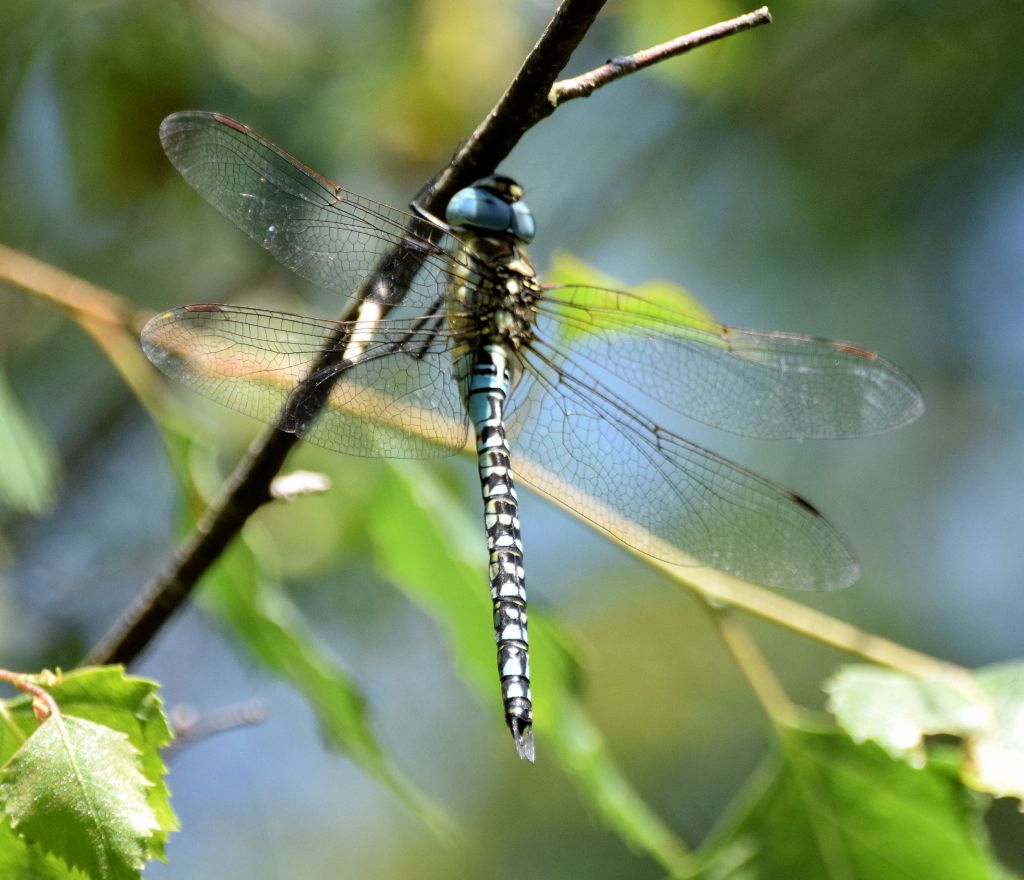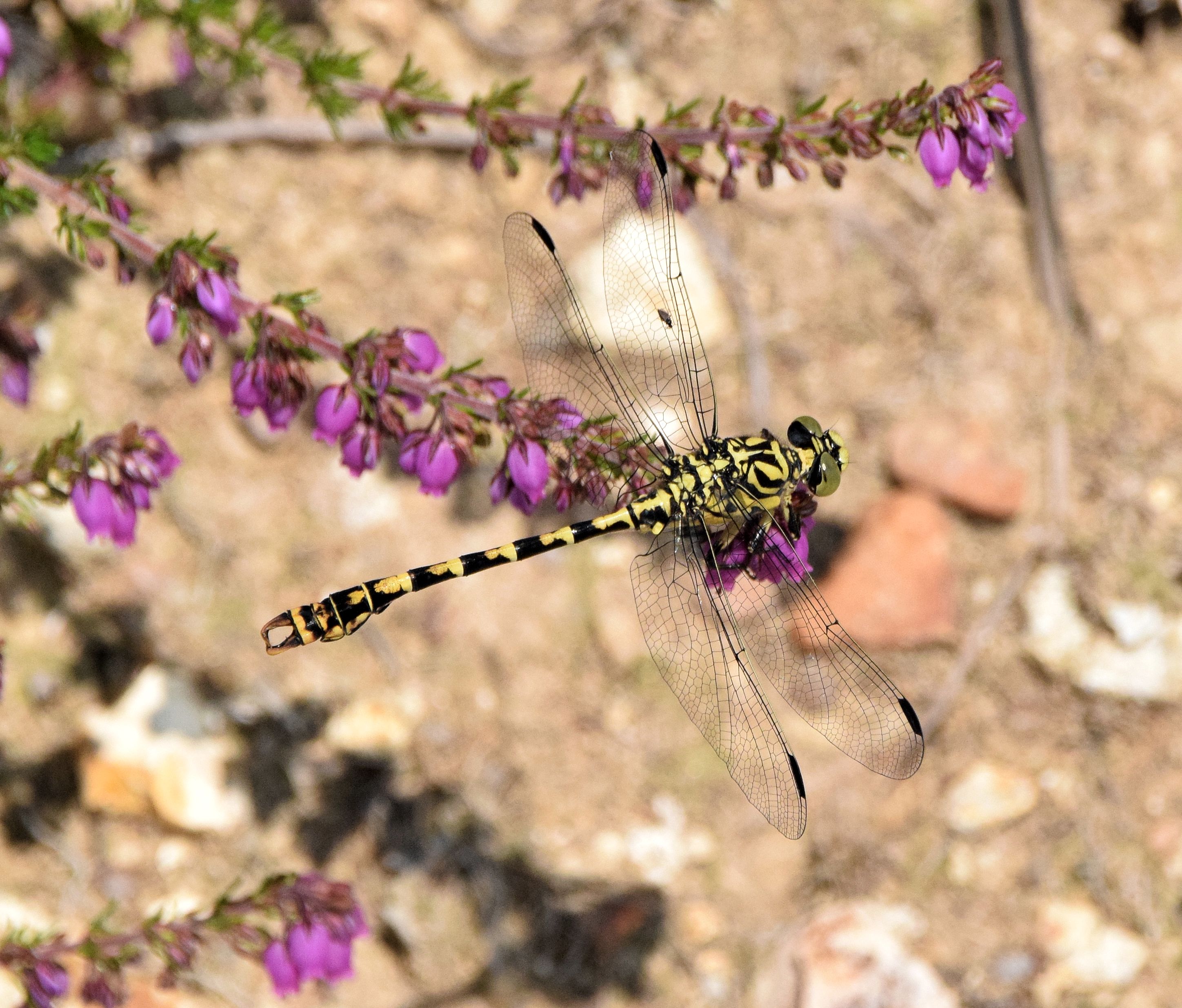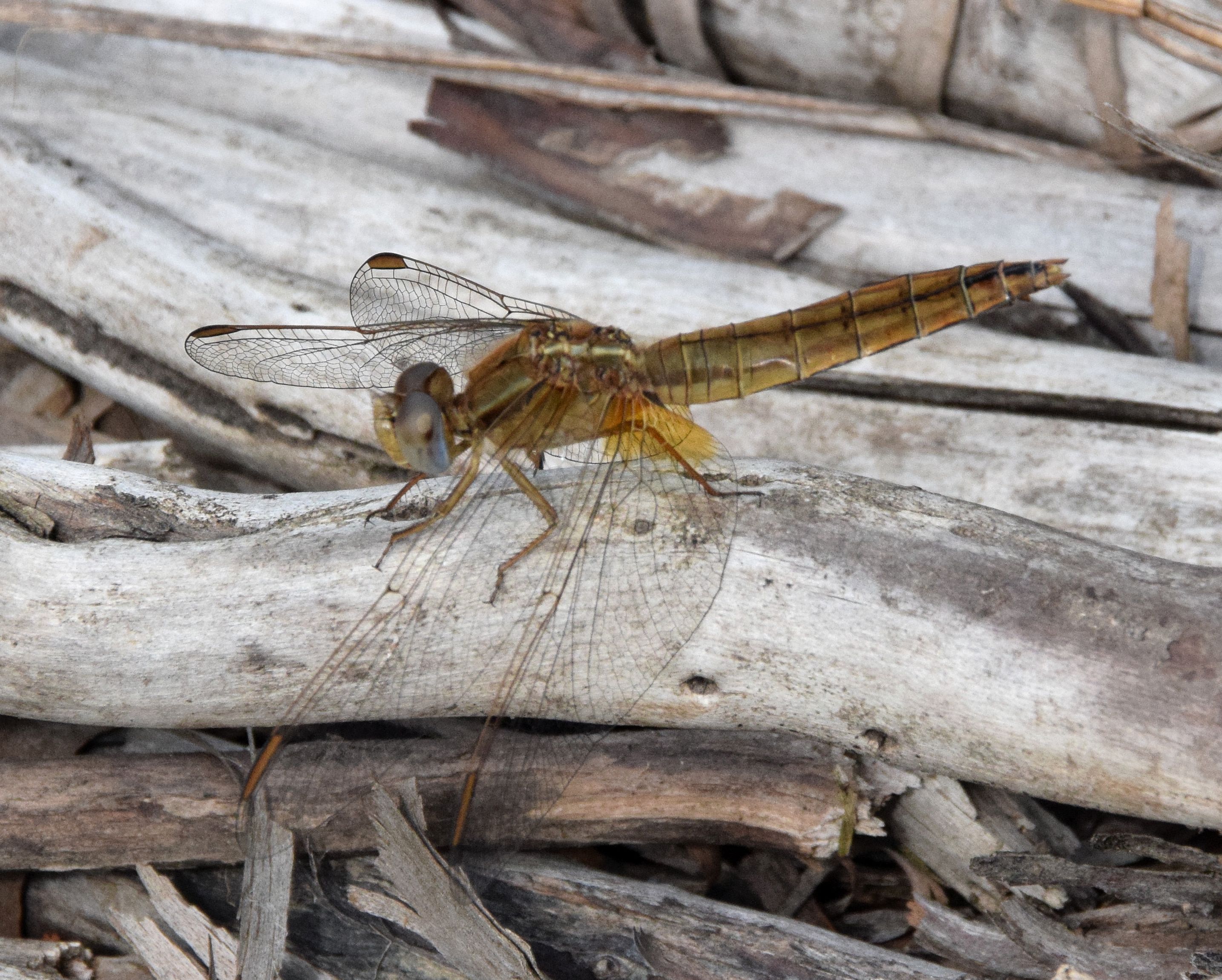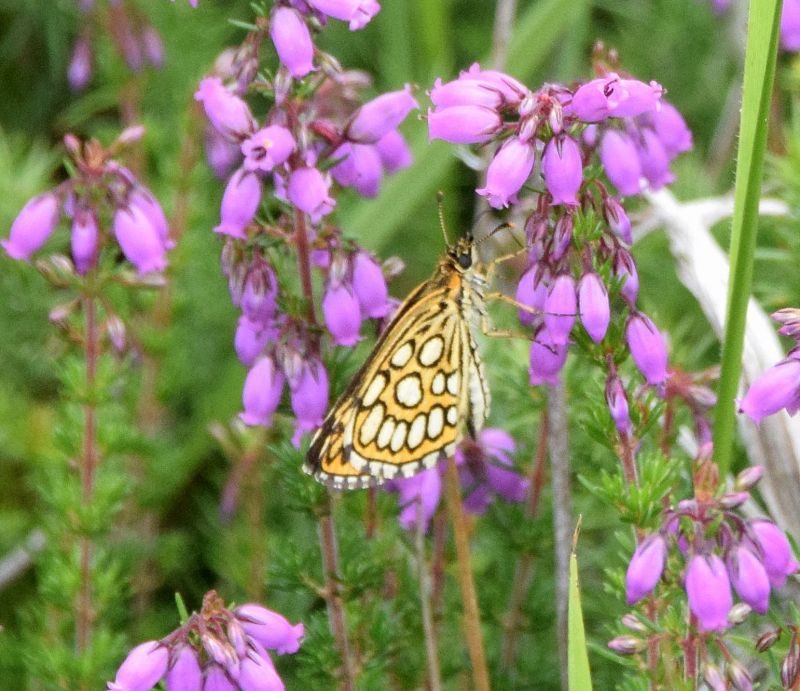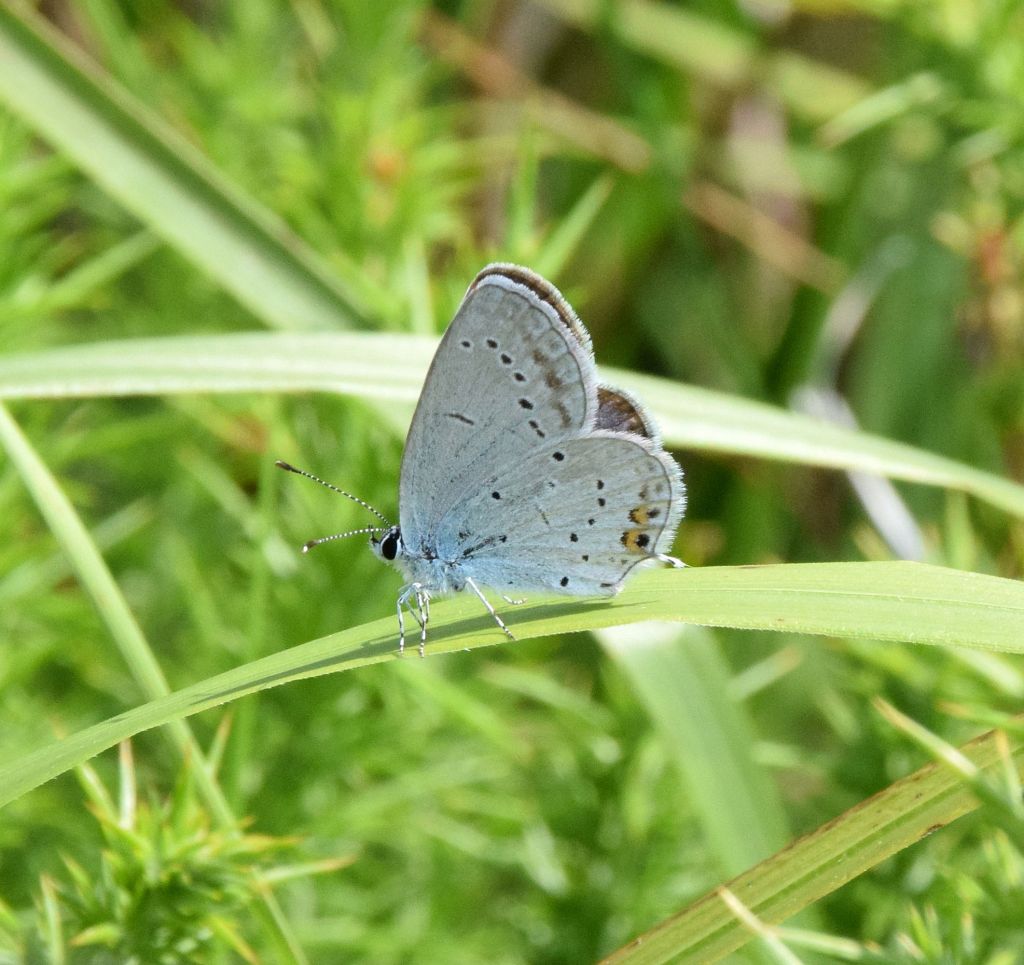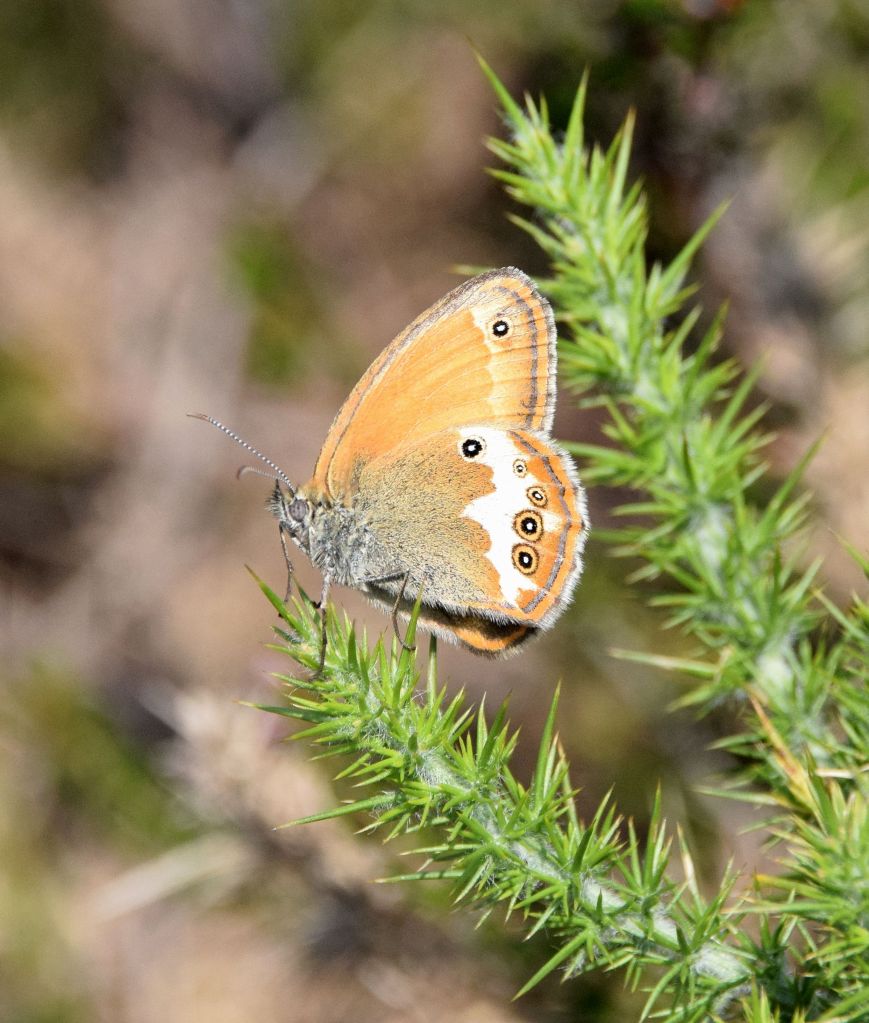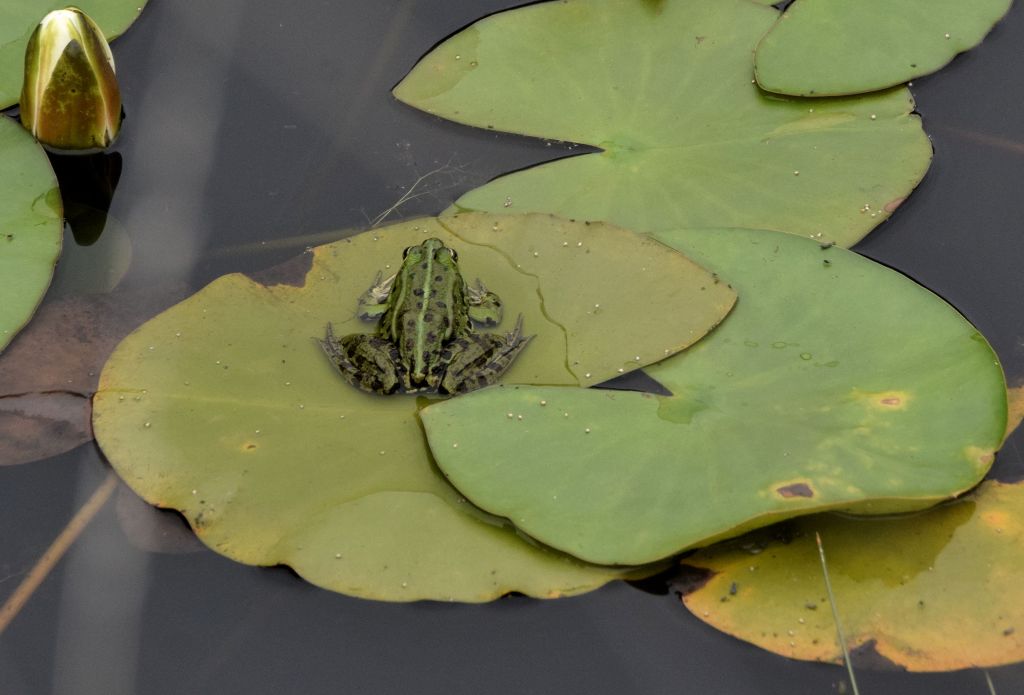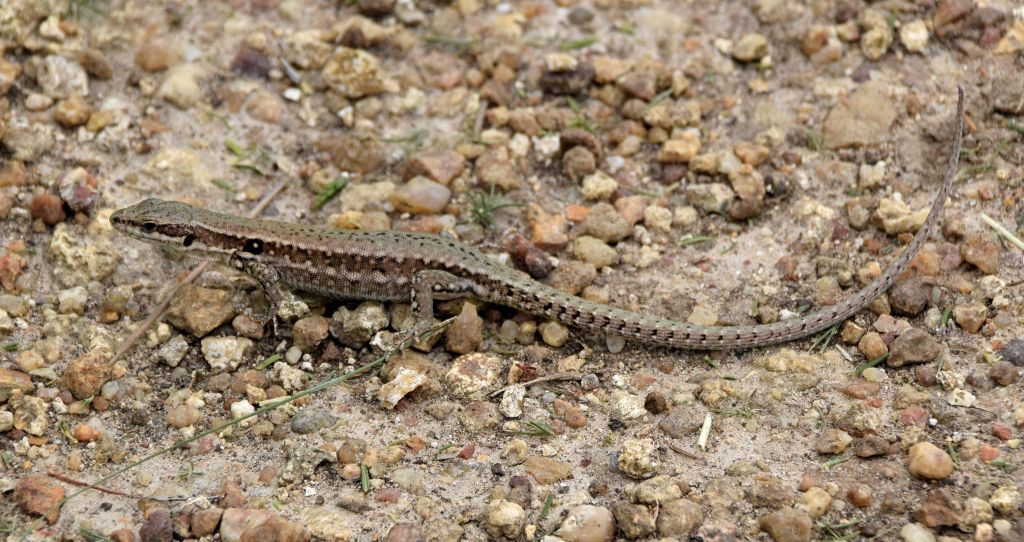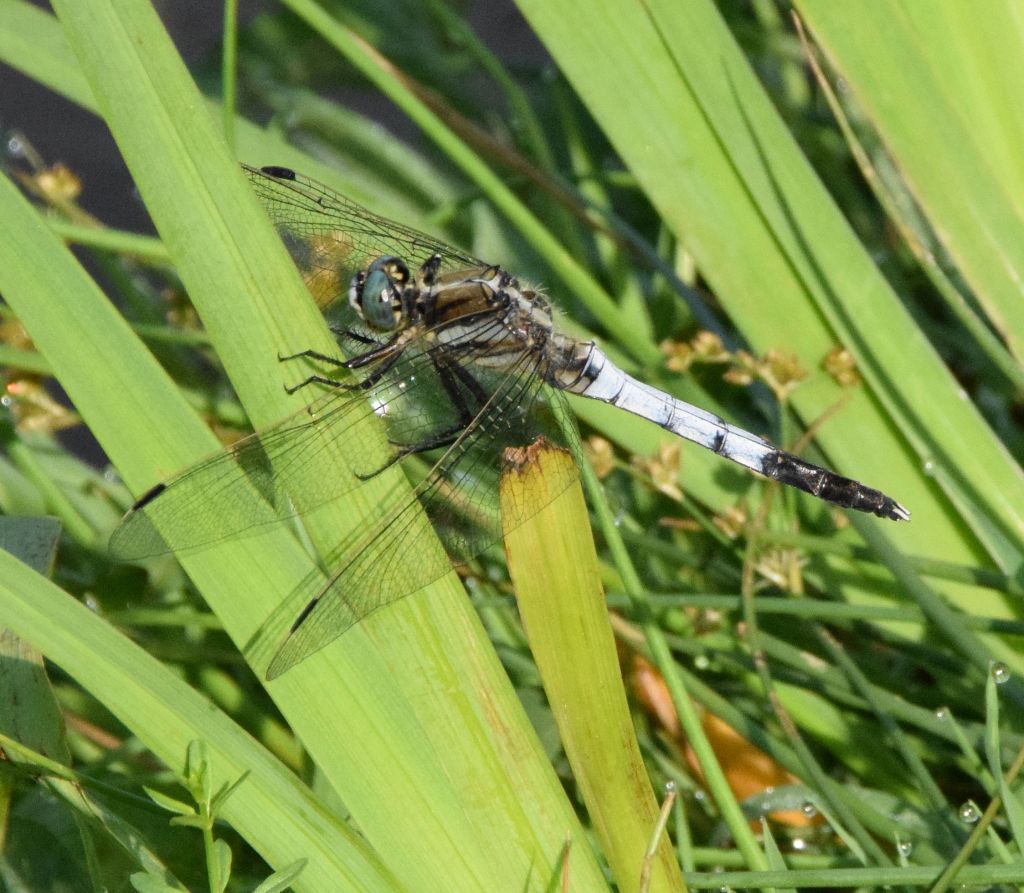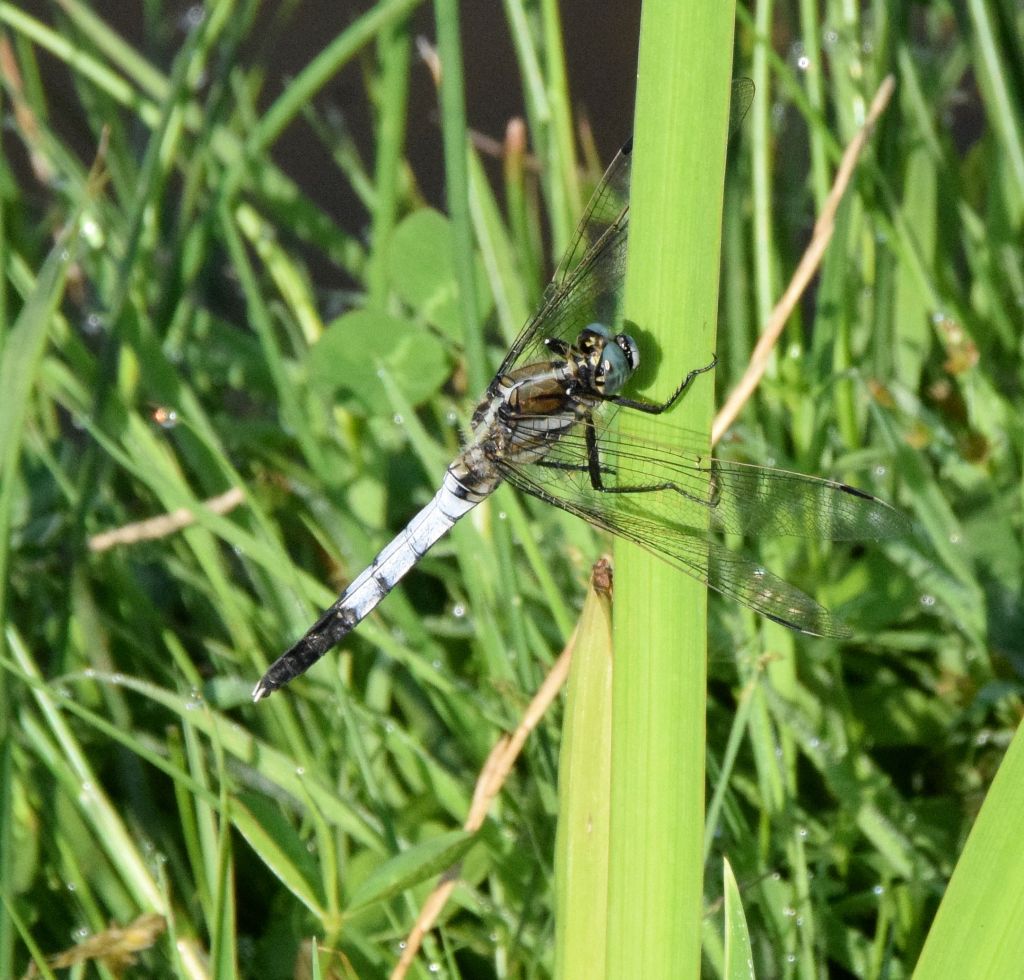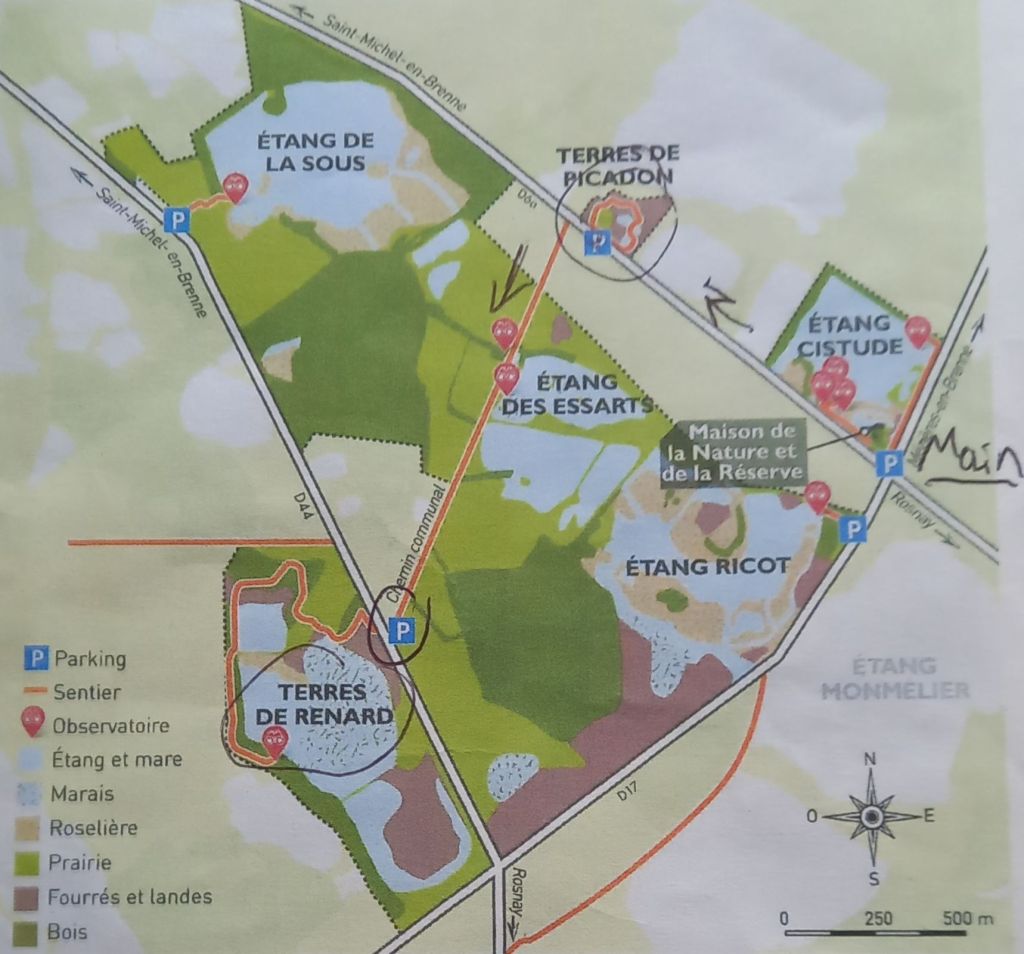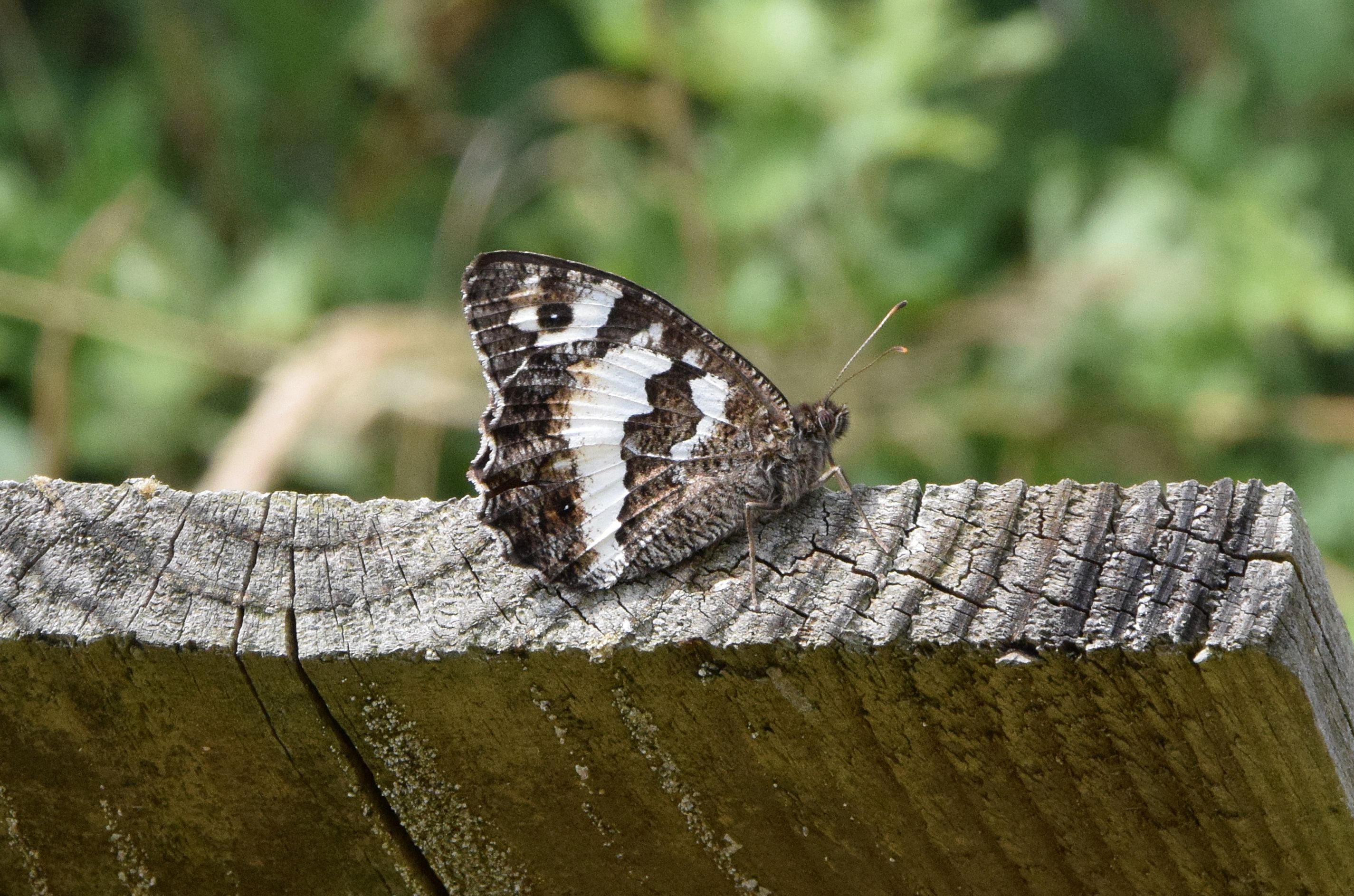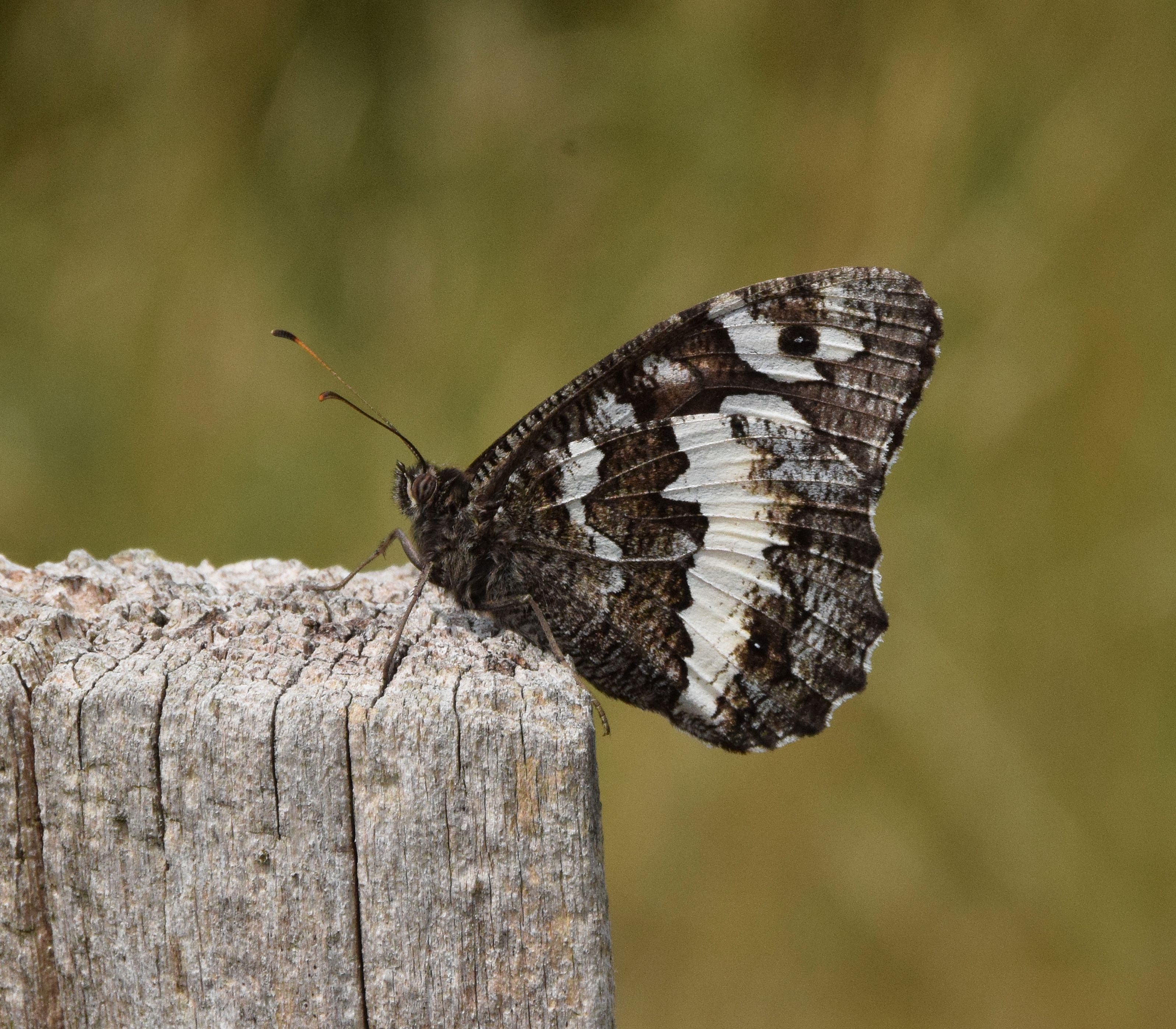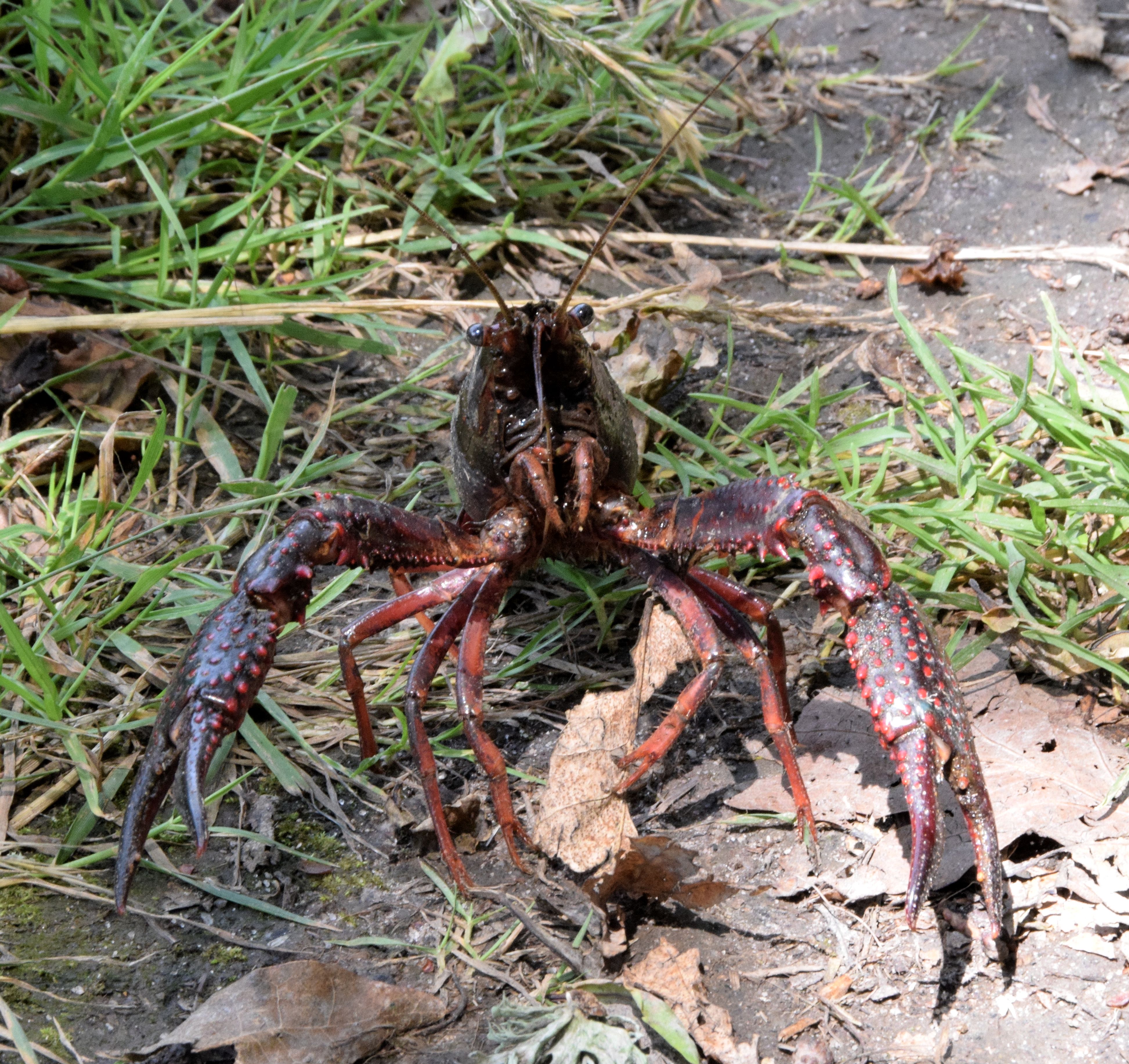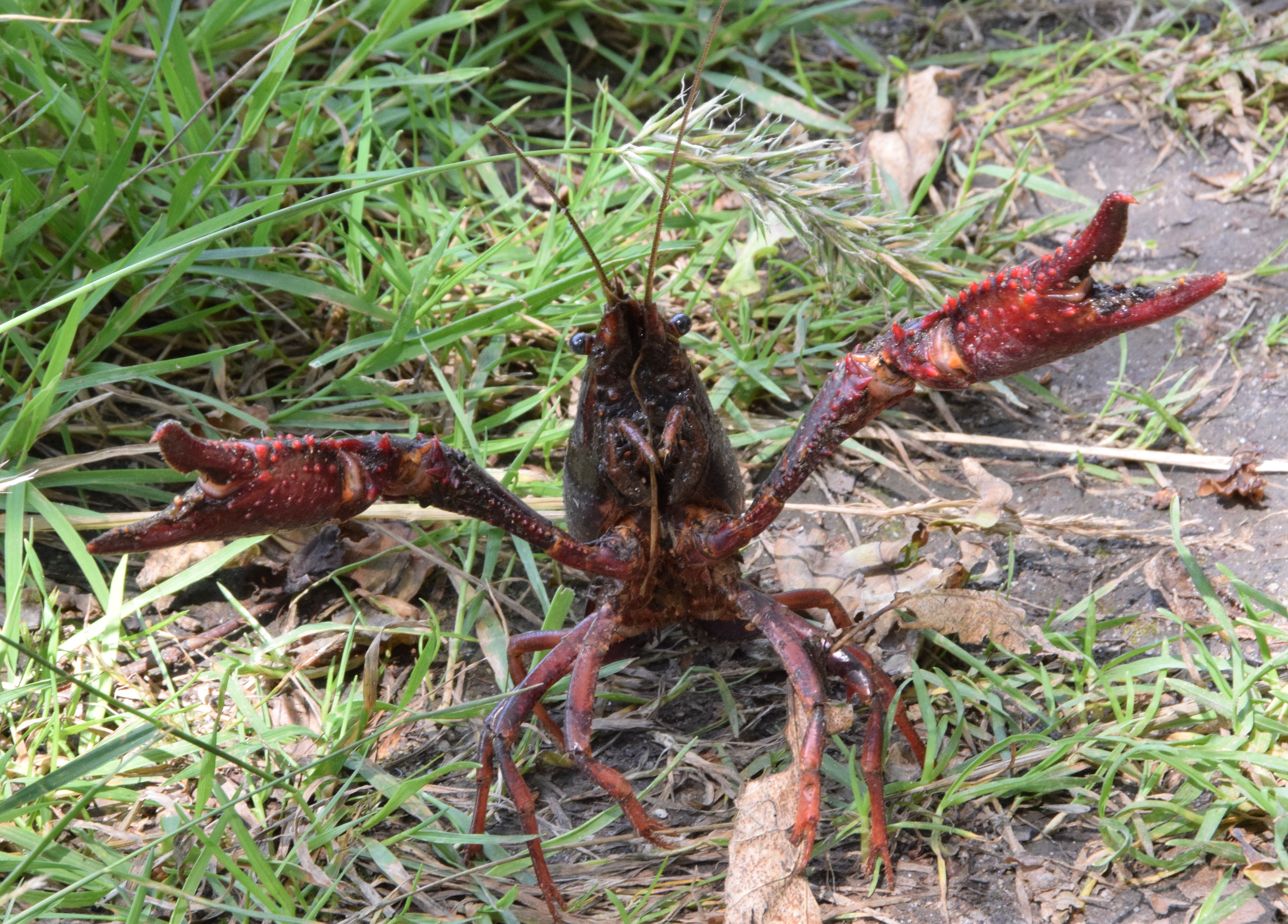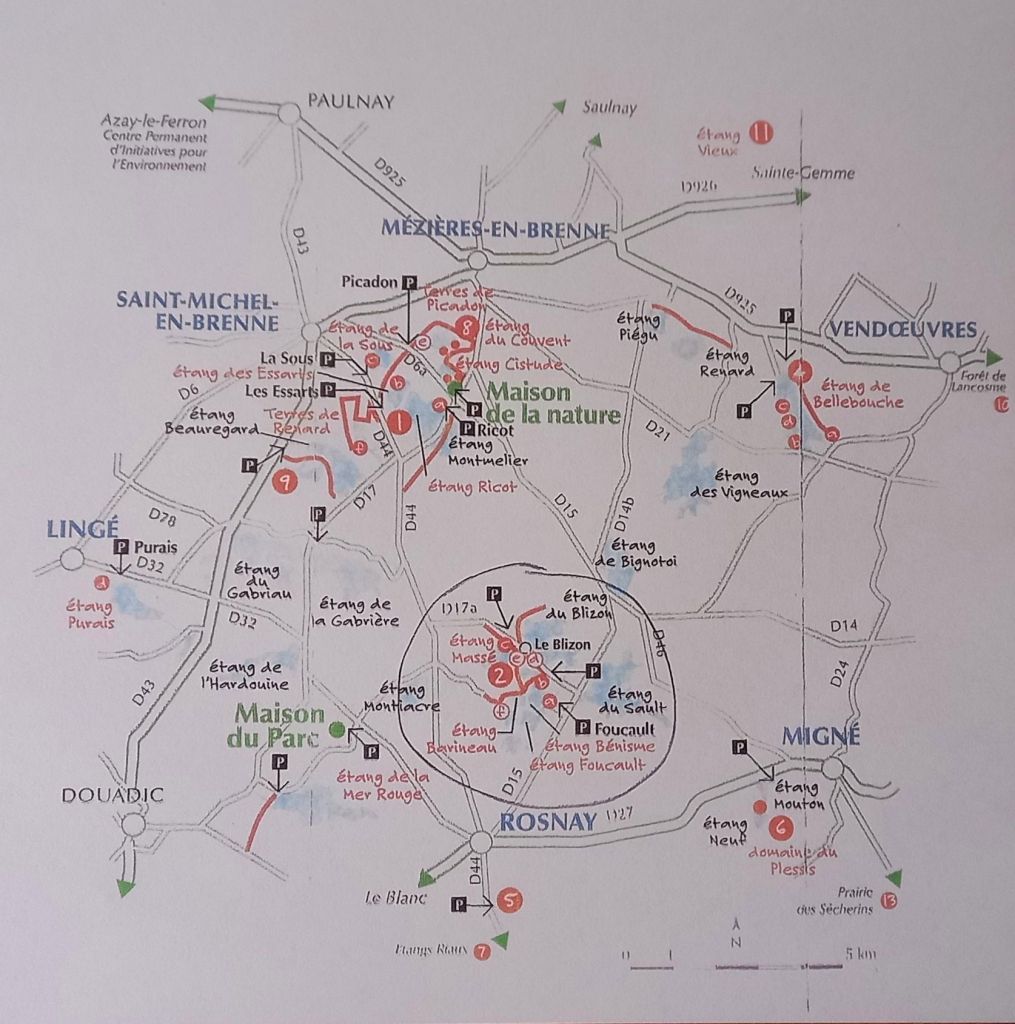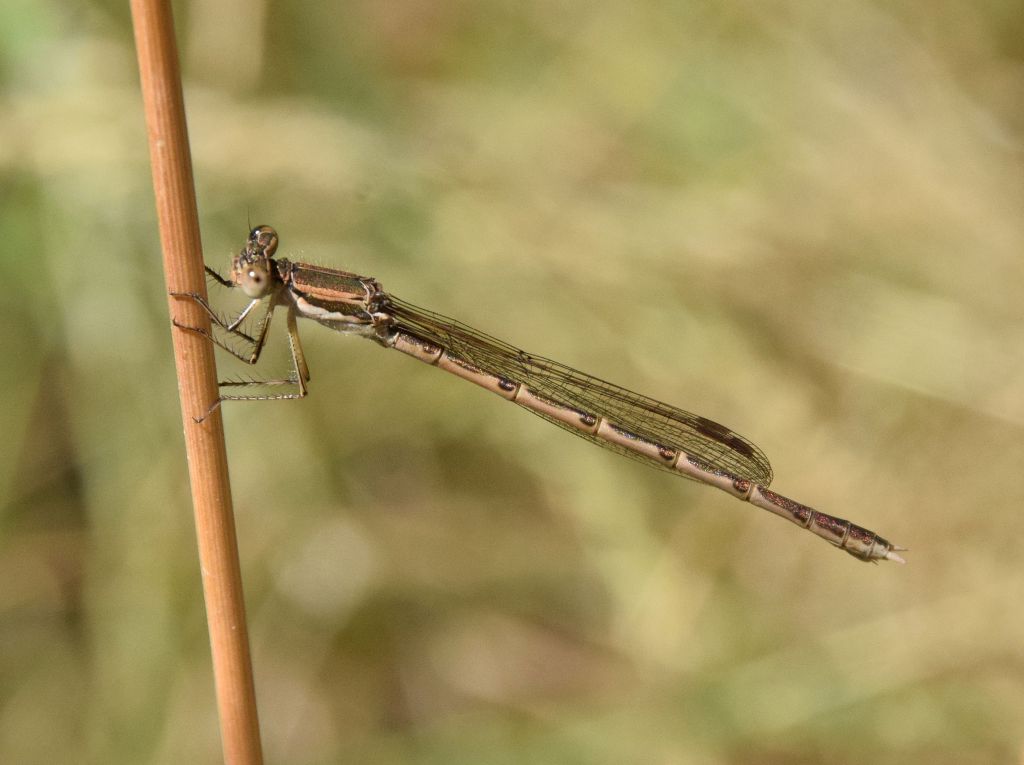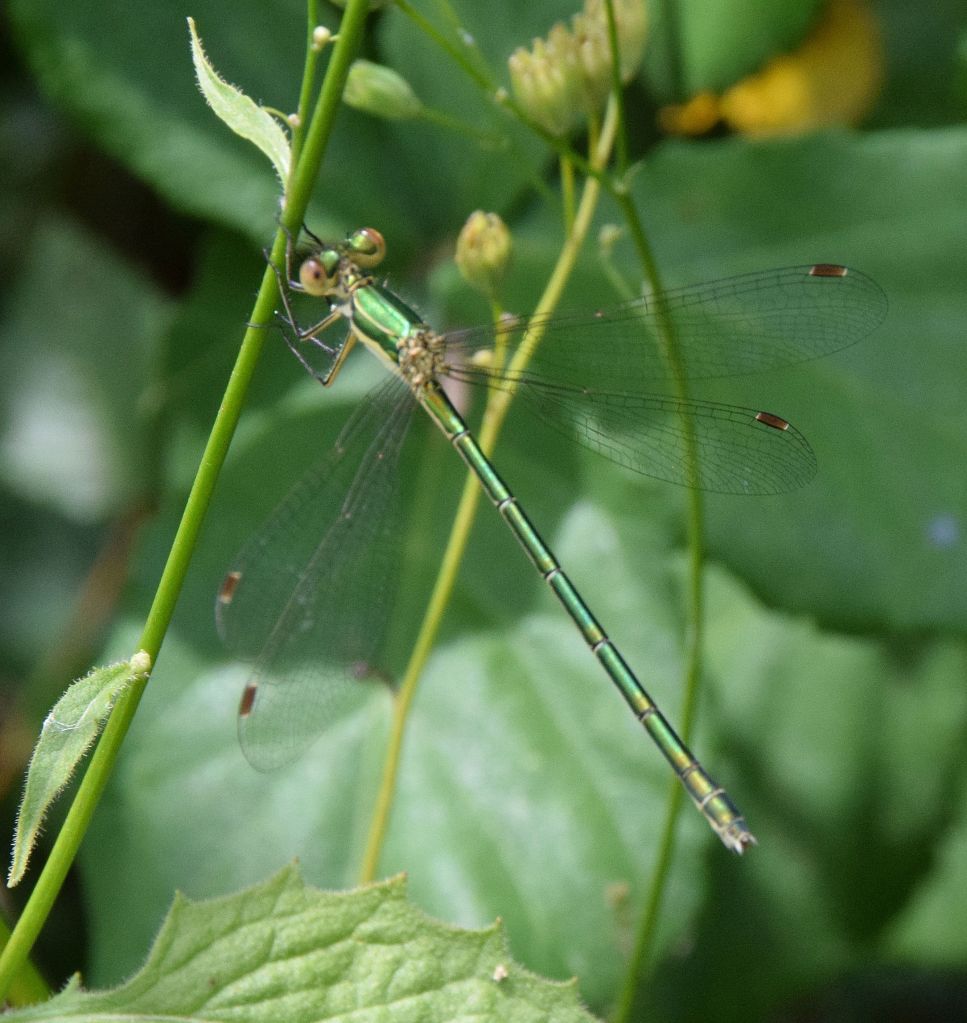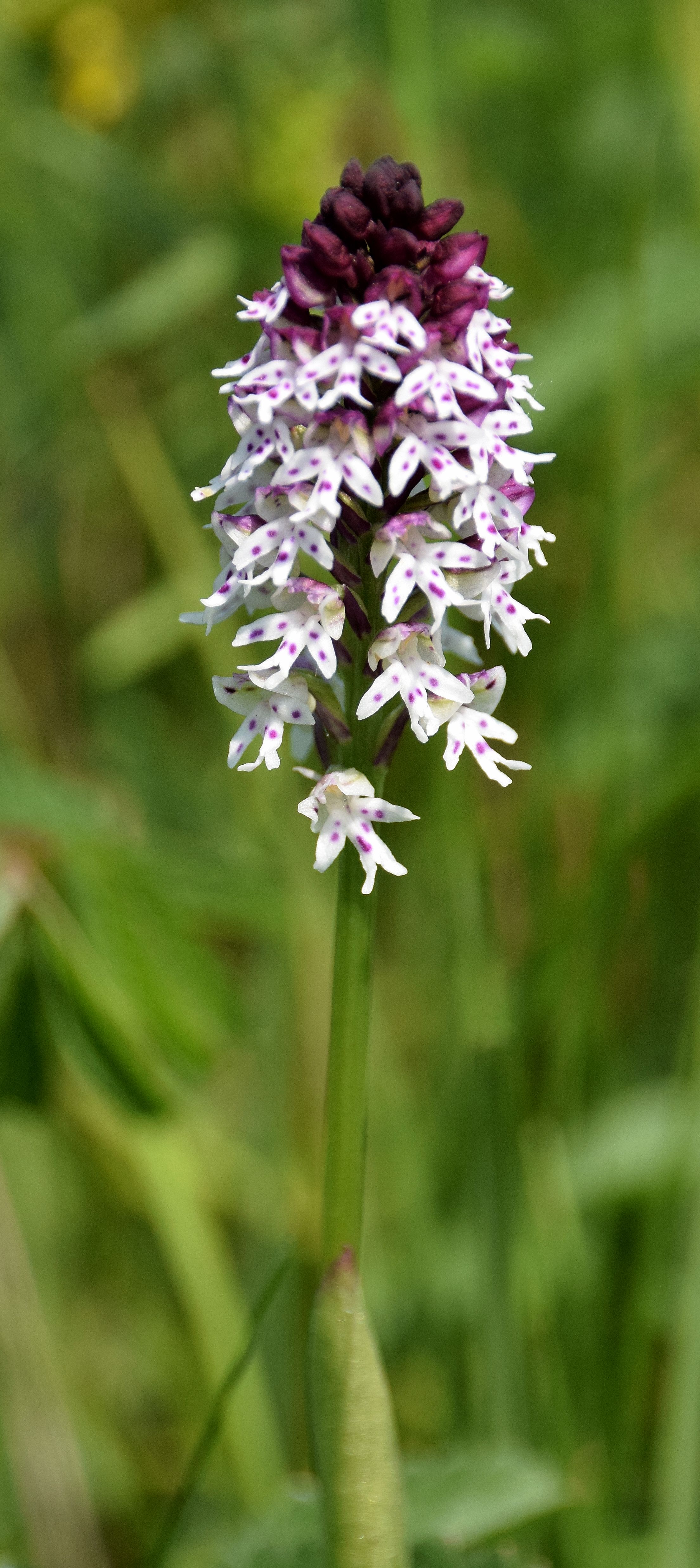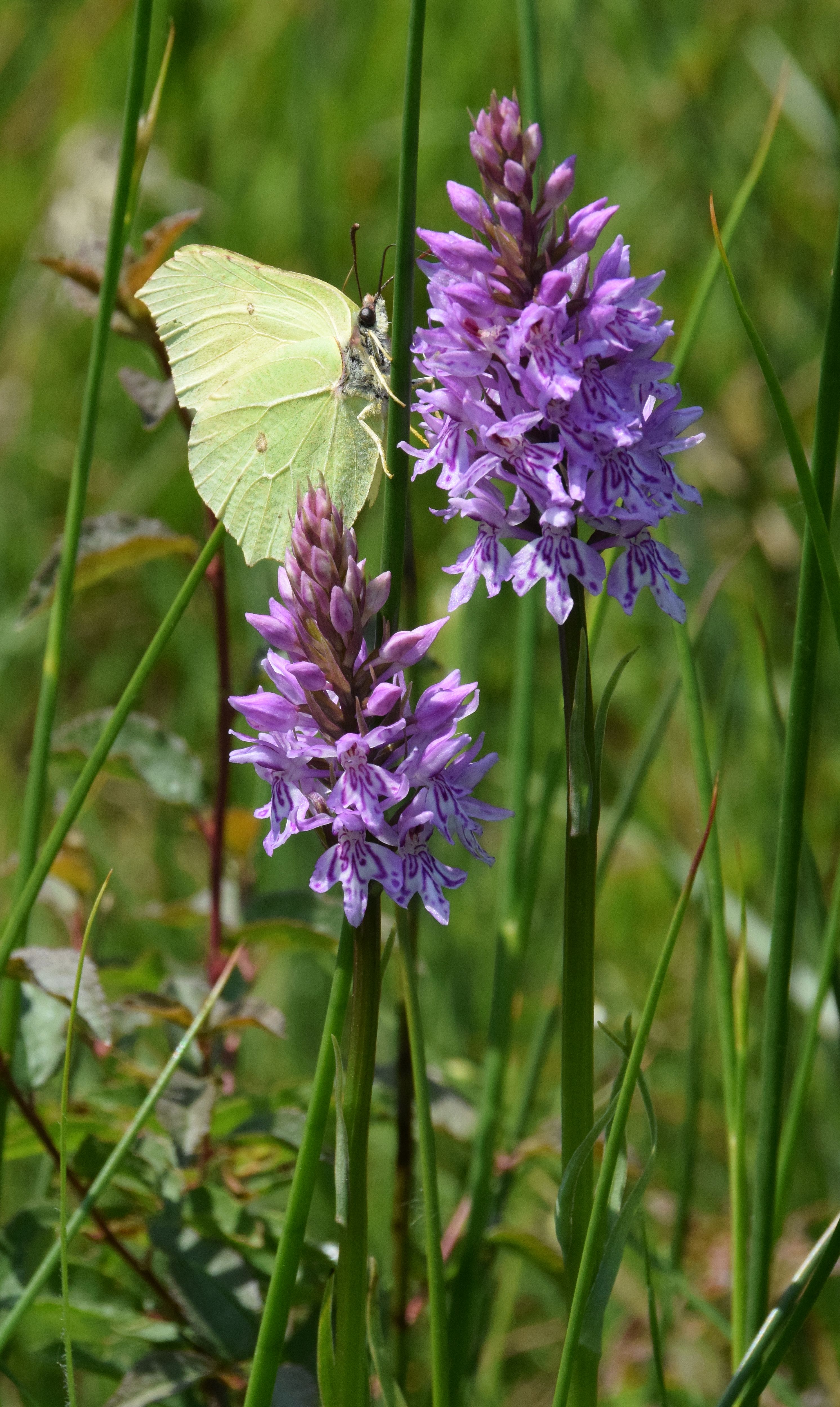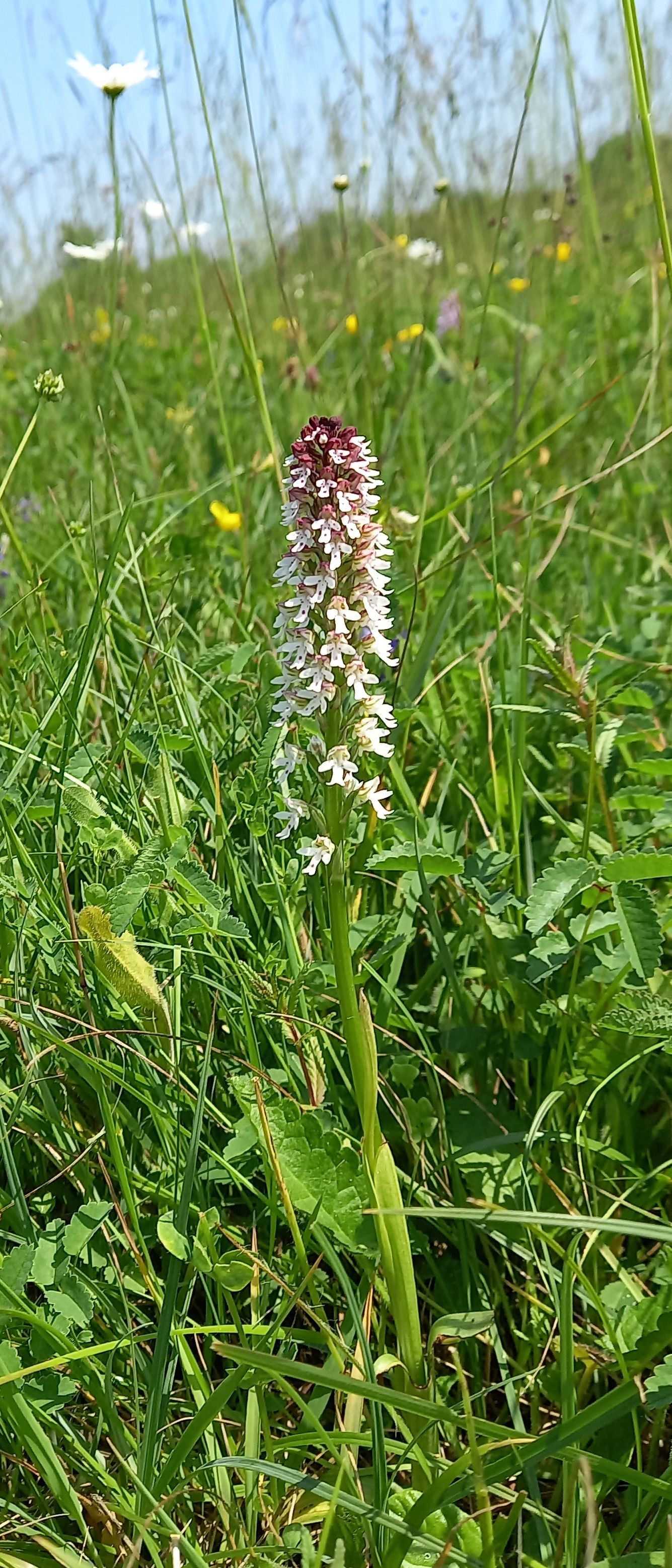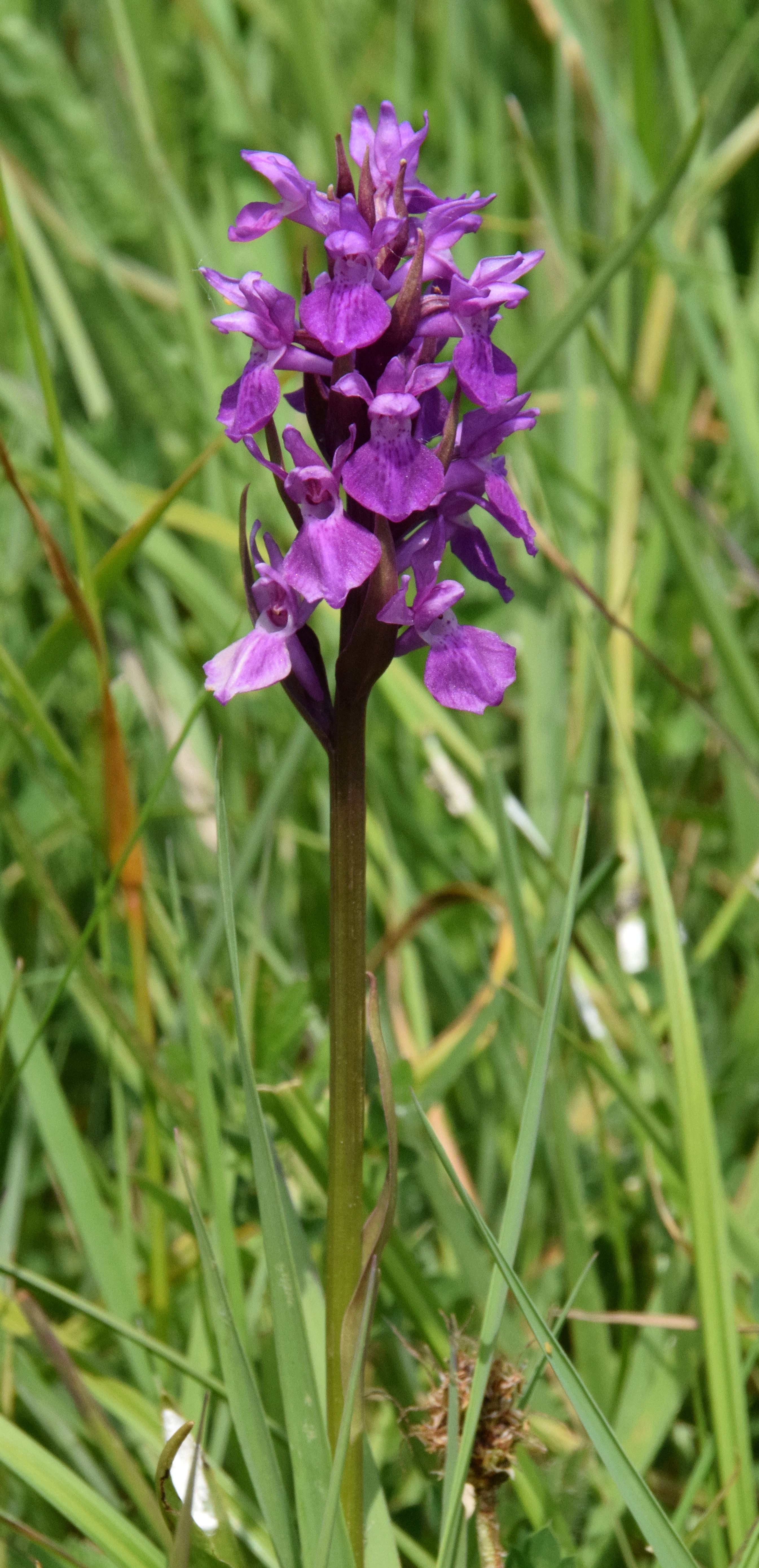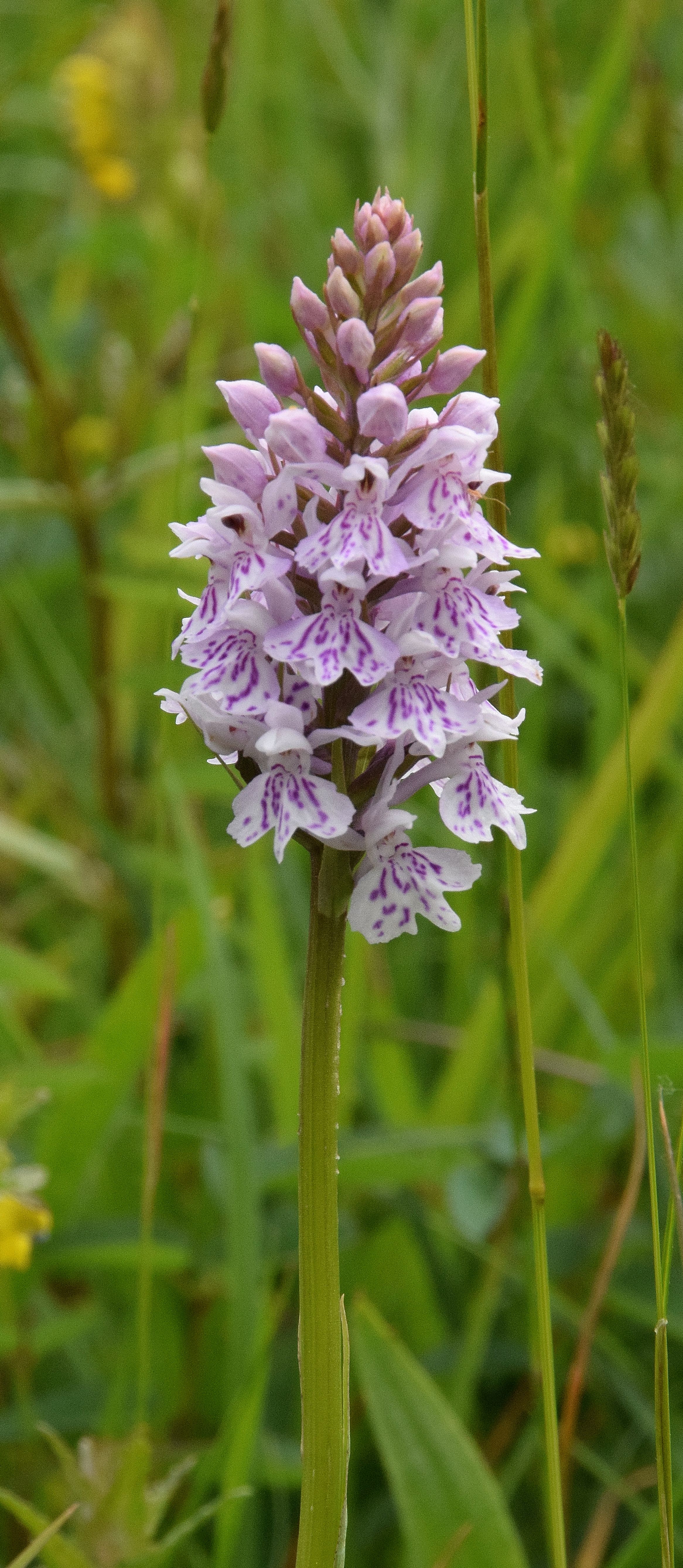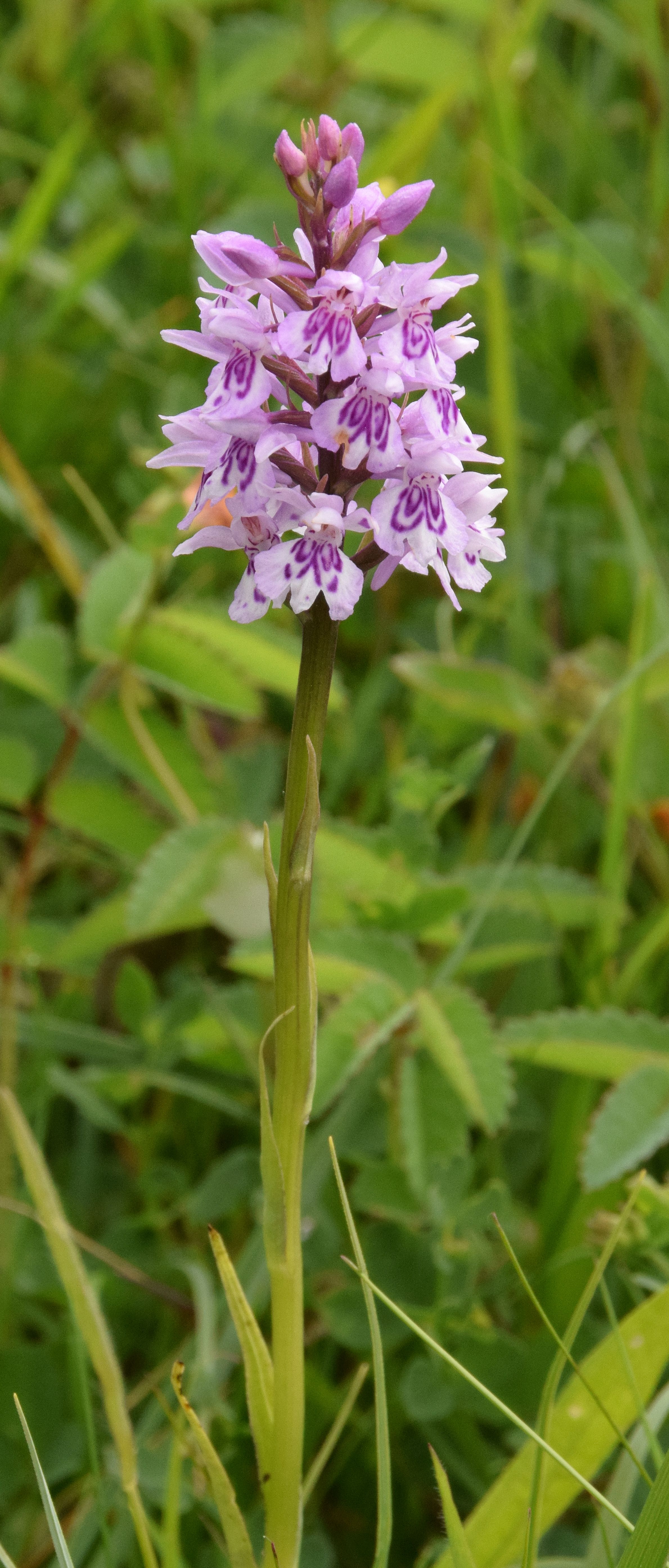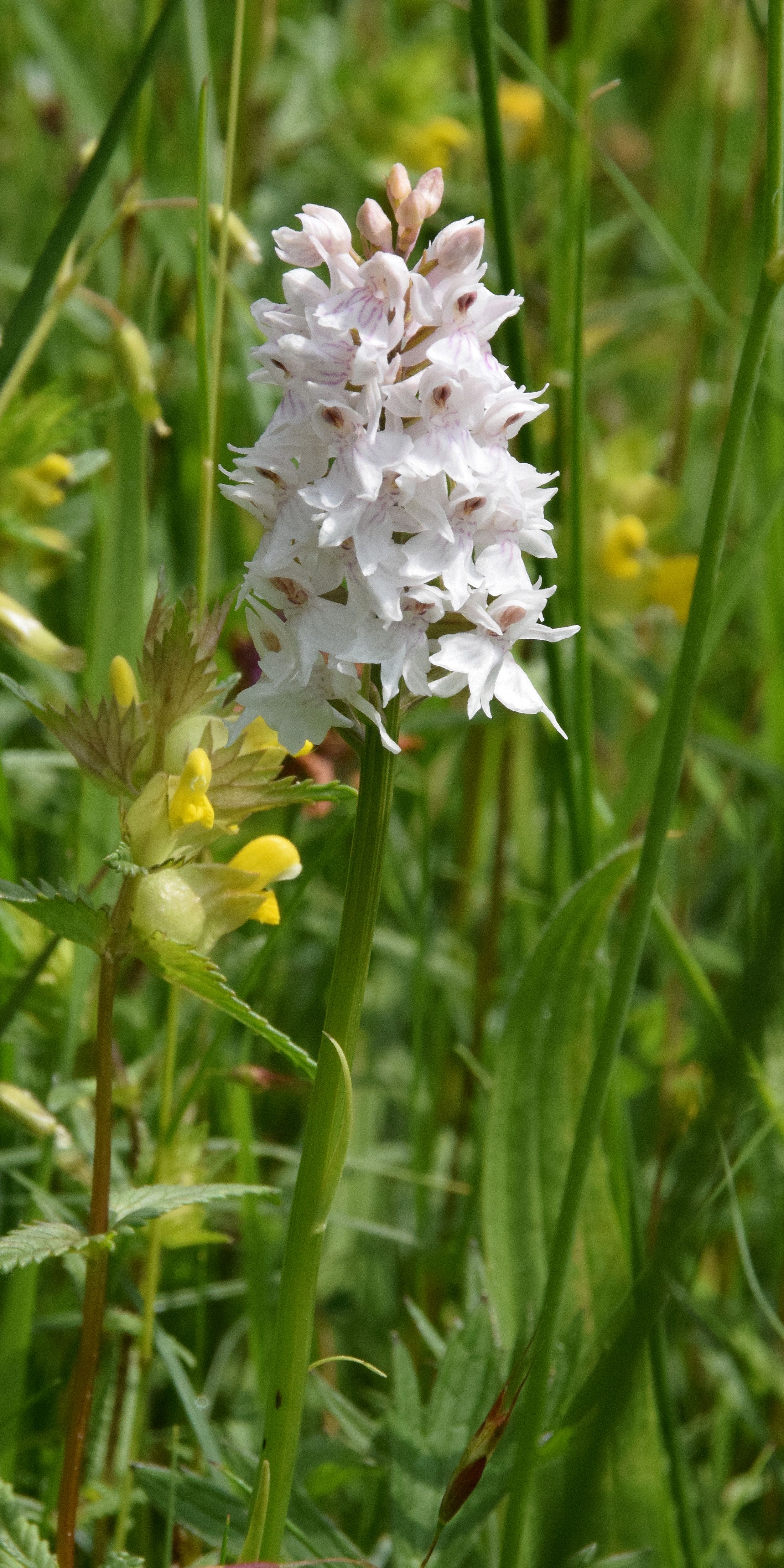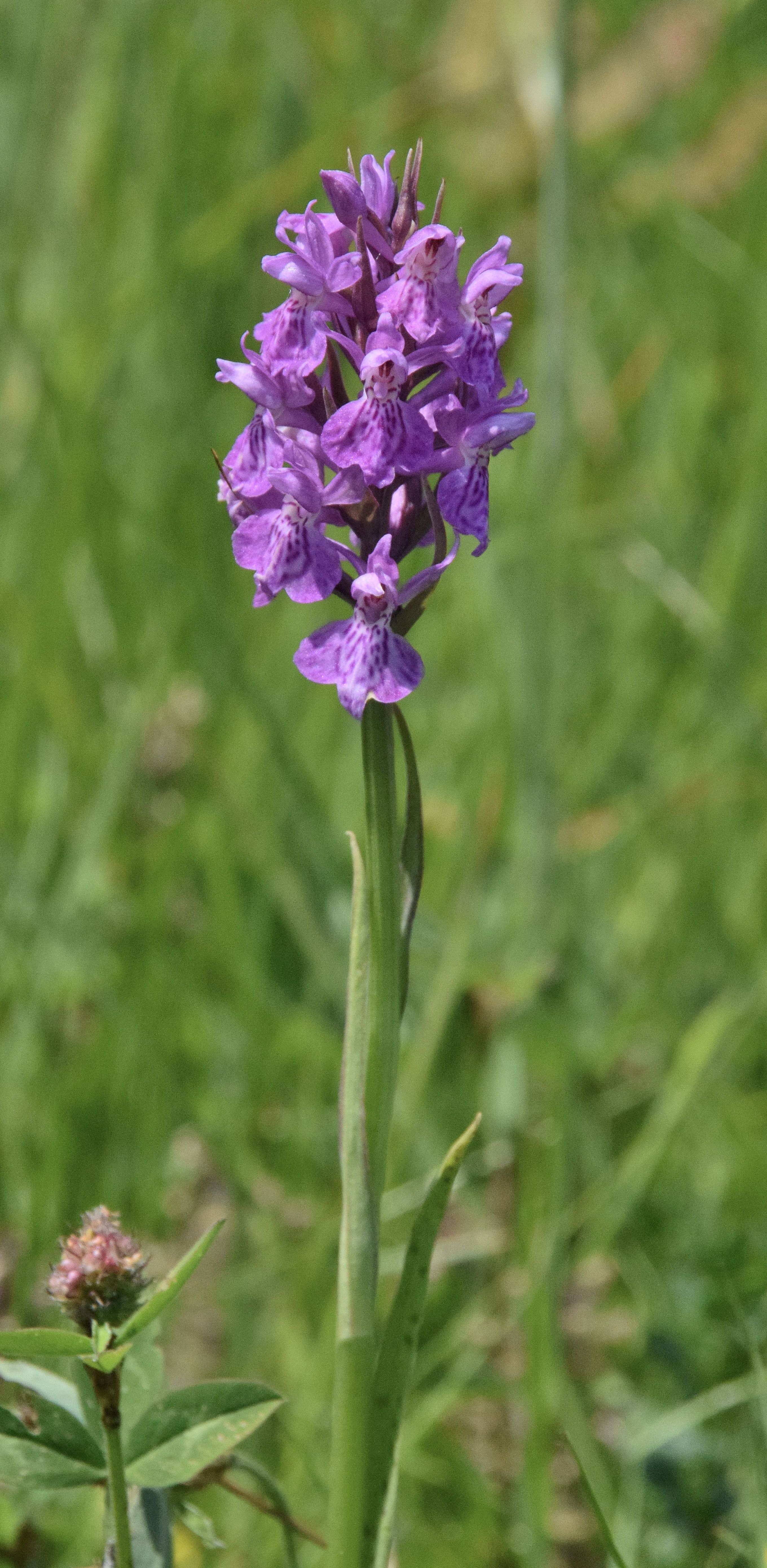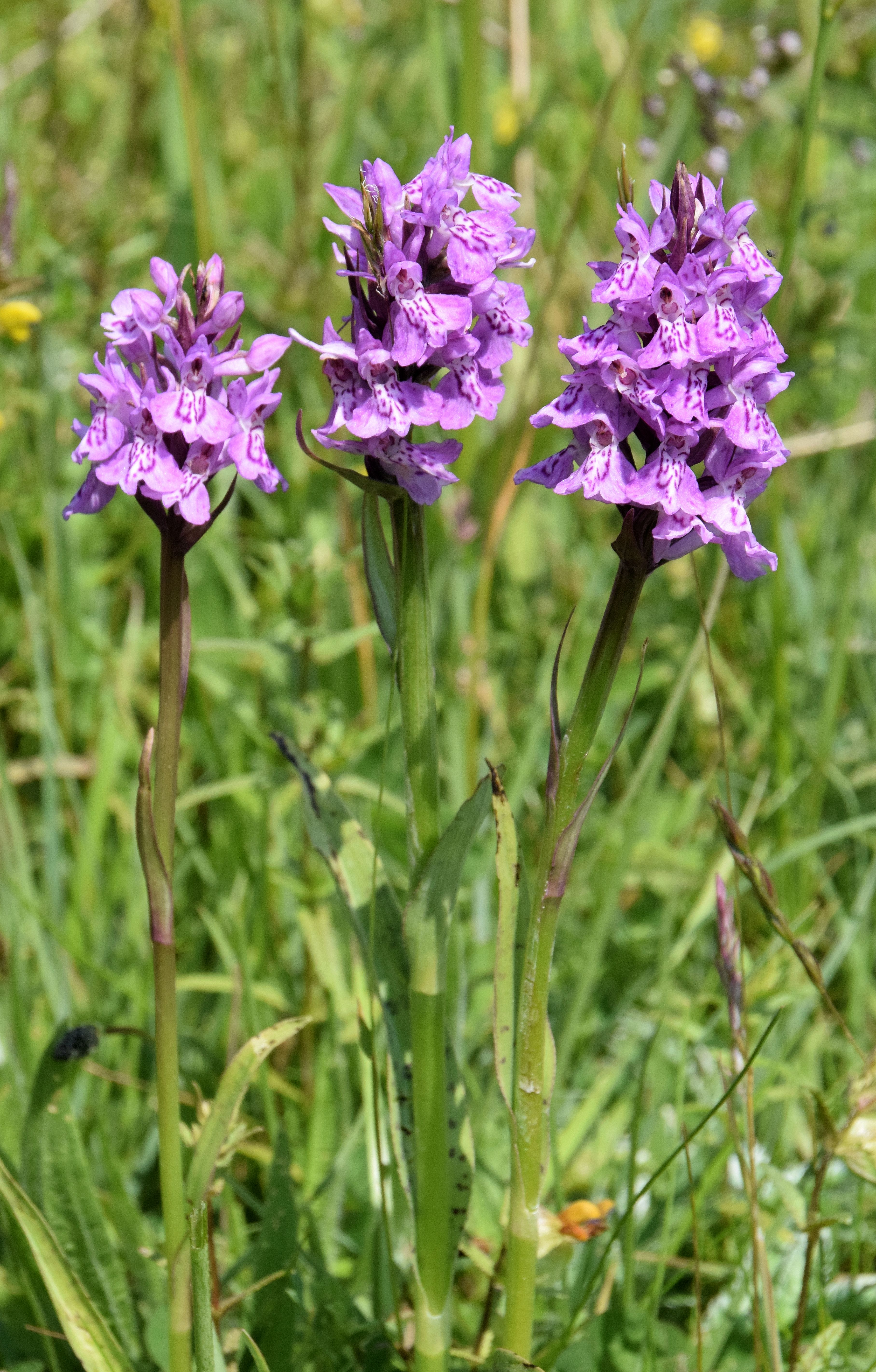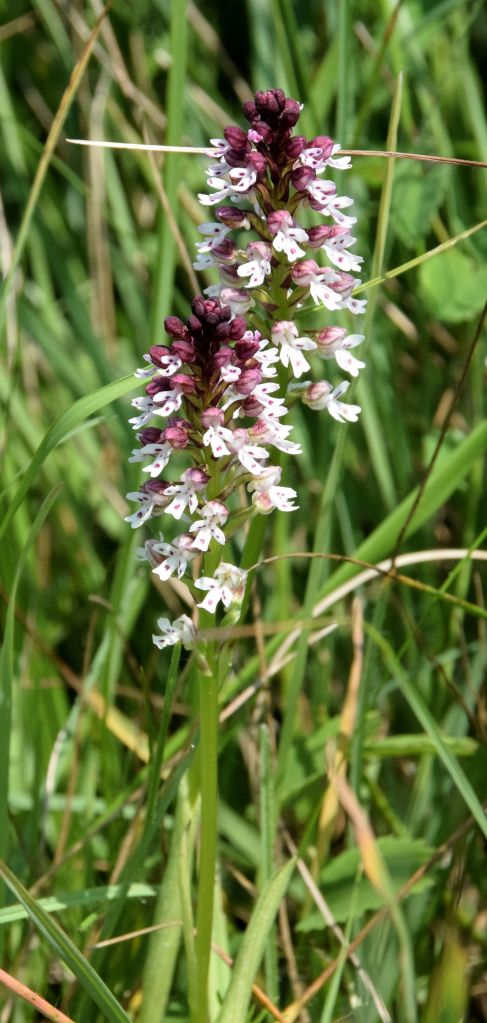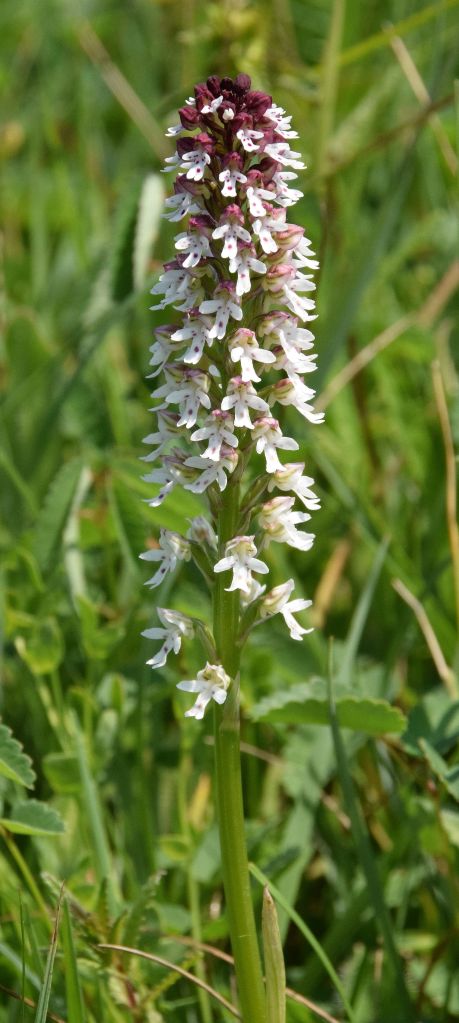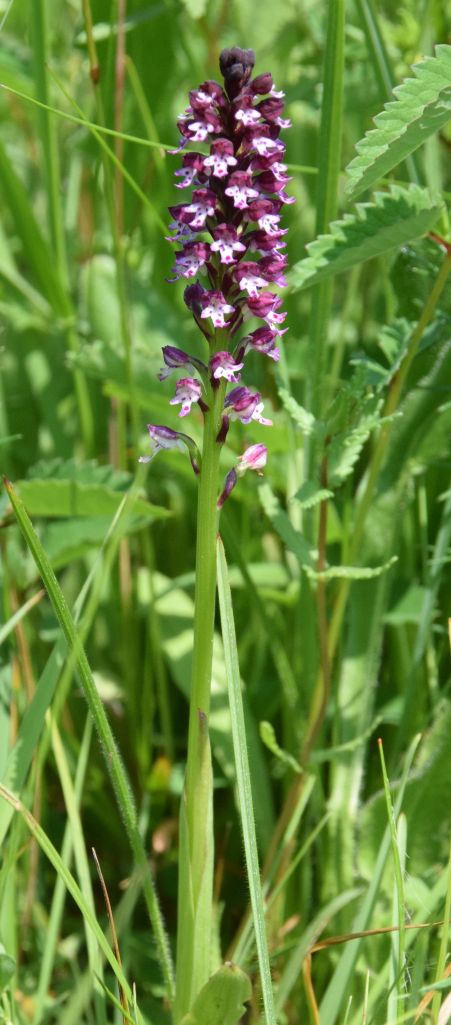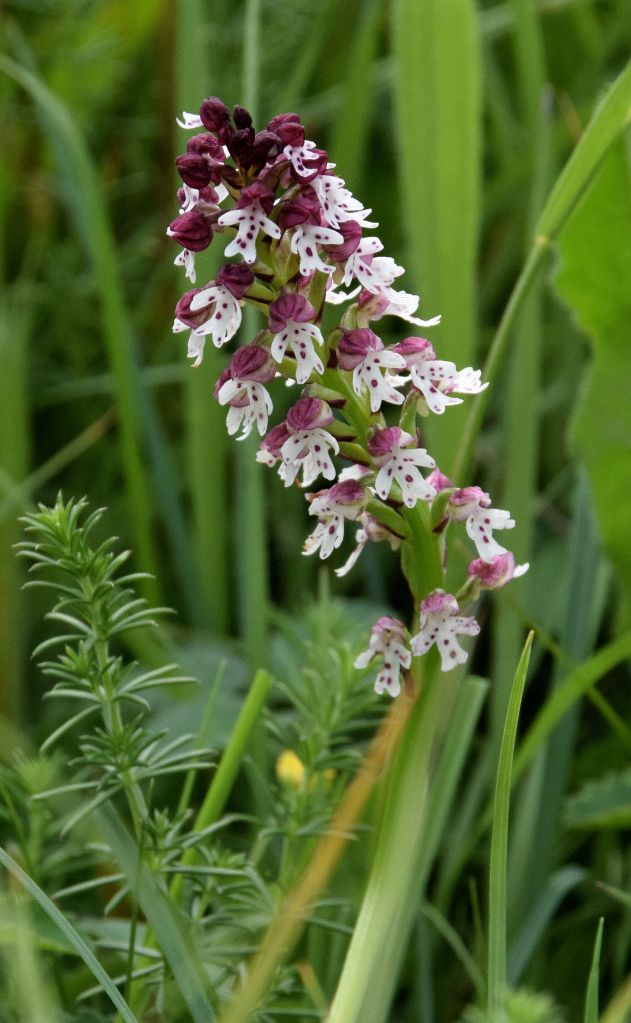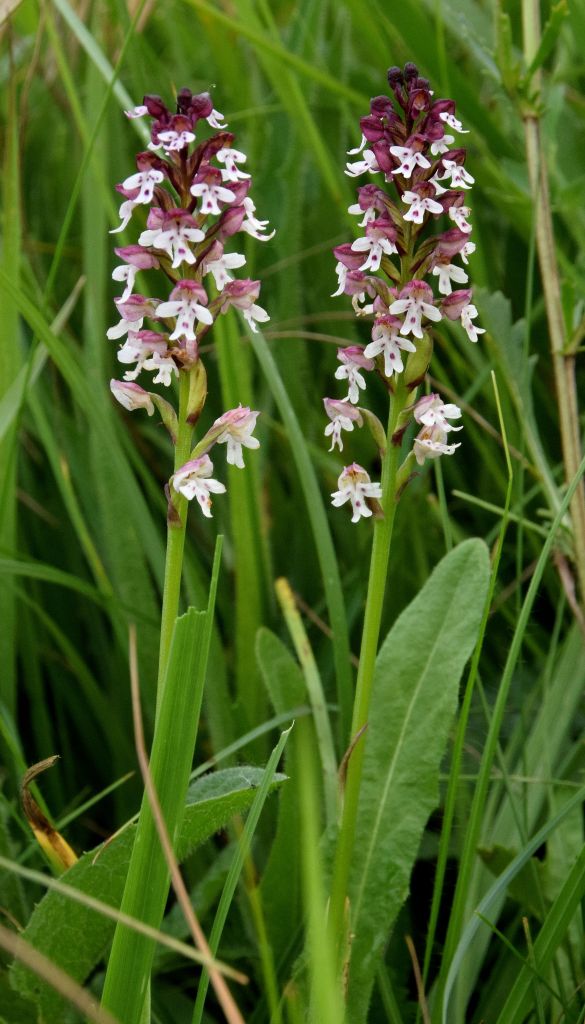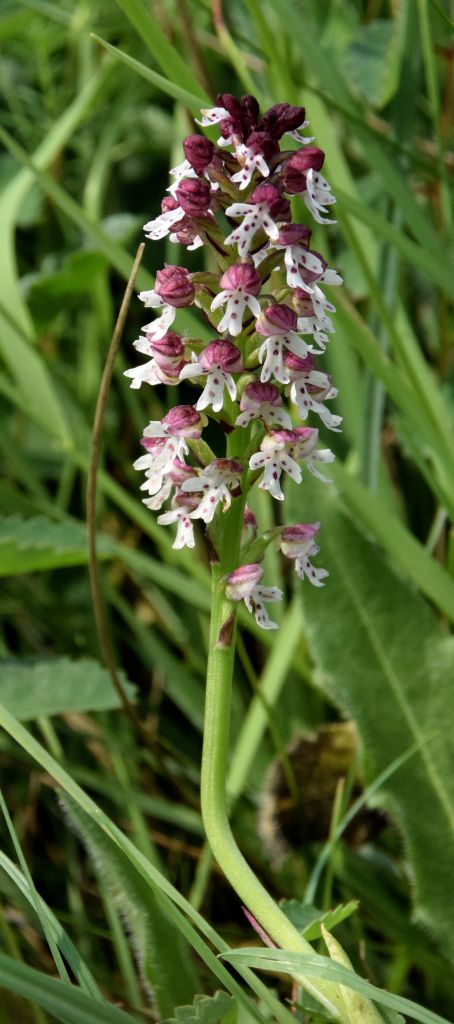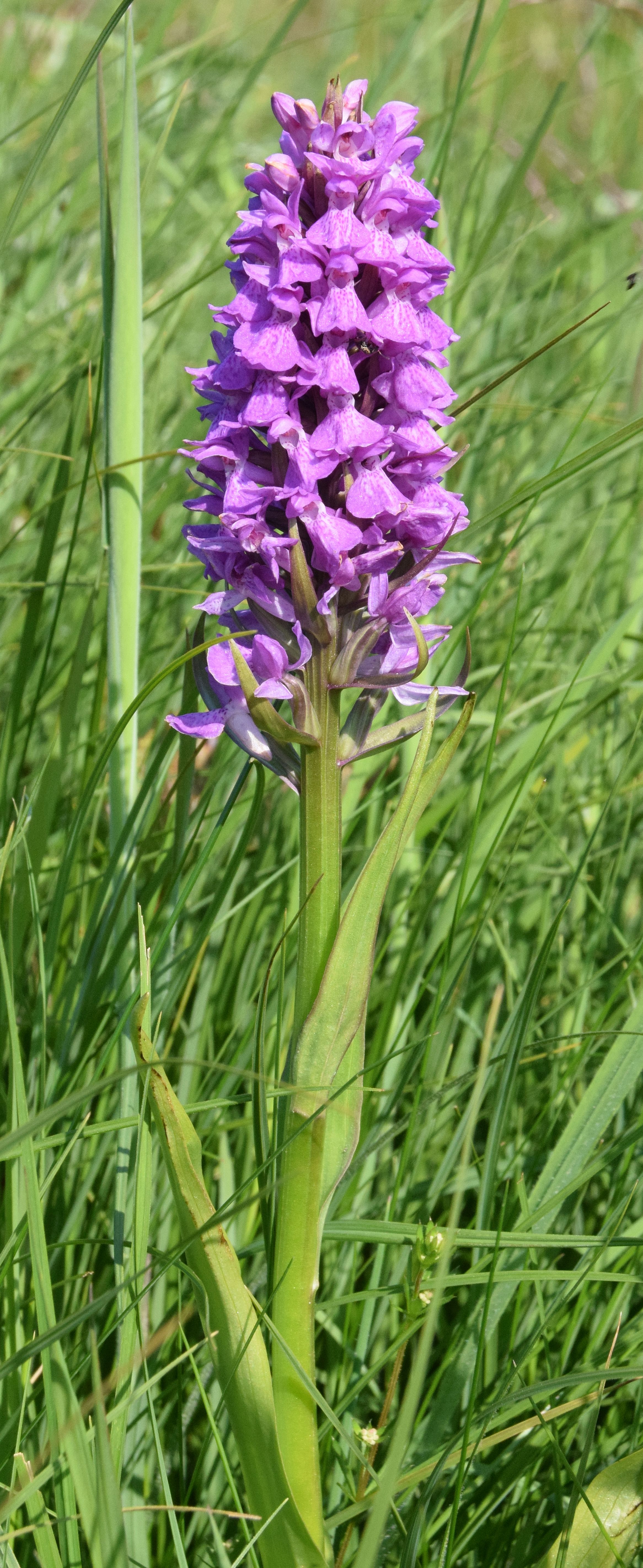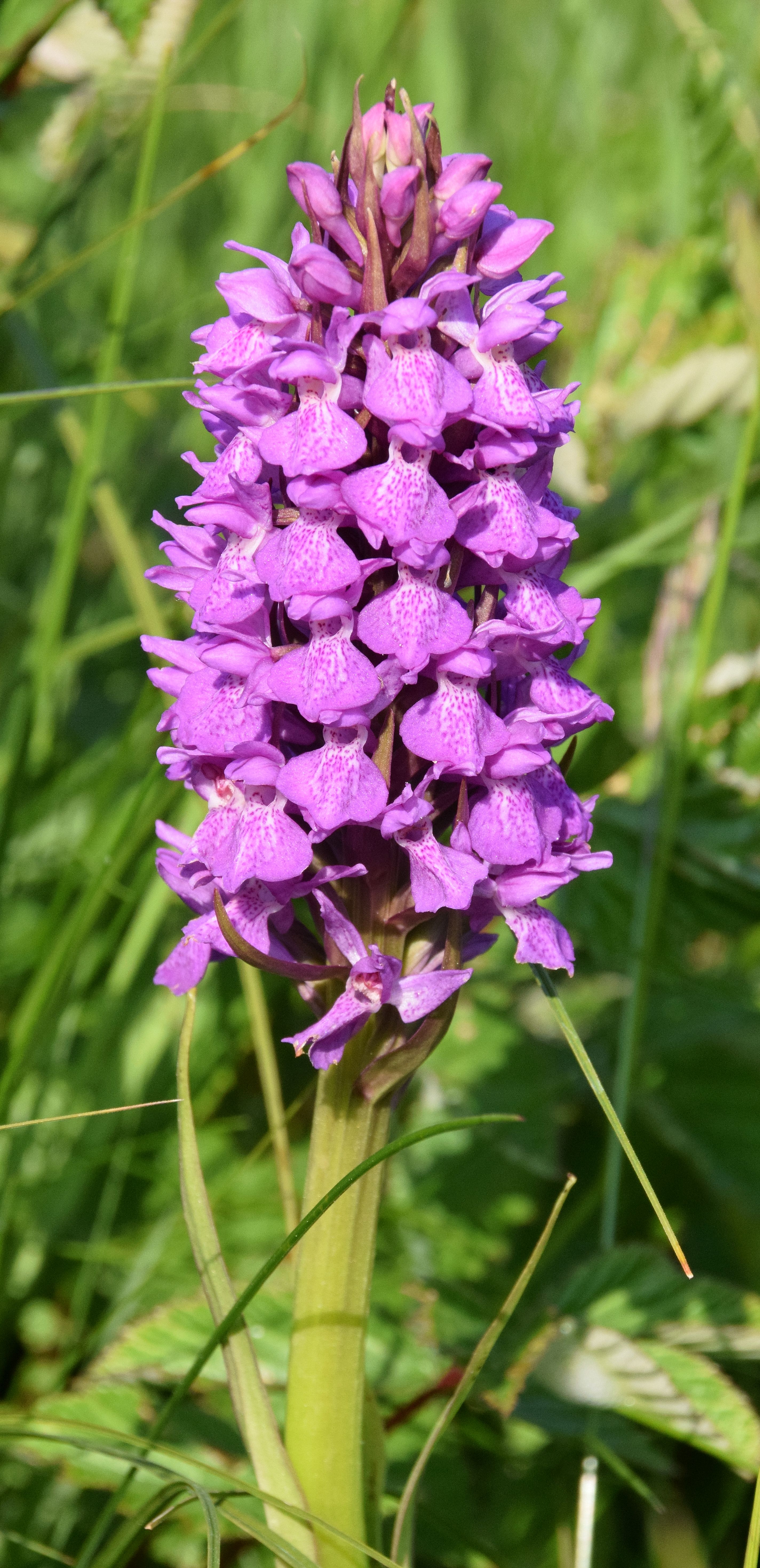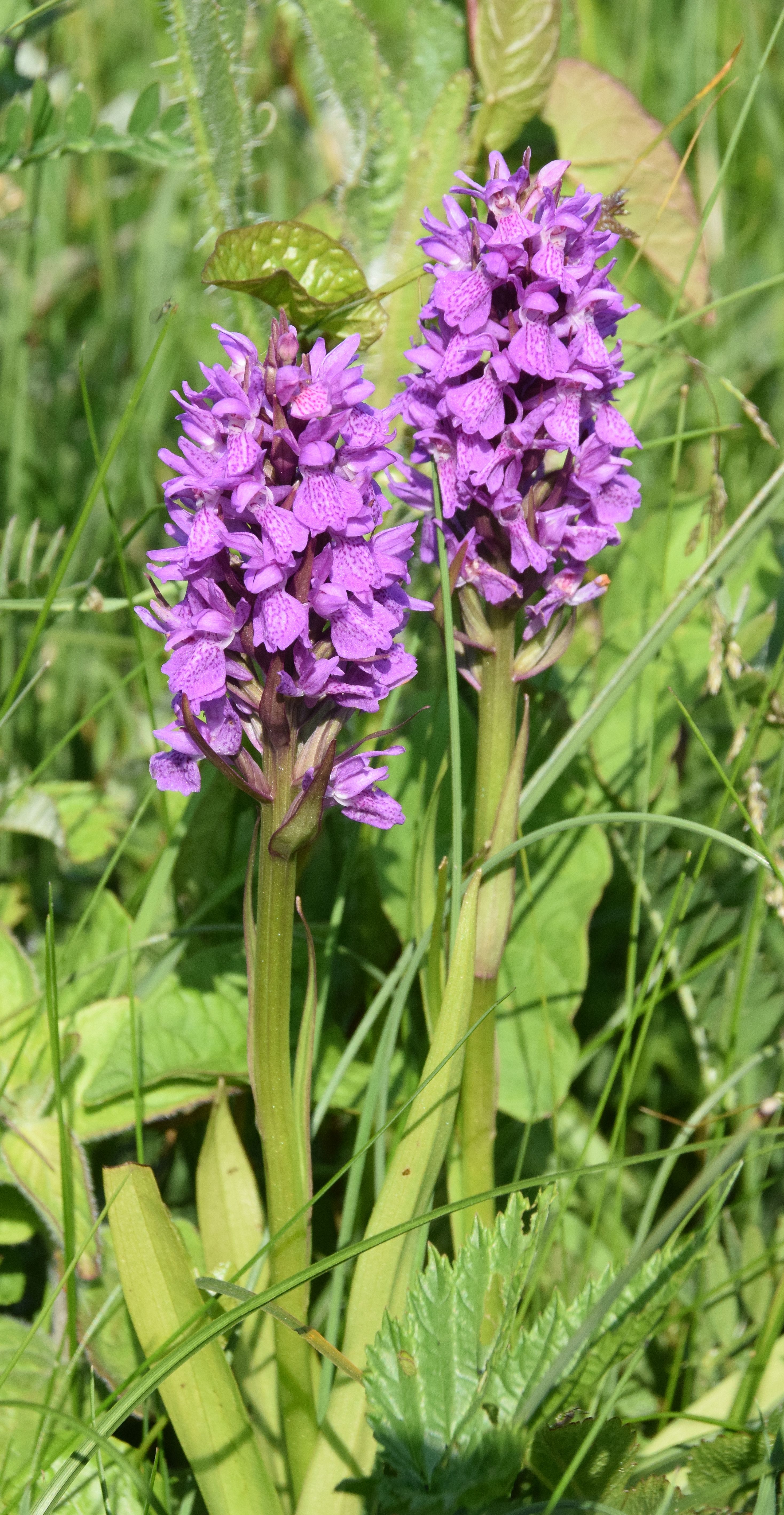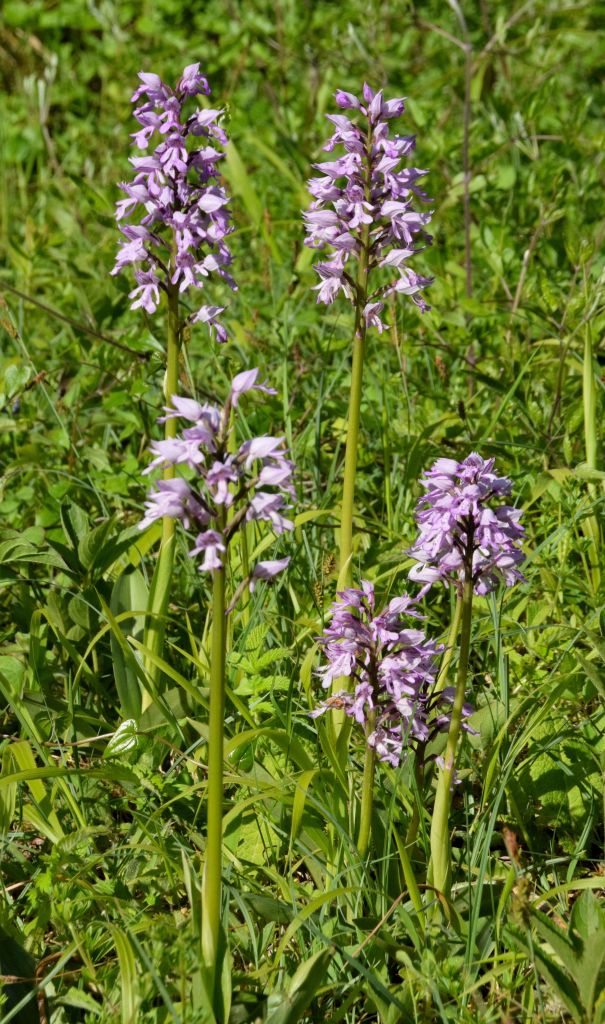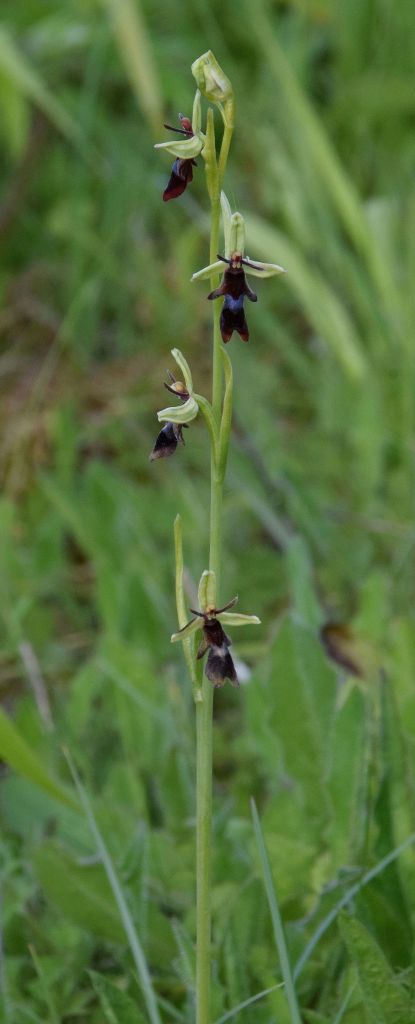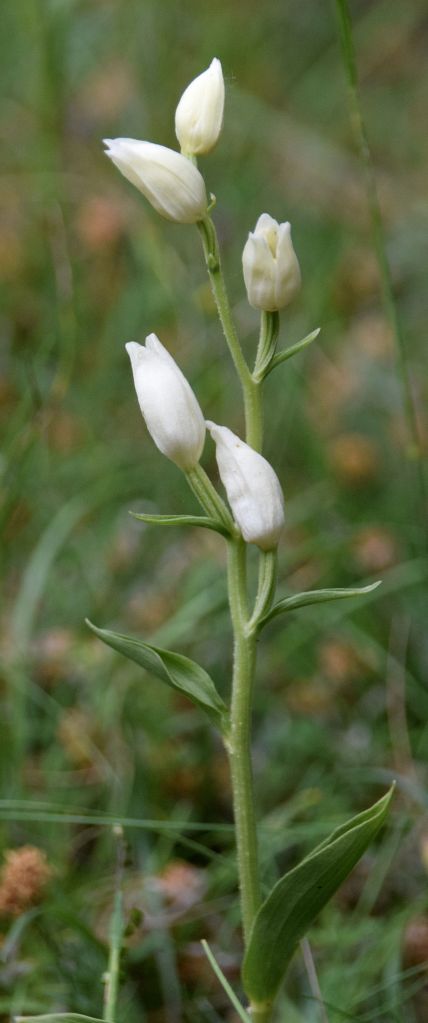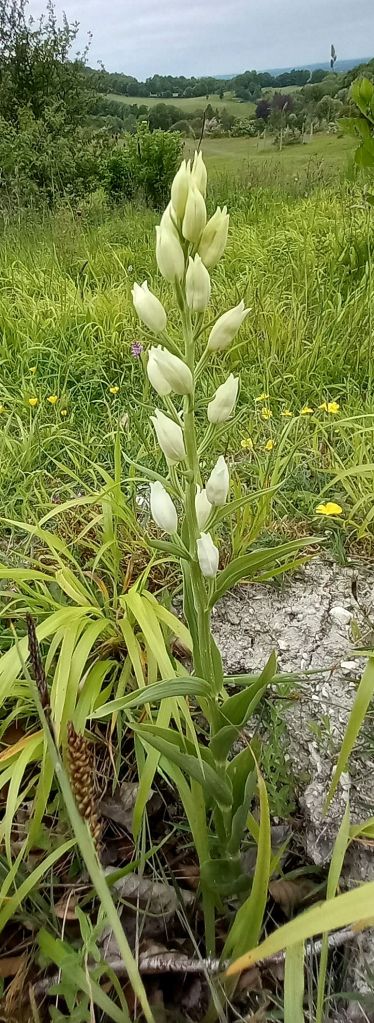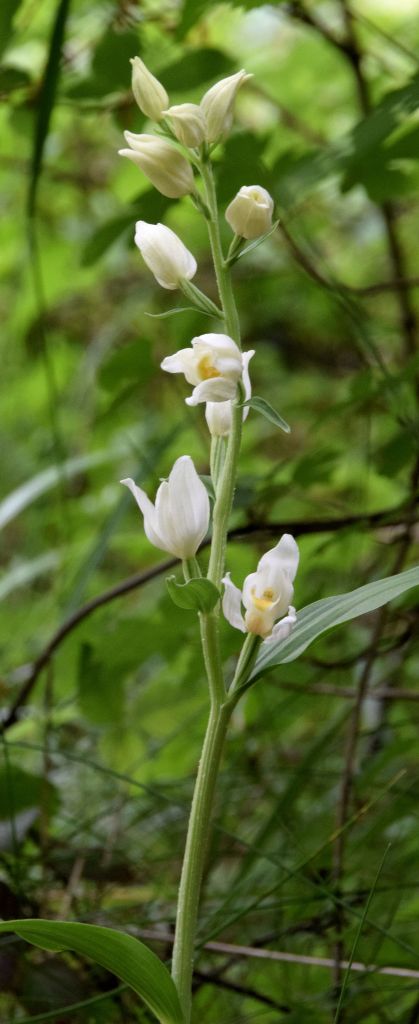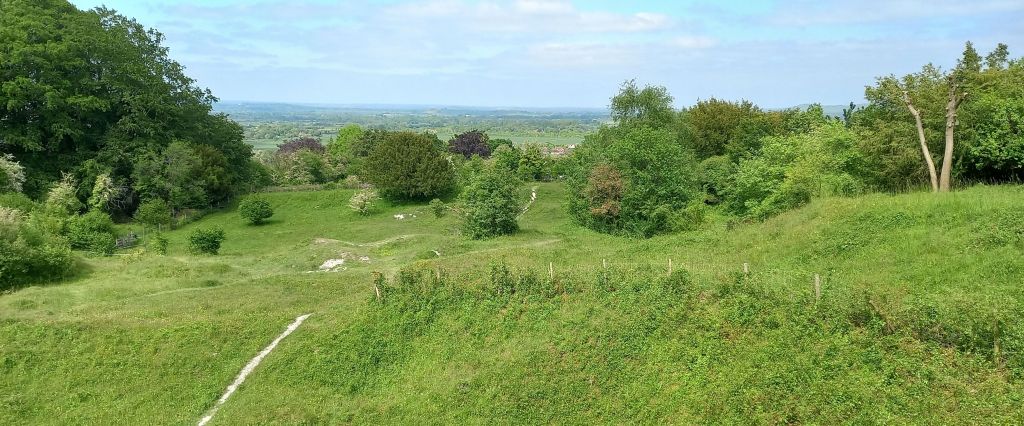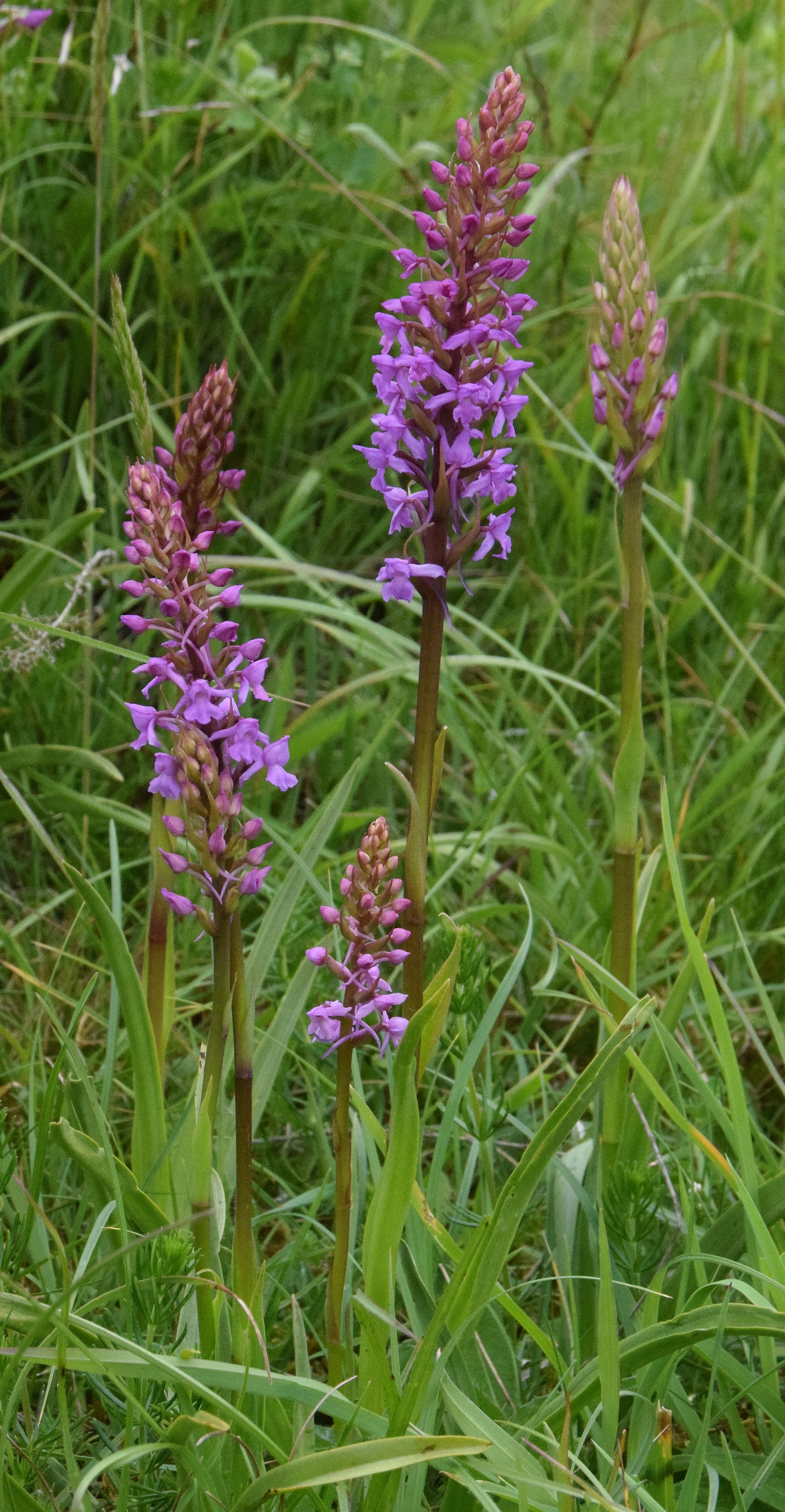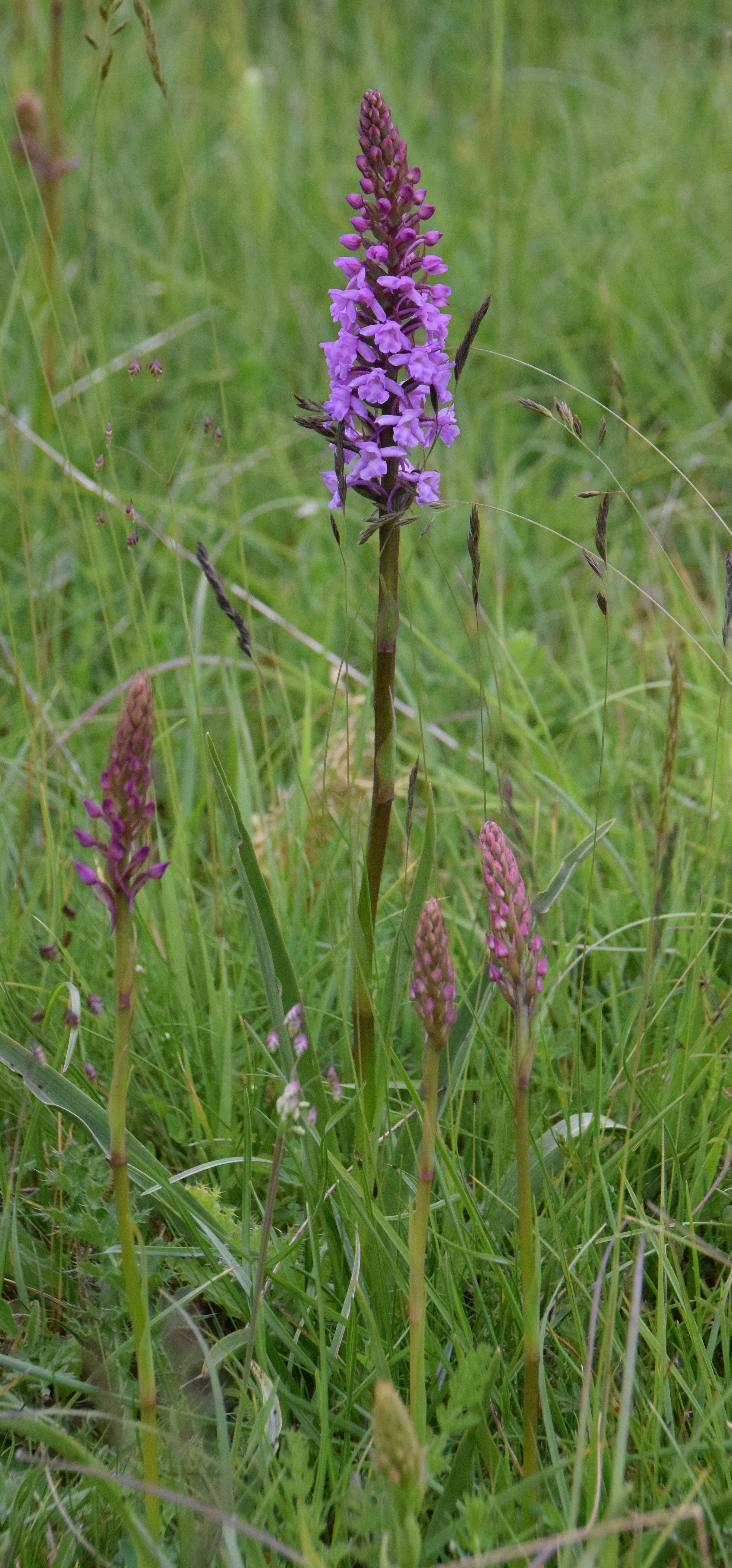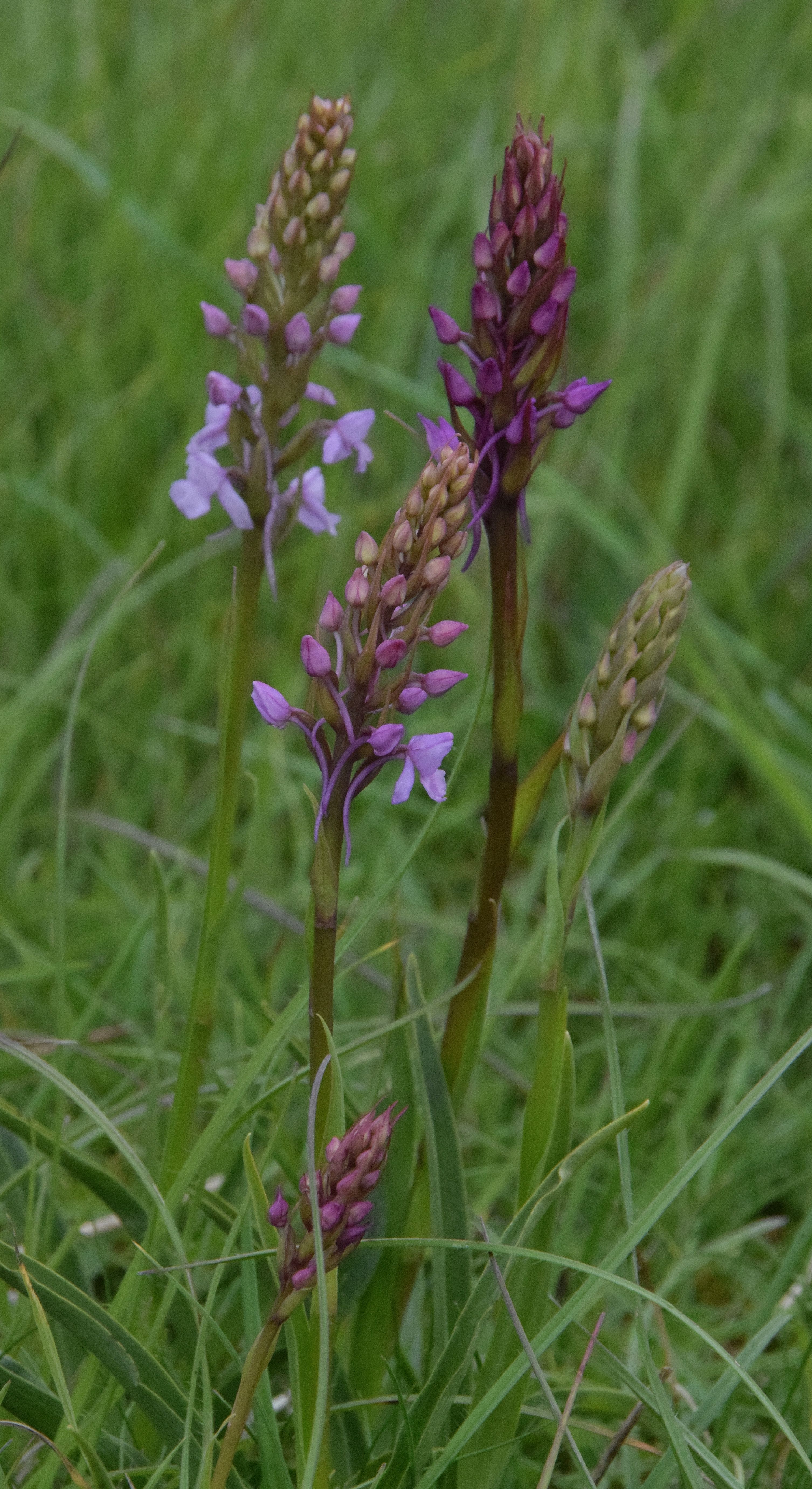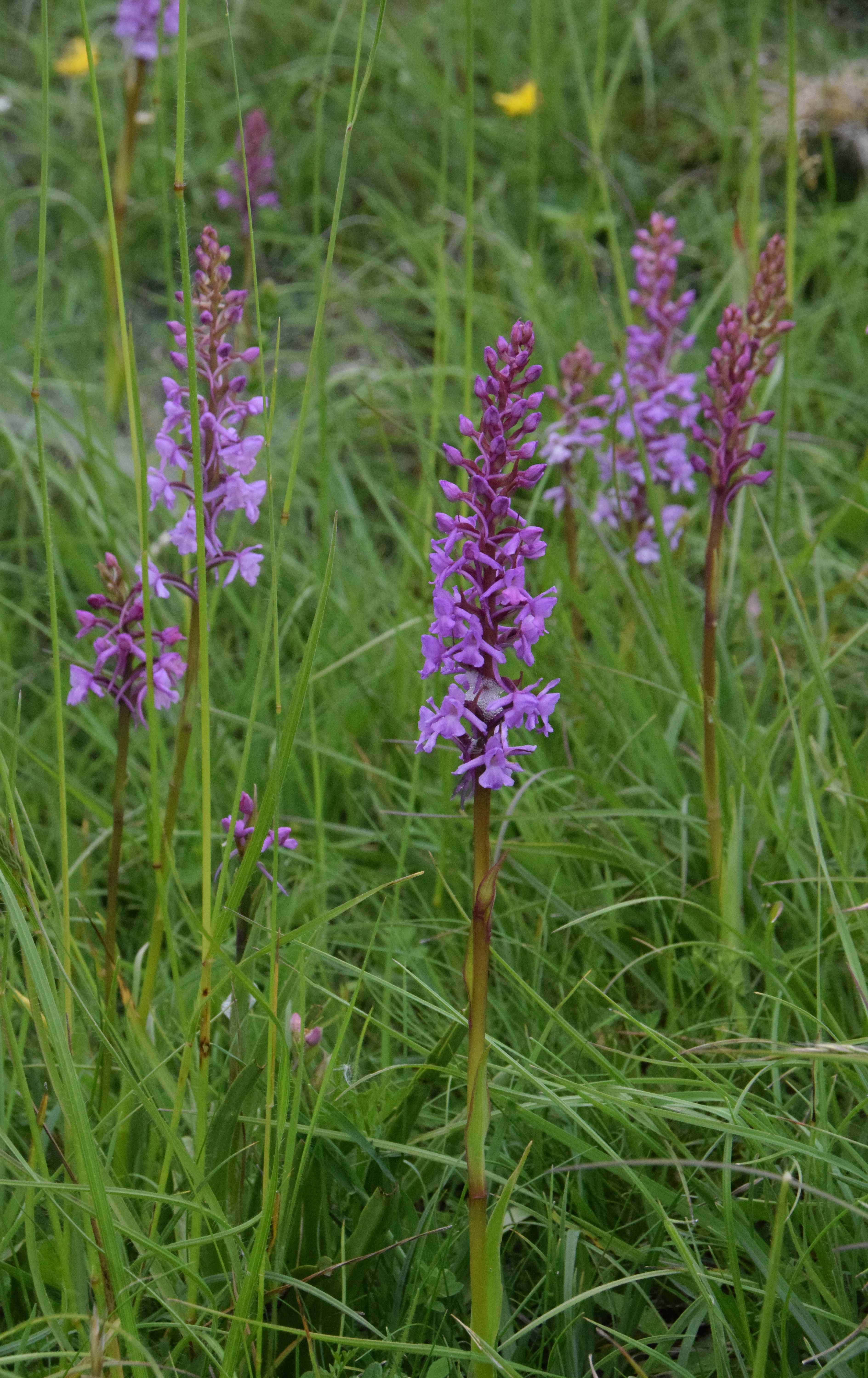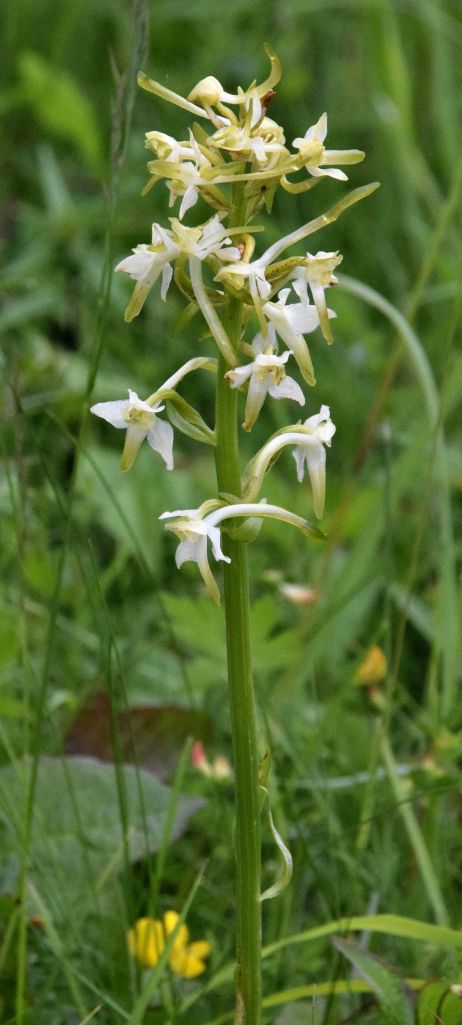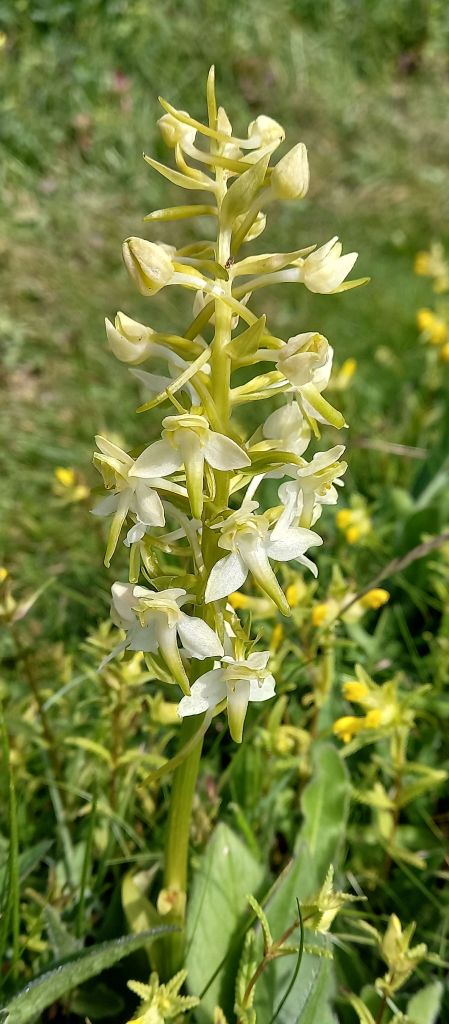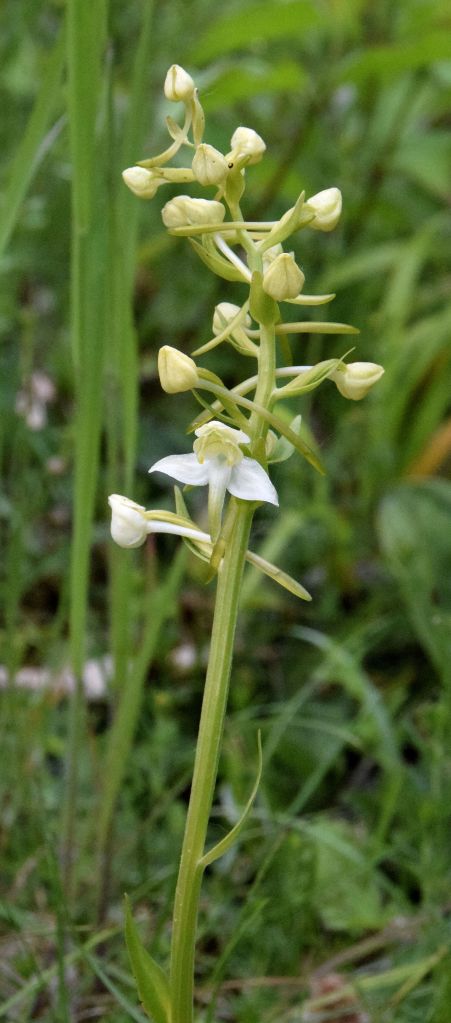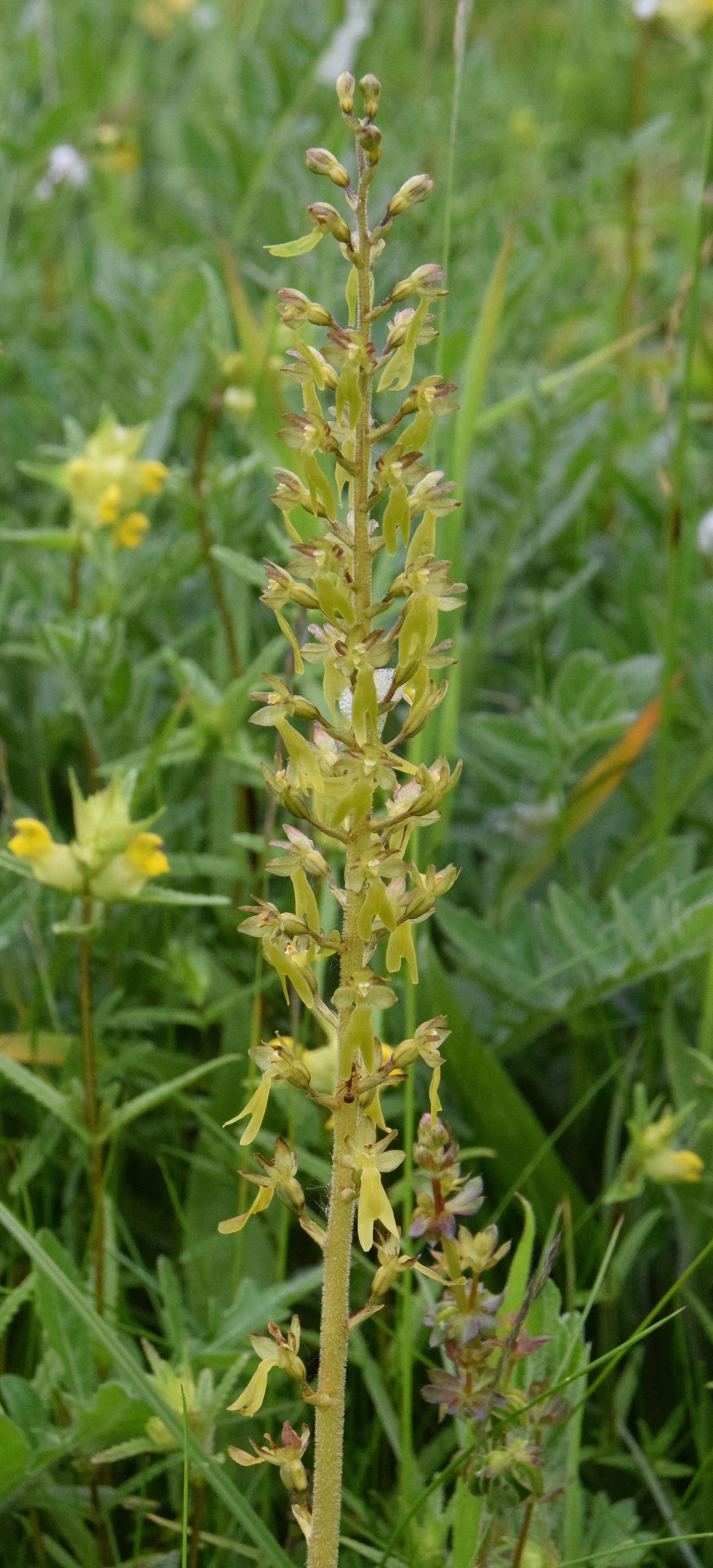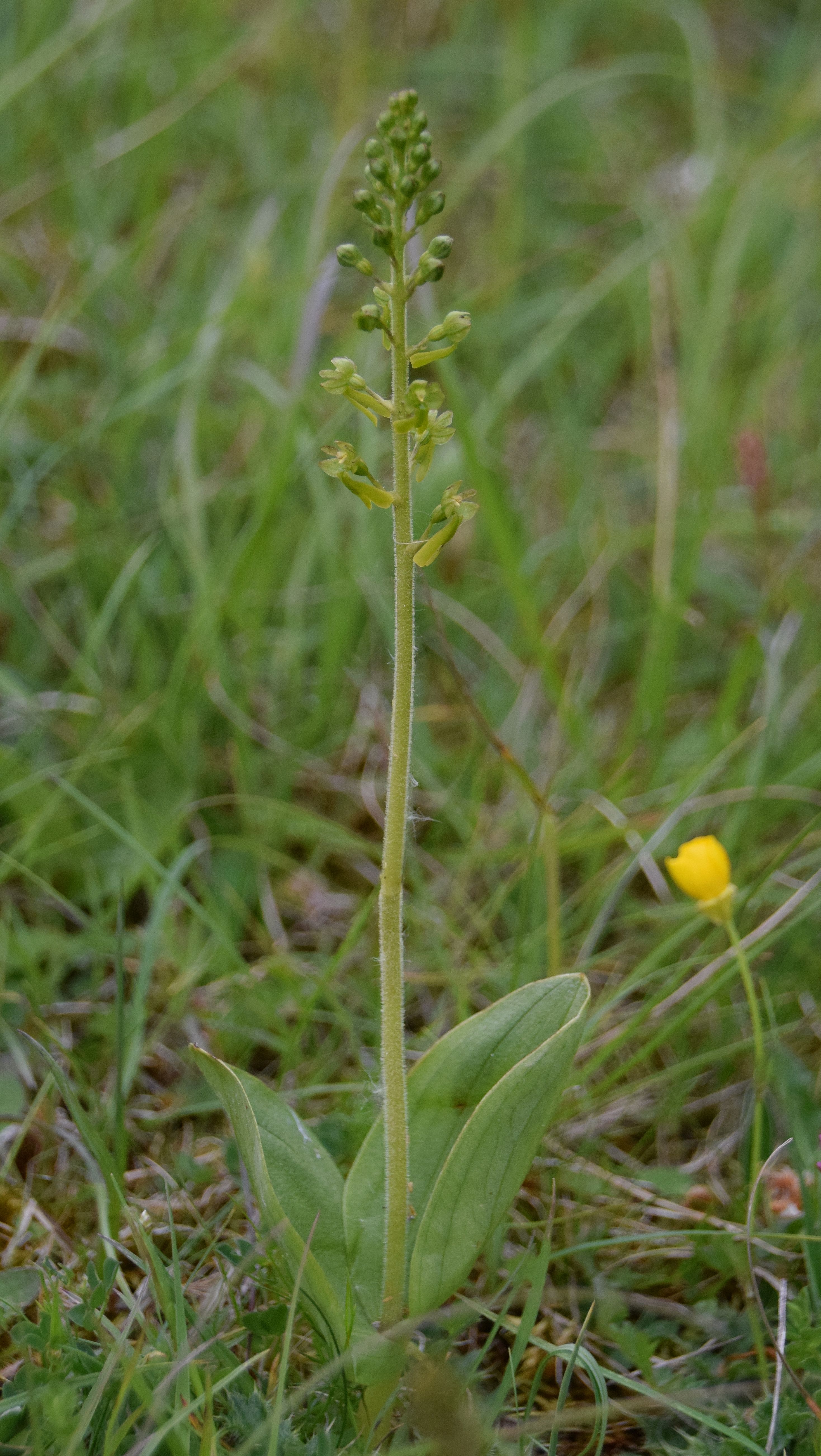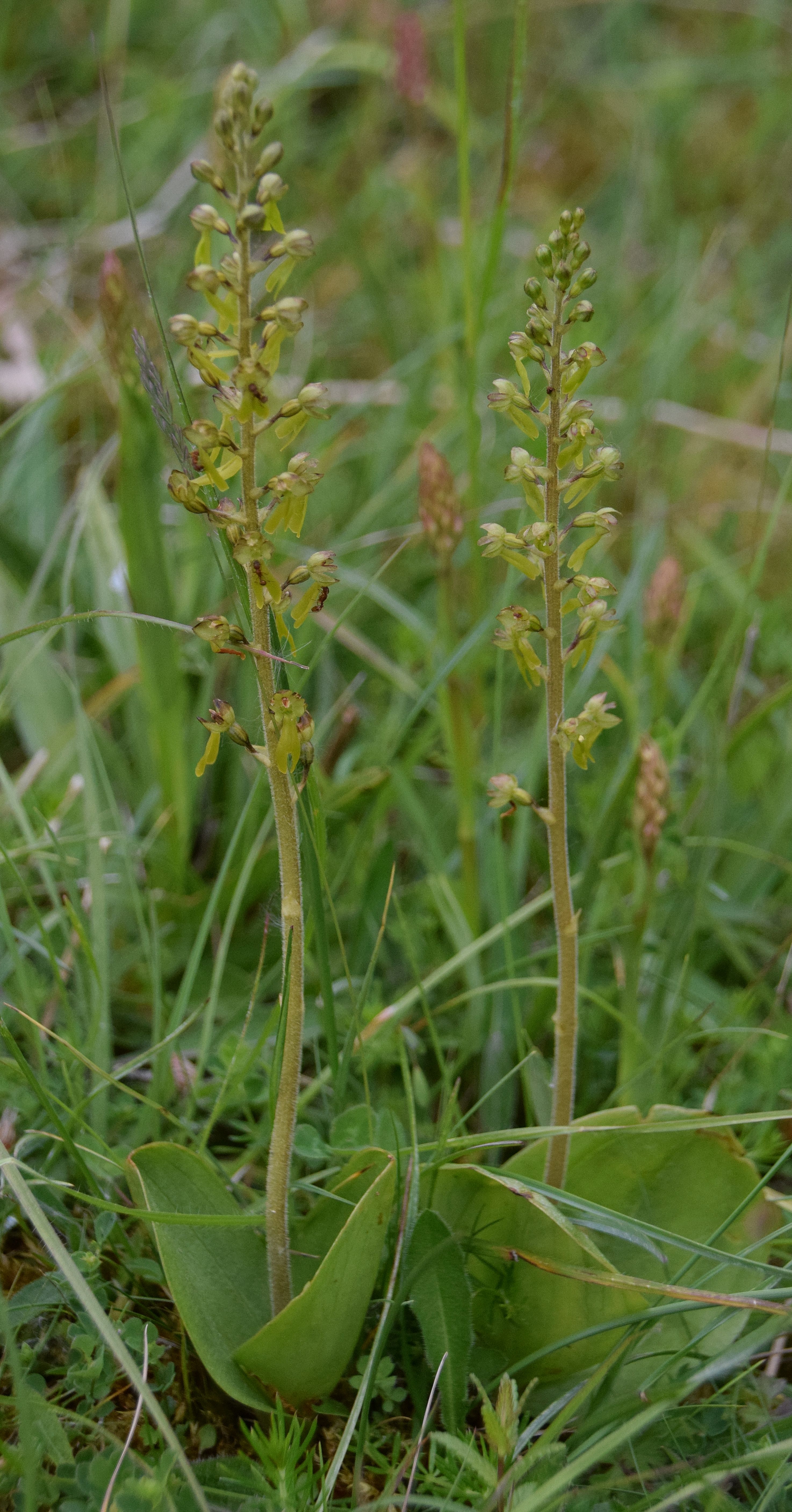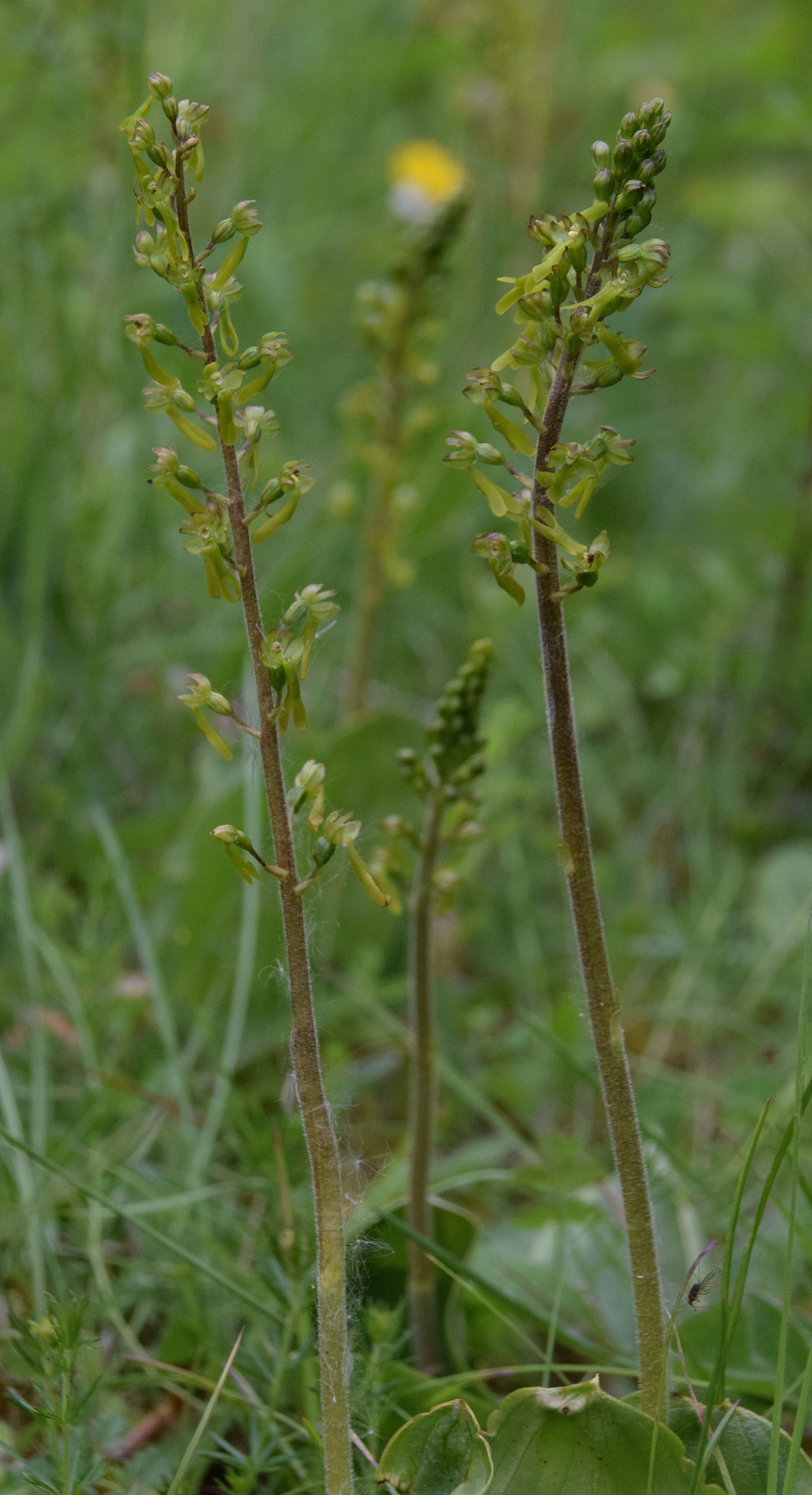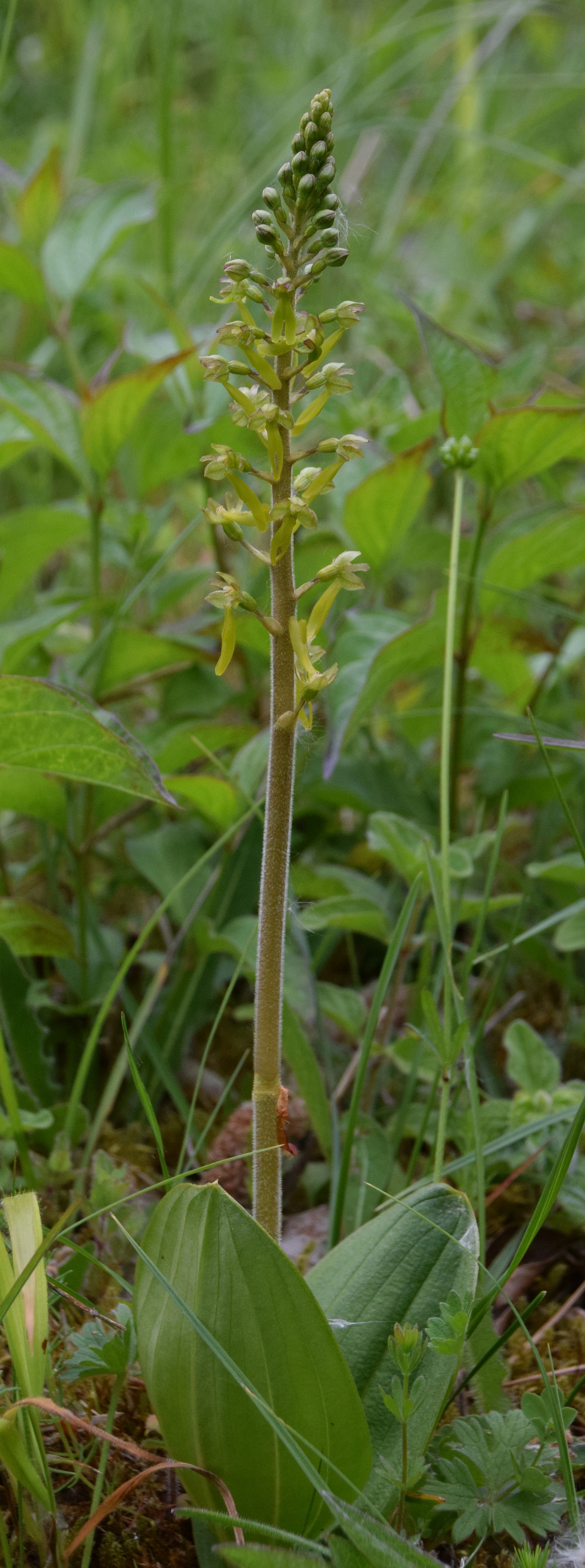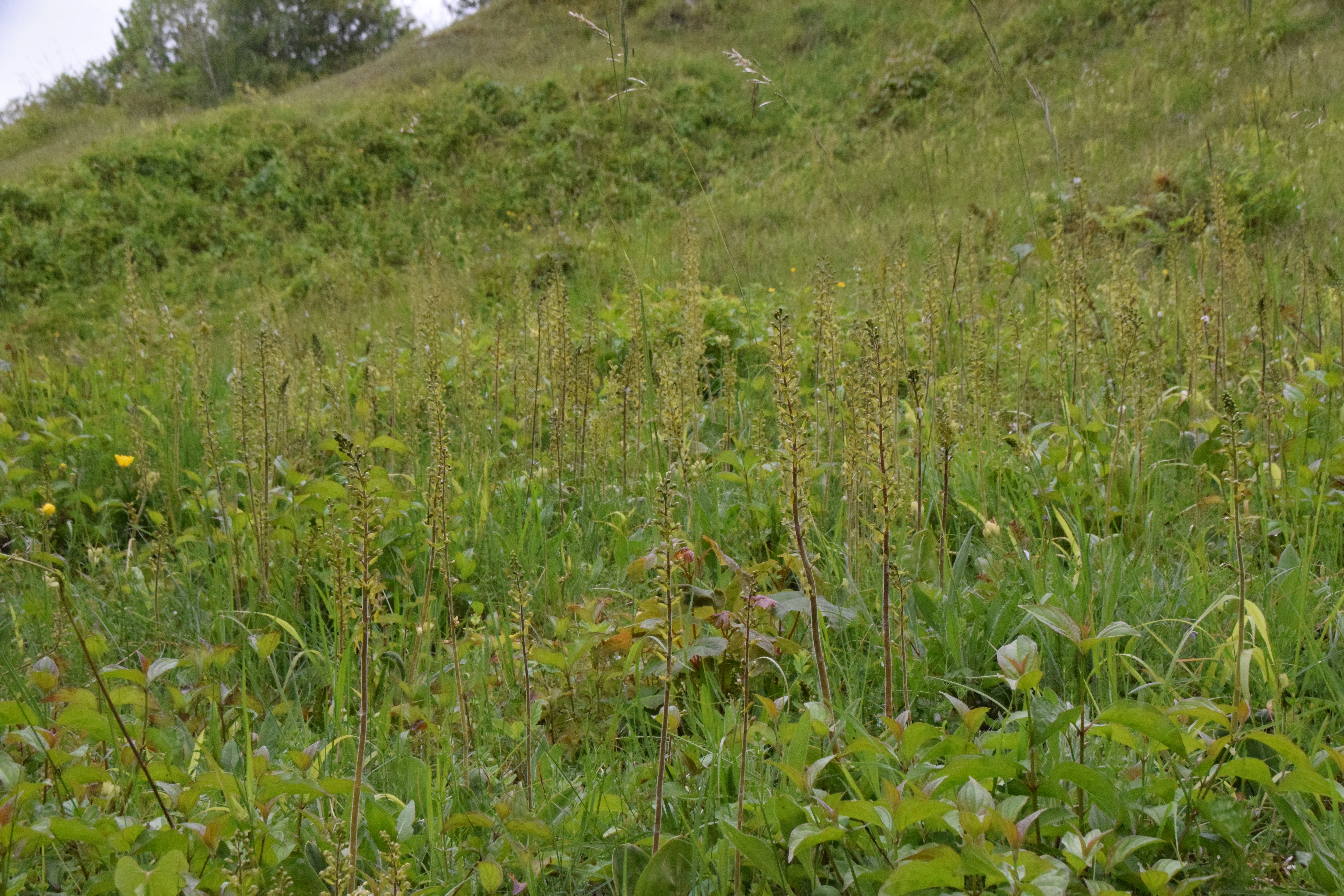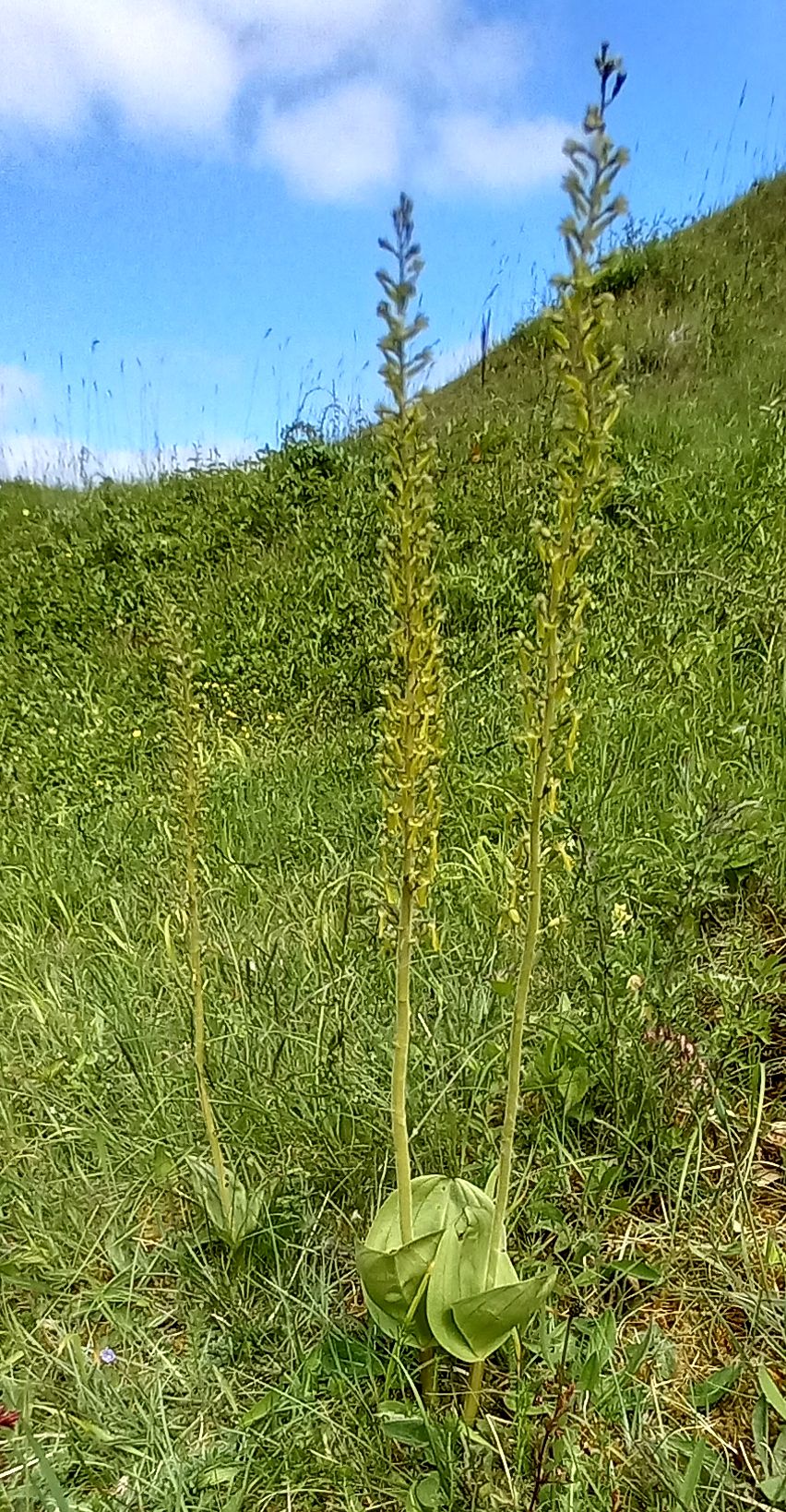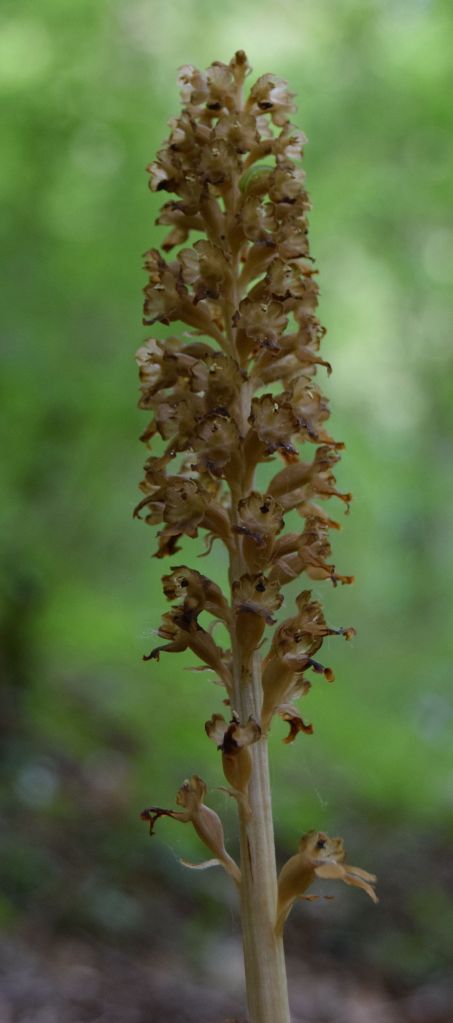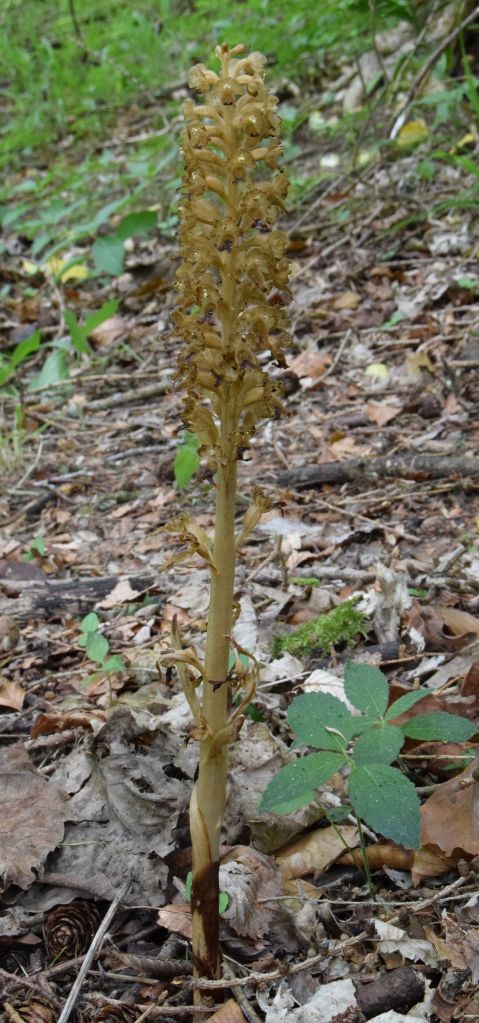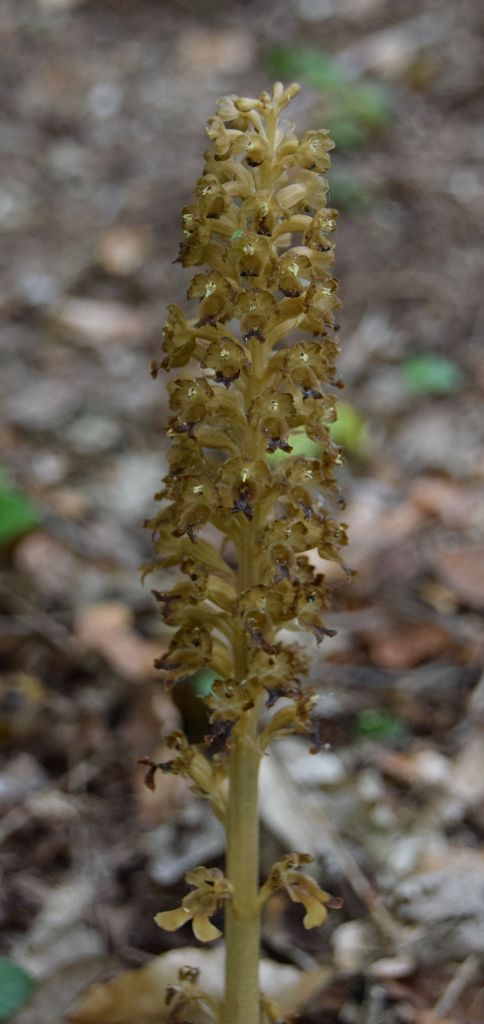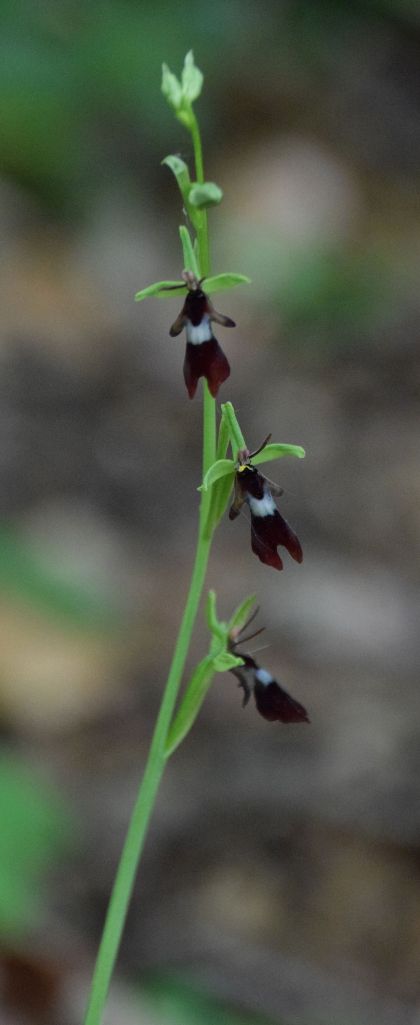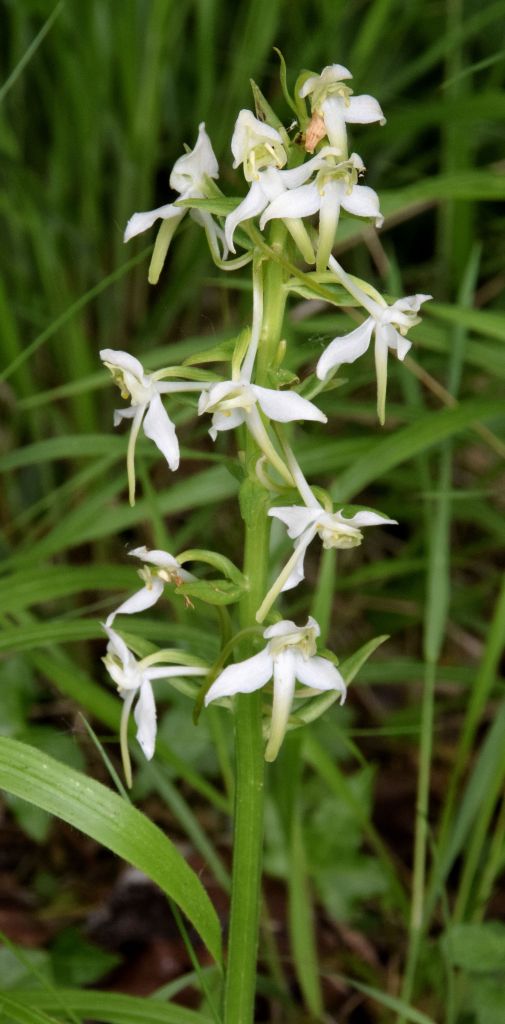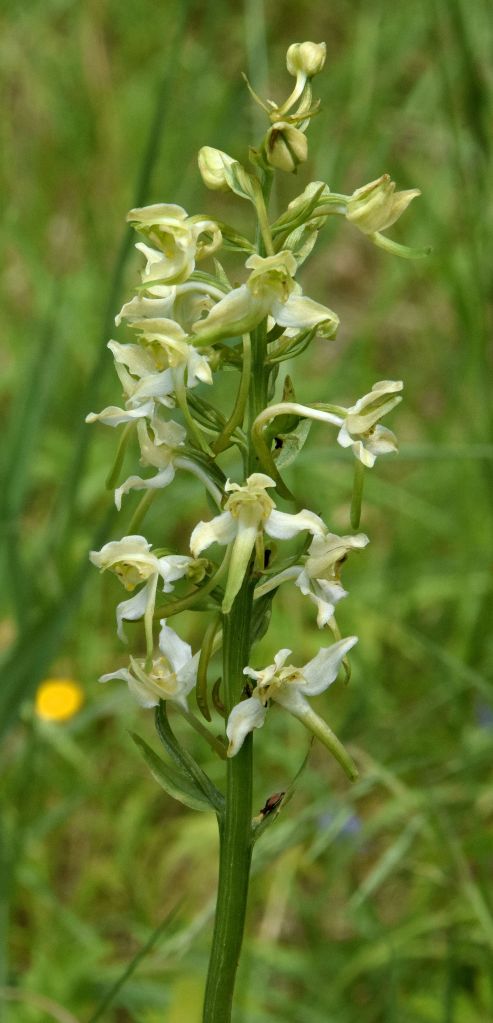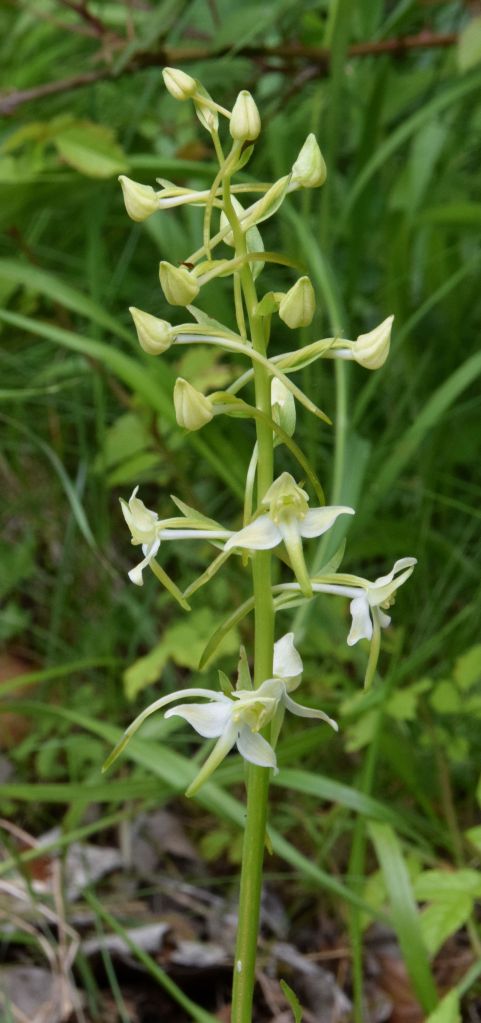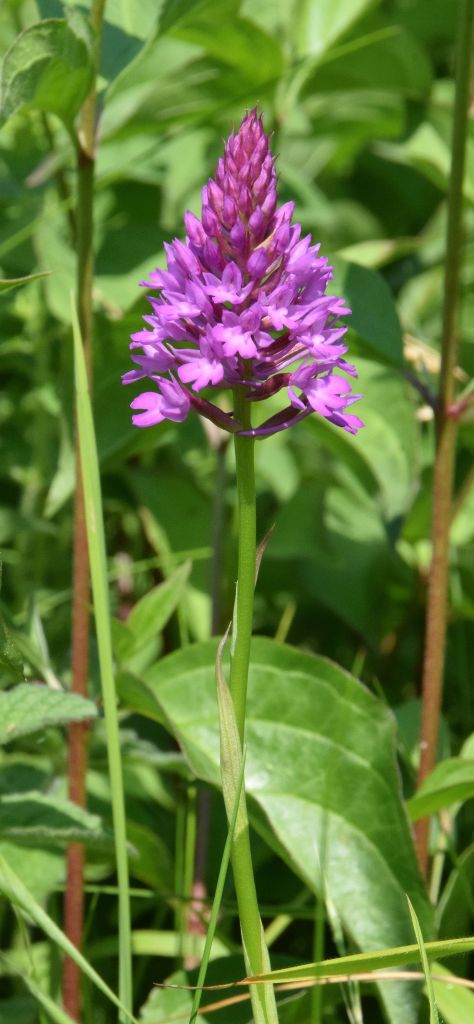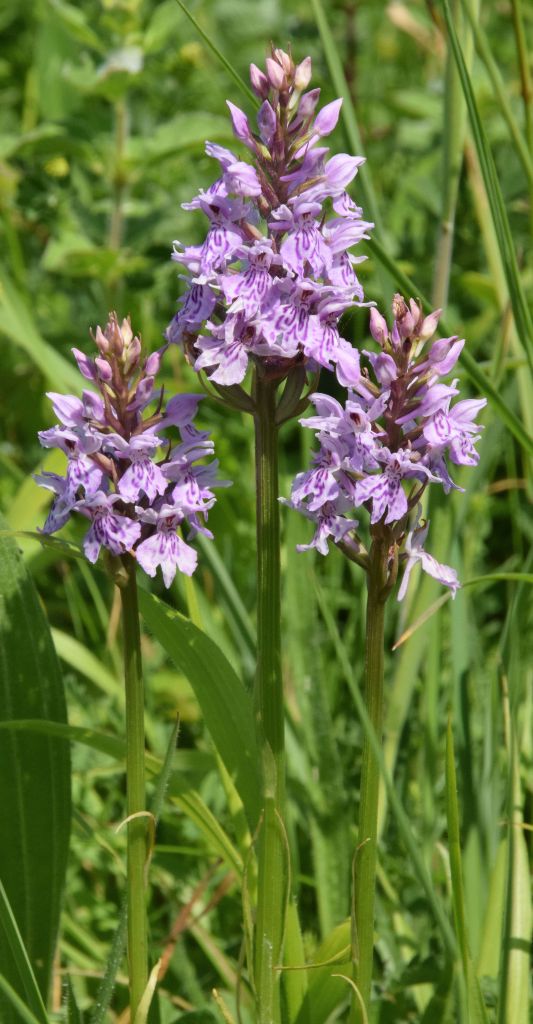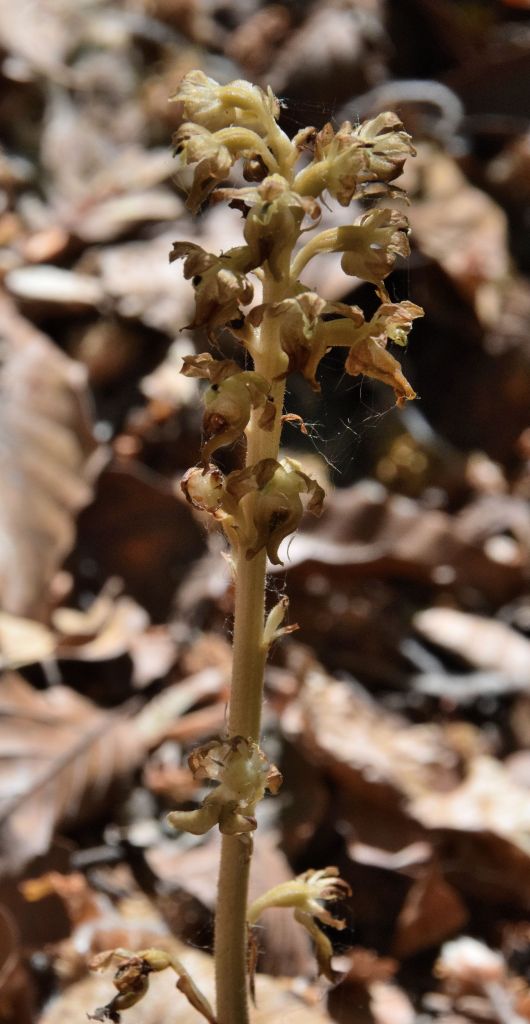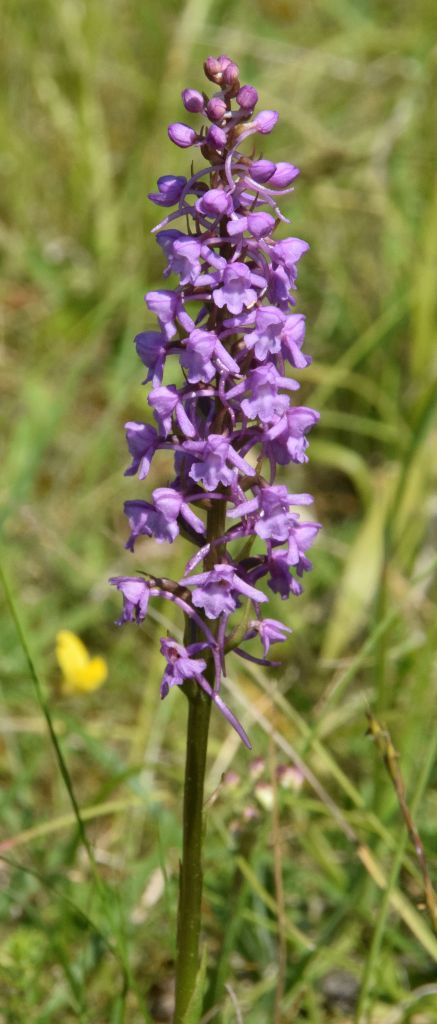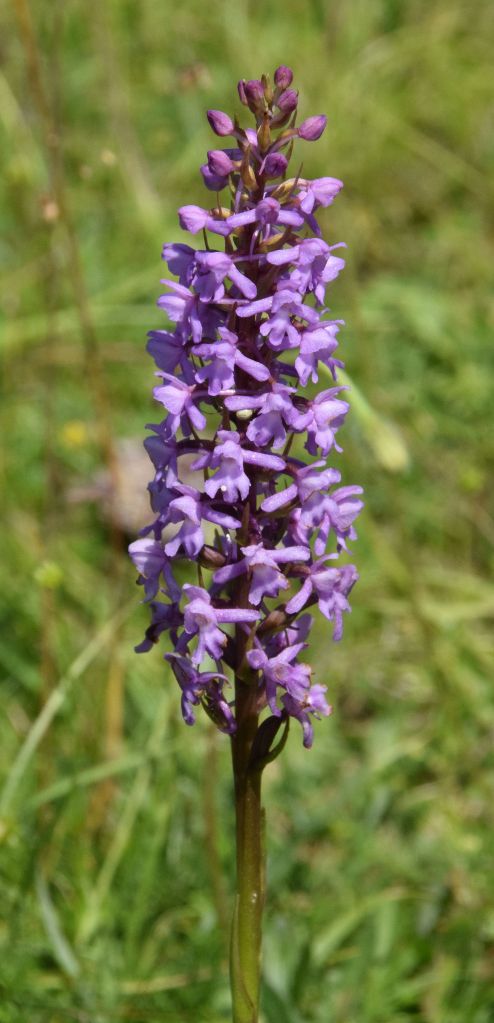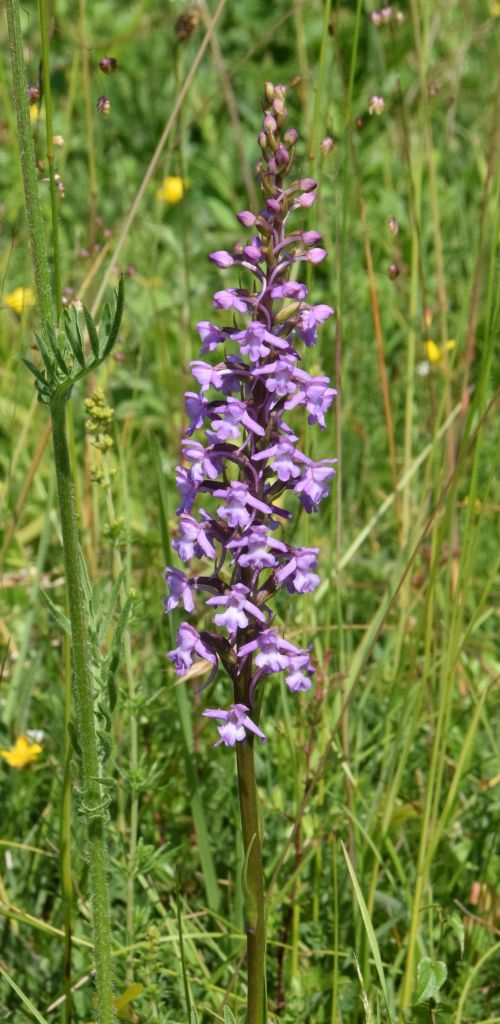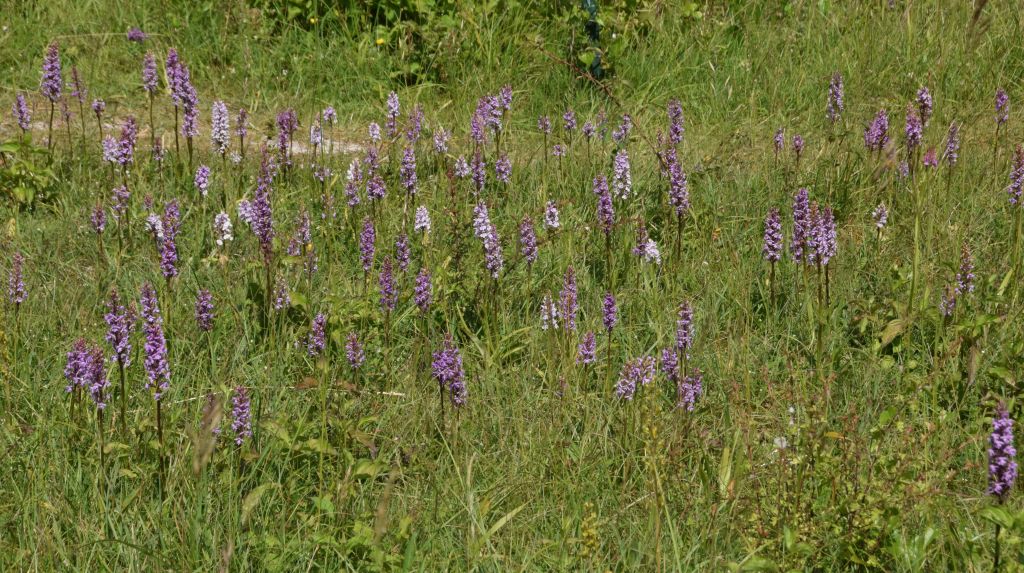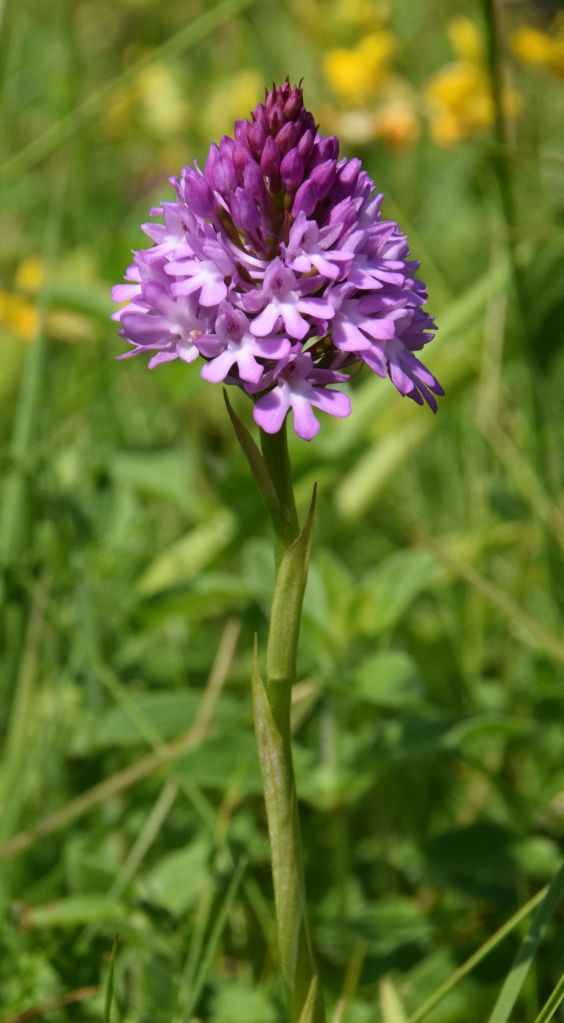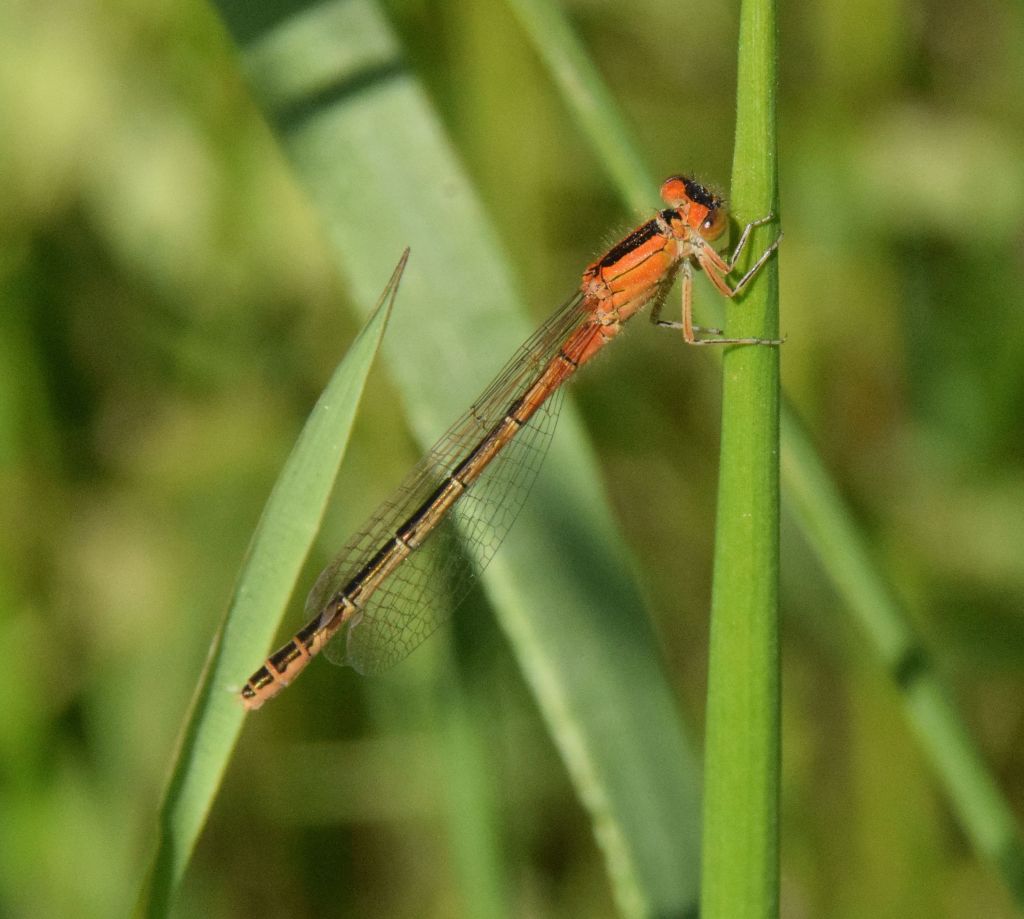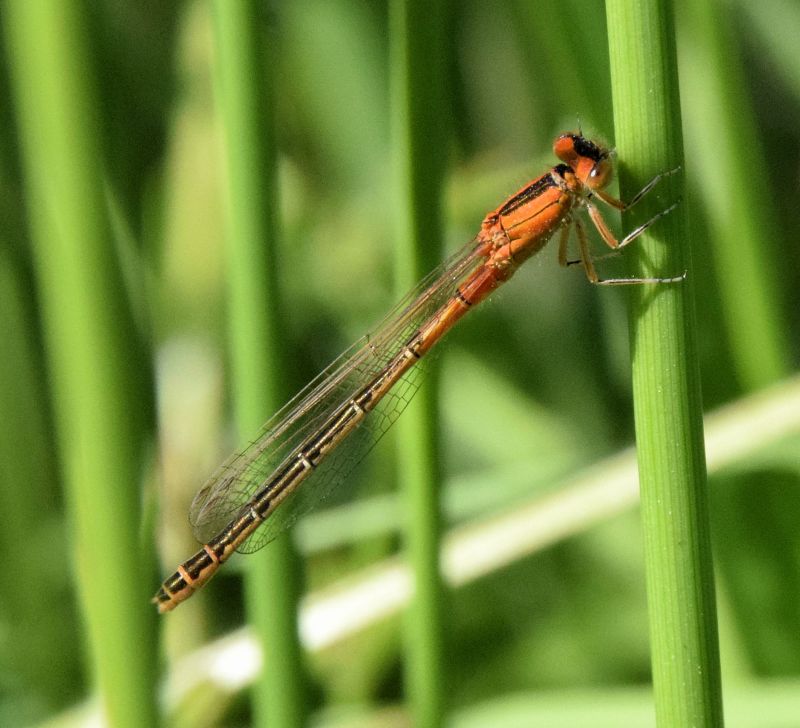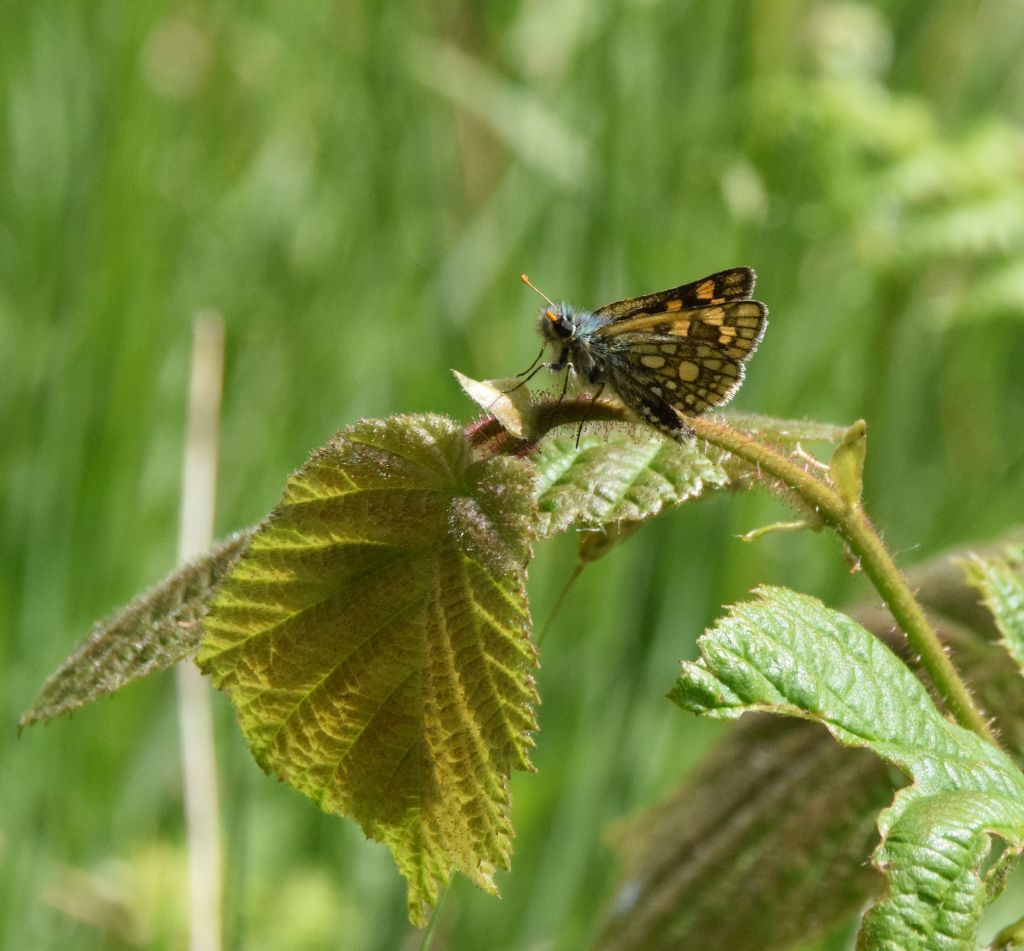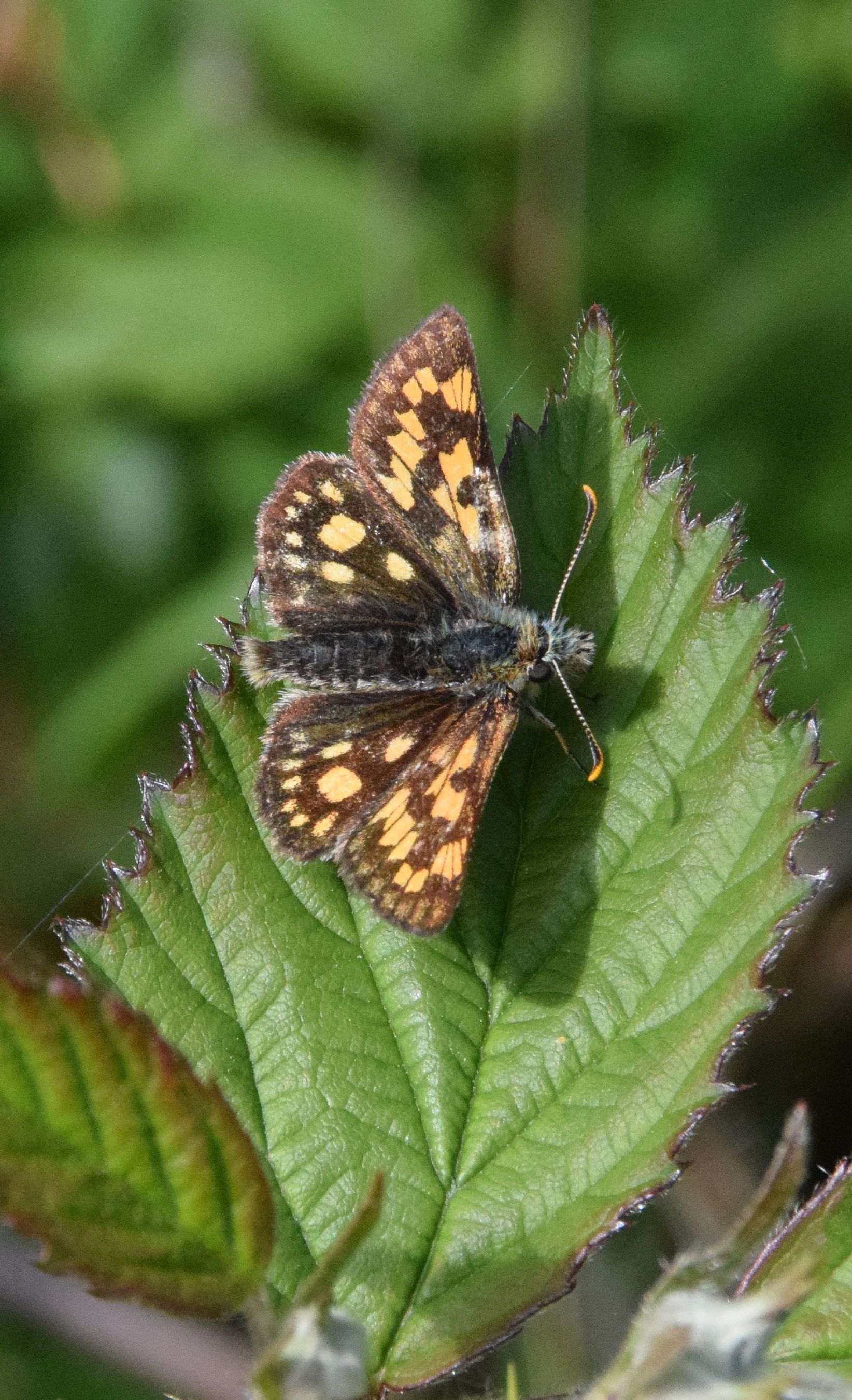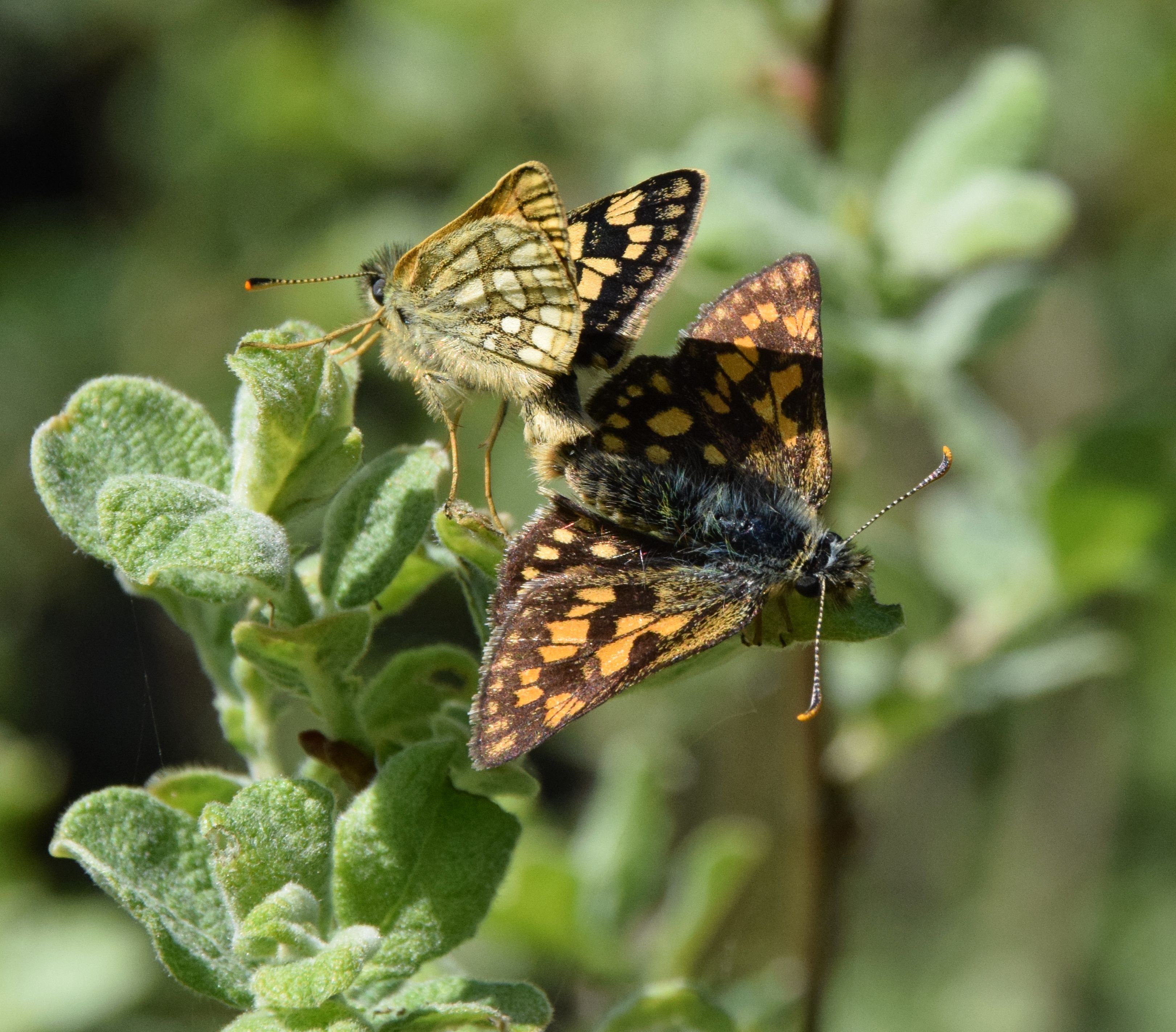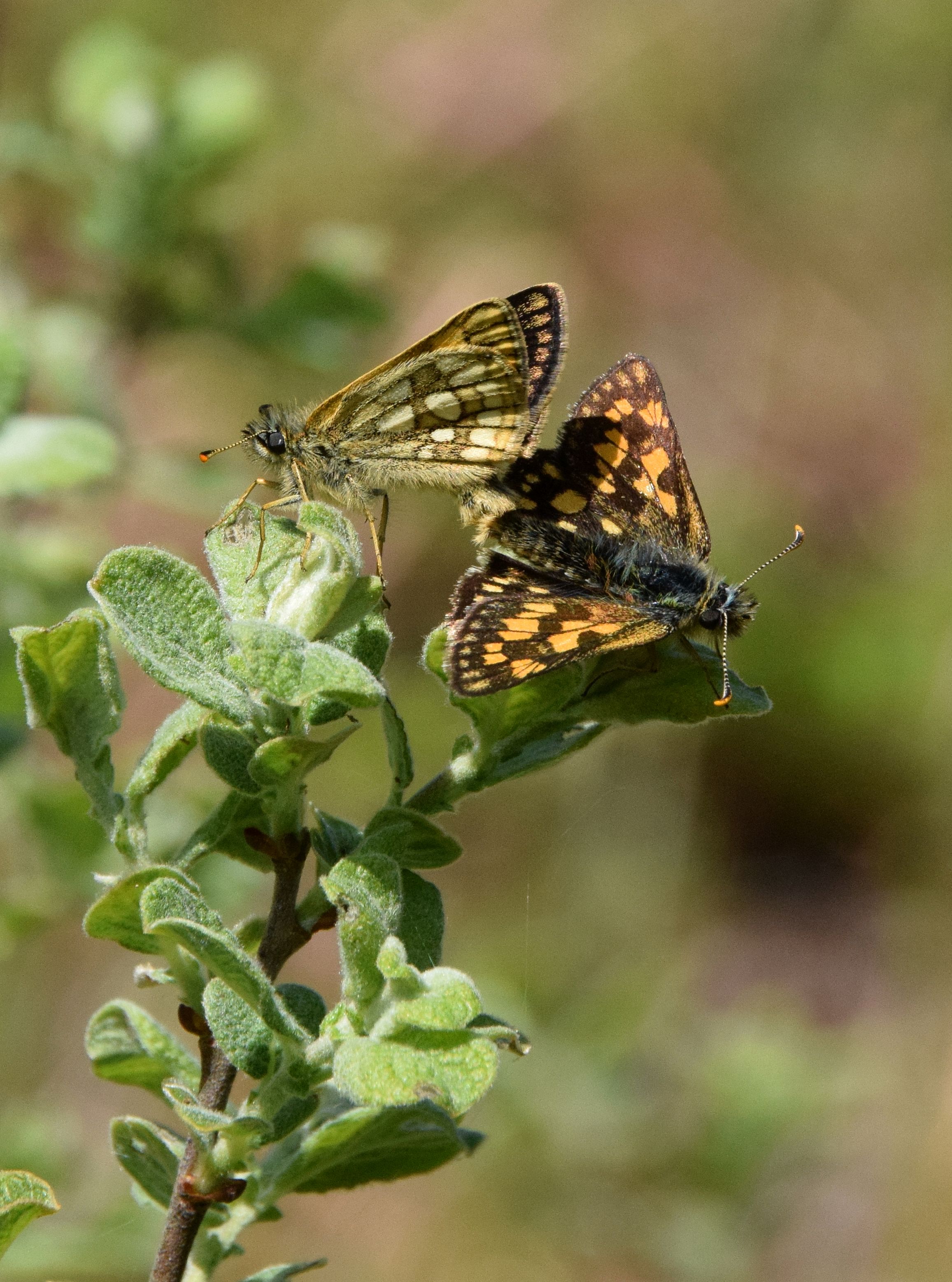The last Orchid to bloom in any season, just when most others have gone over is the diminutive and delicate Autumn Lady’s-tresses. After pictures of them began to appear on Facebook, I went to check out what is reputedly England’s largest colony at Greenham Common in neighbouring Berkshire on 15th, in company with Ewan. BBOWT directs visitors to an area 100 metres east of the site’s control tower car park (RG19 8DB – SU 499650), where upon our arrival these plants were not difficult to locate. Once our eyes were in there just seemed to be more and more of them, all around.
Thousands of this fascinating little number might erupt across short-sward areas of the former military airfield if conditions are right in August and September, but this Orchid is also prone to dormancy for seasons on end before re-appearing in even greater numbers. 2023 is as I expected in a wet high summer a prolific year, following on from the drought of 12 months ago. The sheer quantity of emergent plants here today matched my experiences earlier this year of Heath Spotted Orchid at Woodside Common, Oxon (see here) and Chalk Fragrant Orchid at Aston Clinton Ragpits, Bucks (here). Great care was required in selecting best items to take pictures of without trampling upon nearby, less photogenic subjects.
The tuberous Autumn Lady’s-tresses (Spiranthes spiralis) is characterised by up to 25 tiny bell-shaped white flowers splashed with pale-greenish yellow, growing spirally around 10 – 20 cm grey-green stems. The petals are covered in short white hairs. It is a resemblance upon close inspection to braids of plaited hair that gives the plant its name. This was the first British Orchid to be recorded in the 16th century, actually 1548 when braiding of men’s hair would no doubt have been less known than today.

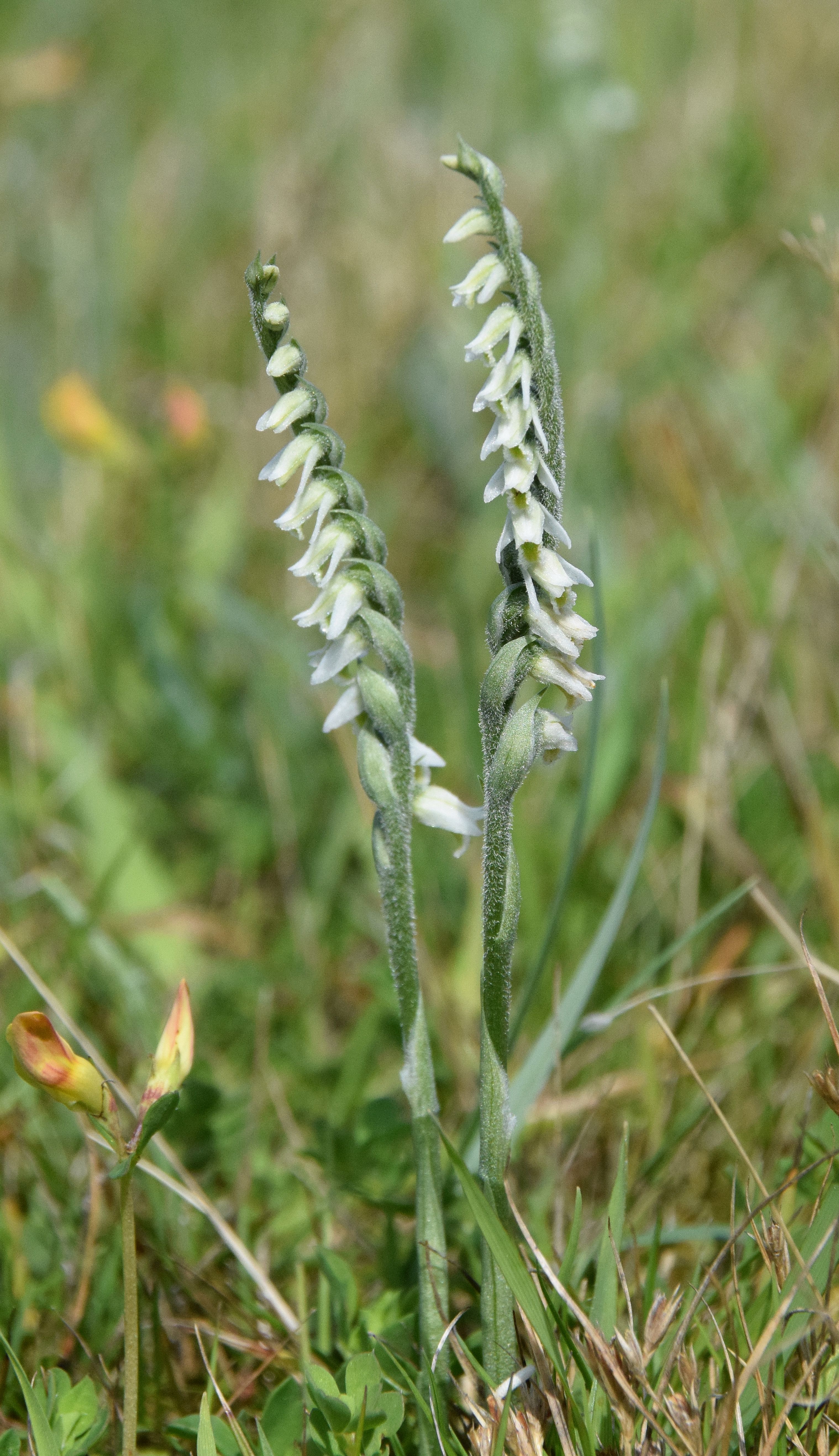


Autumn Lady’s-tresses
ALT grows mostly in southern England, sporadically elsewhere in open, neither too dry or moist locations such as short-grazed meadows, heaths, dunes, cliff tops or calcareous grassland. The single, upright flowering stem appears from the side of a flattened rosette of pointed, bluish-green leaves. Those wither before flowering time, when the blooms’ delicate fragrance attracts pollinating, night-flying insects. The species also occurs across much of continental Europe and adjacent areas of north Africa and Asia.
The subtle, under-stated beauty of this old-fashioned plant, unchanged or hybridised over six centuries since those earliest English records, possibly needs to be beheld to appreciate properly. It is the spiral nature of the blooms and likeness to braided hair that is perhaps most alluring. Autumn Lady’s-tresses: what an evocative name! Such an enduring proliferation here and now on the site of a former cold-war military facility that will forever be associated with potential for mass destruction in the not so distant past, may be testimony that nature in the end and whatever the setbacks will prevail. And that is something I have faith in very firmly!
After my spring ramblings around local Orchid-filled, ancient flower meadows this year and the enlightenment that such places exist, I rather lost enthusiasm for searching out the residual species to record as June progressed. Most of those locally comprised five of the nine British Epipactis Helleborines that bloom from July into August. These subtly different Orchids grow in open spaces in woodland on calcareous soils and are often found in damp environments. All are characterised by long, skinny stems of small, subtly-toned flowers.
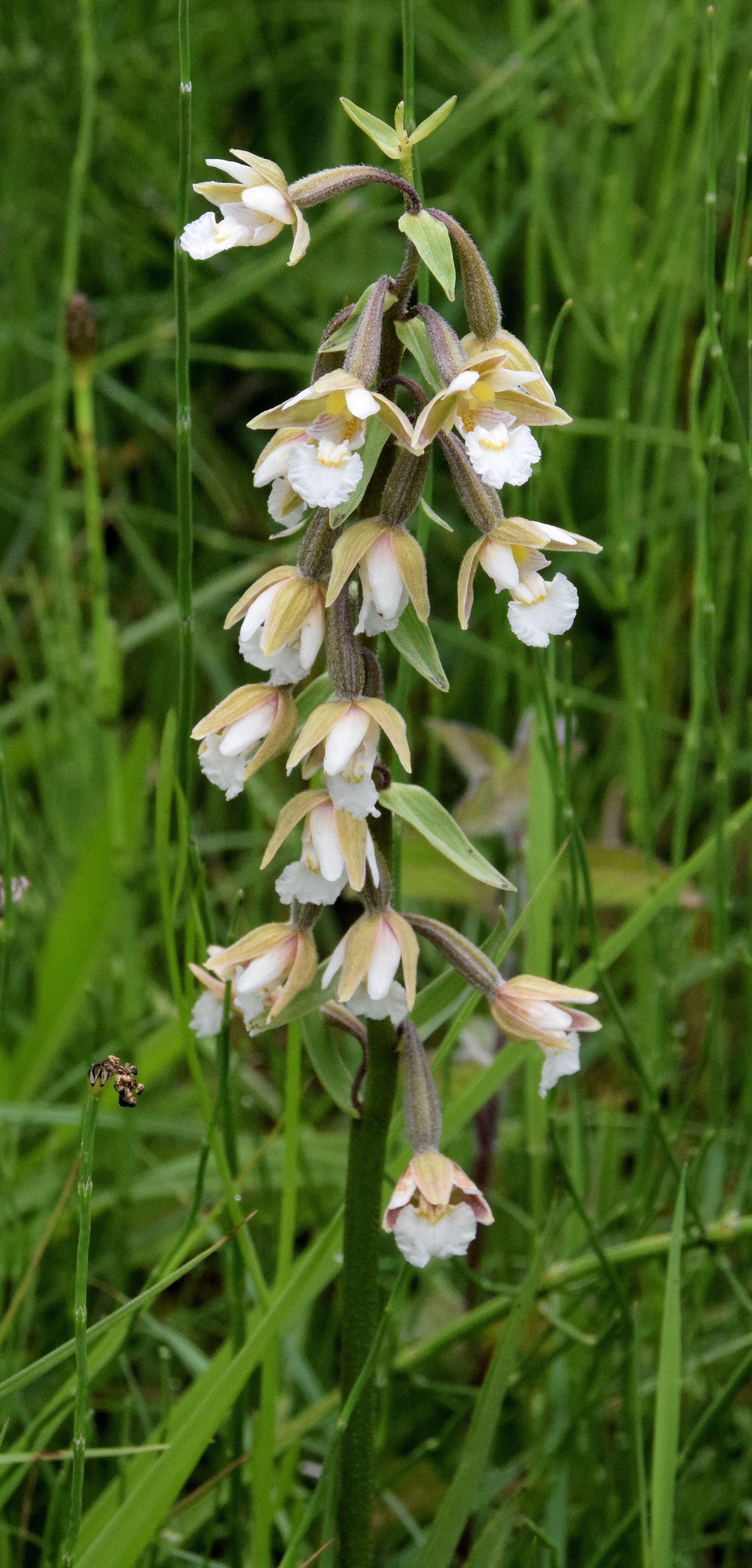
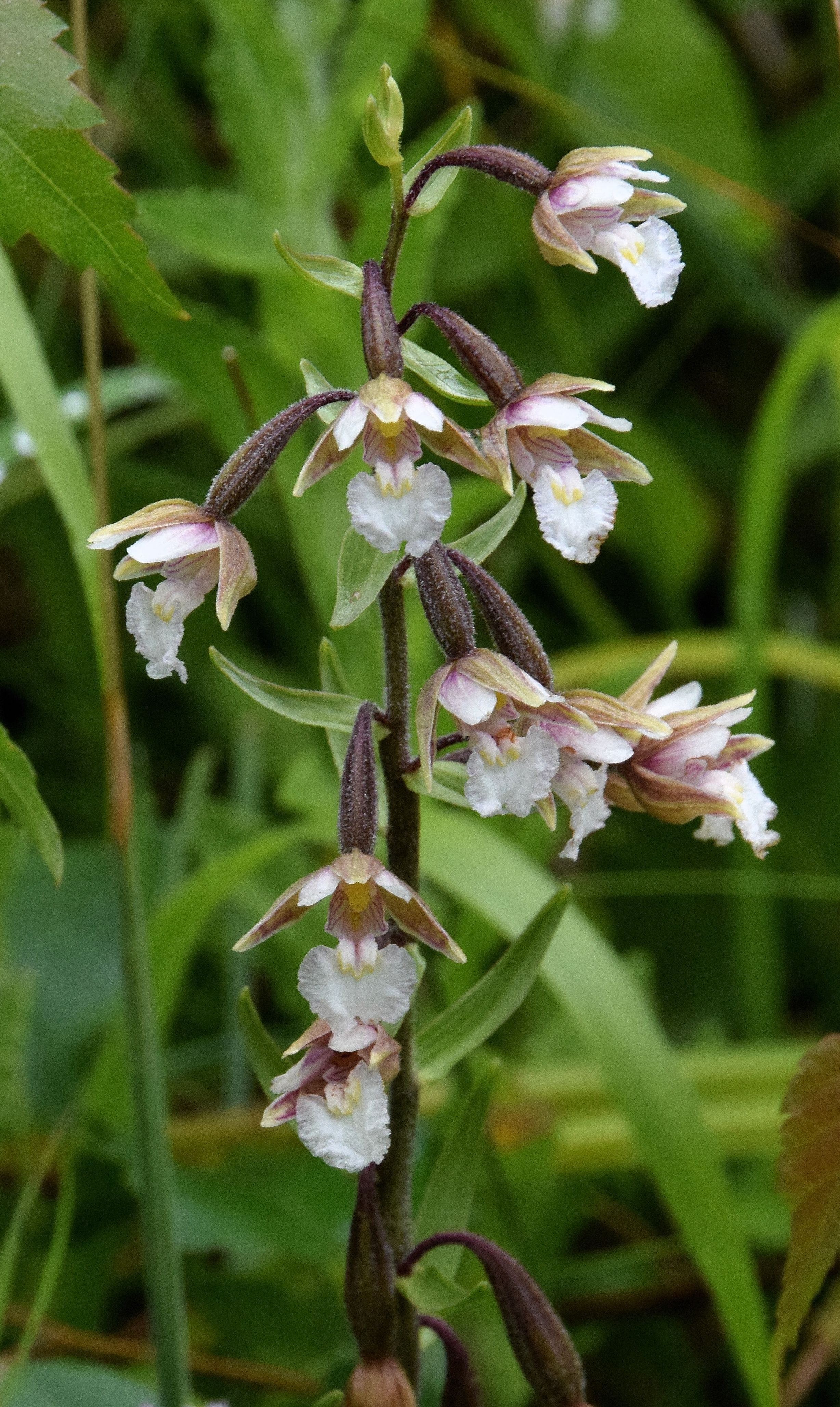
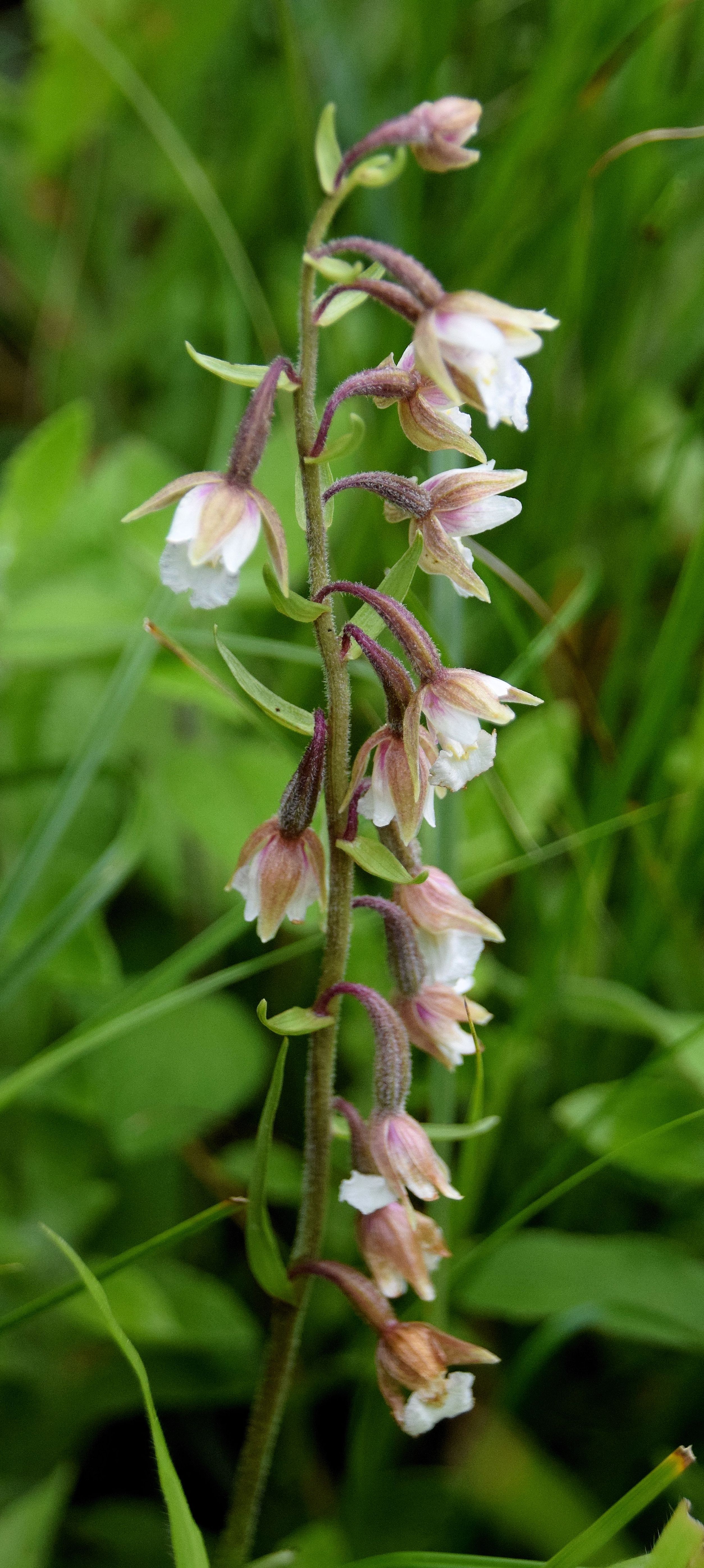
Marsh Helleborine
The first to announce themselves were Marsh Helleborine (pictured above) that I observed at both of Oxford’s calcareous fenland sites: the alkaline spring-fed Lye Valley LNR on 27th June, then BBOWT Dry Sandford Pit on 4th July. This plant, as the name suggests favours such wet, marshy habitats that may be flooded during winter and retain high moisture levels through summer. Described as scarce in the British Isles, they grow from 30 to 50cm tall with loose clusters of up to 20 whitish and pink or purple flowers facing mostly to one side suspended on reddish stems.
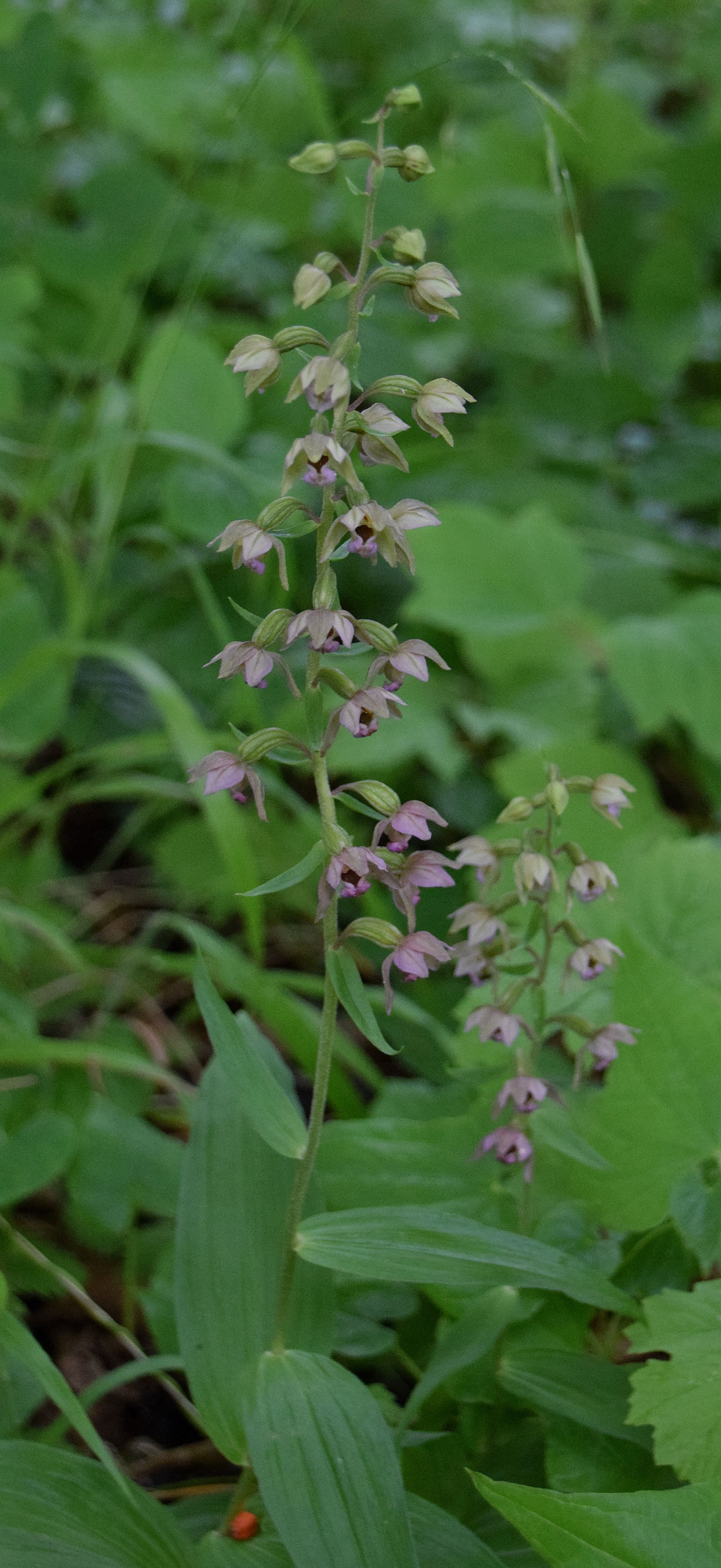


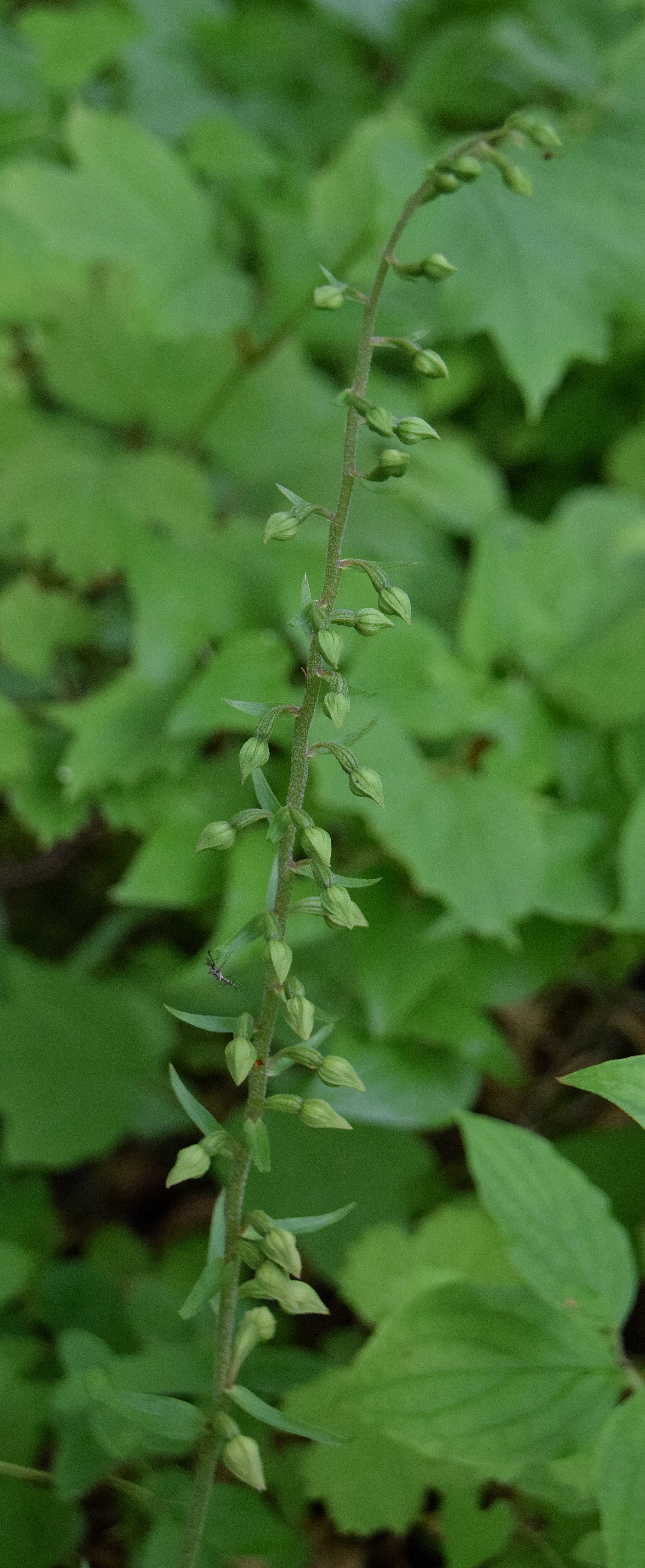
Broad-leaved Helleborine
After returning from my mid-July trip to Provence I saw on Facebook that Broad-leaved Helleborine (pictured above) was viewable at Aston Clinton Ragpits (HP22 5NF – SP888107). Having already recorded that favourite site of the season’s seven other Orchid species this one would complete the set. It is the most common and widespread member of the epipactis group, growing in and around deciduous woodland particularly of Beech. Individual stems can grow up to a metre tall with as many as 100 flowers that might range in colour between pink, shades of purple and pale green. I located them at the far edge of the wooded area adjacent to the site entrance, and finding the first-time sighting more interesting than I had imagined my motivation for this project became restored.

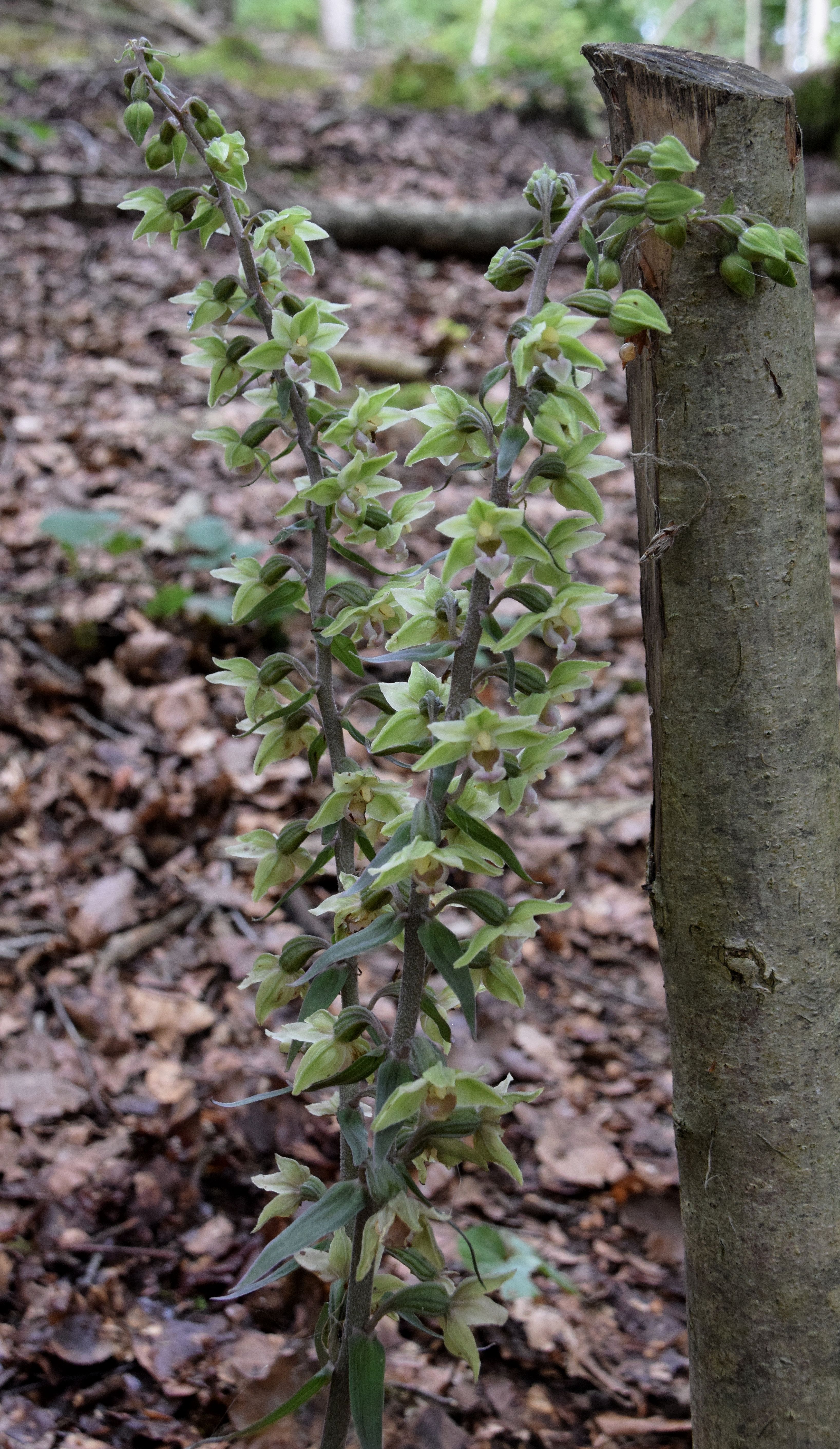
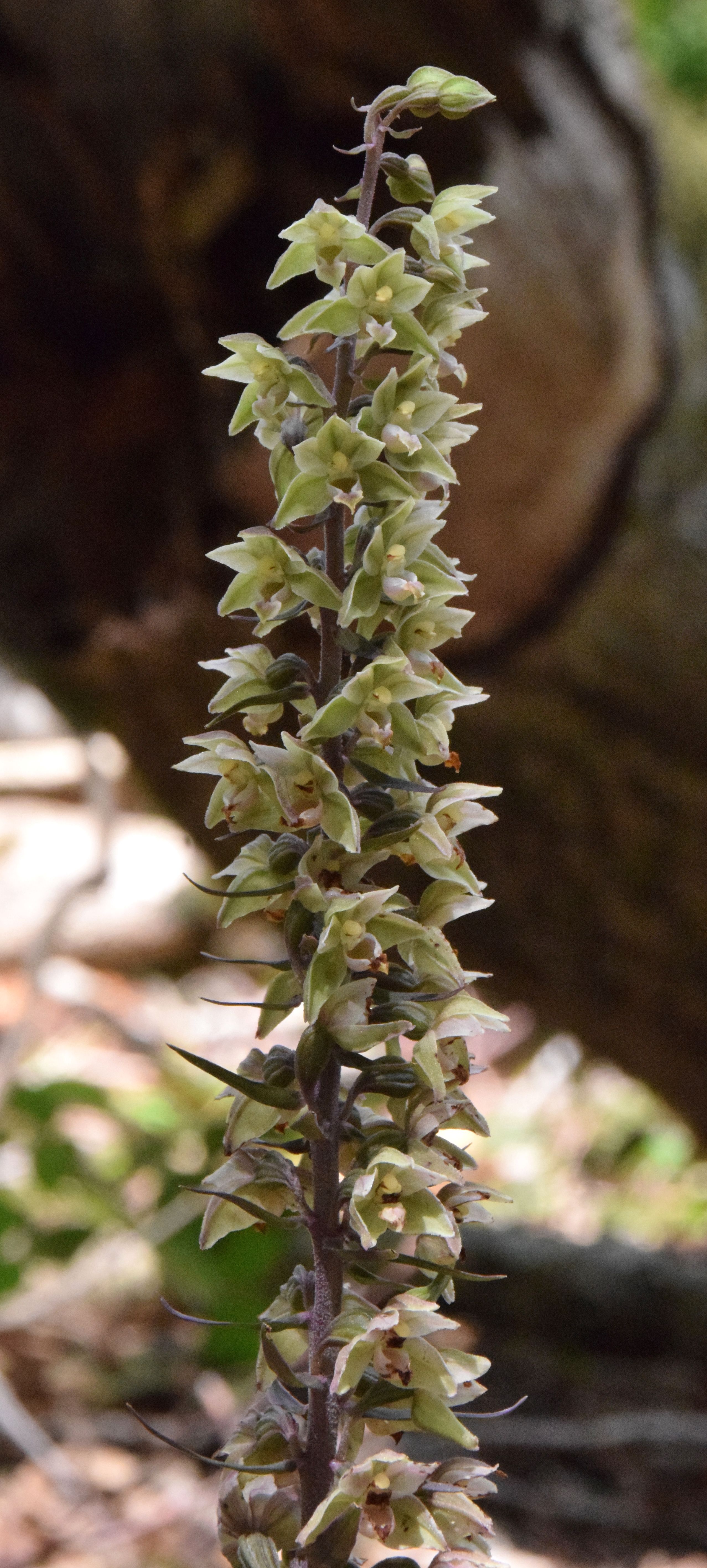
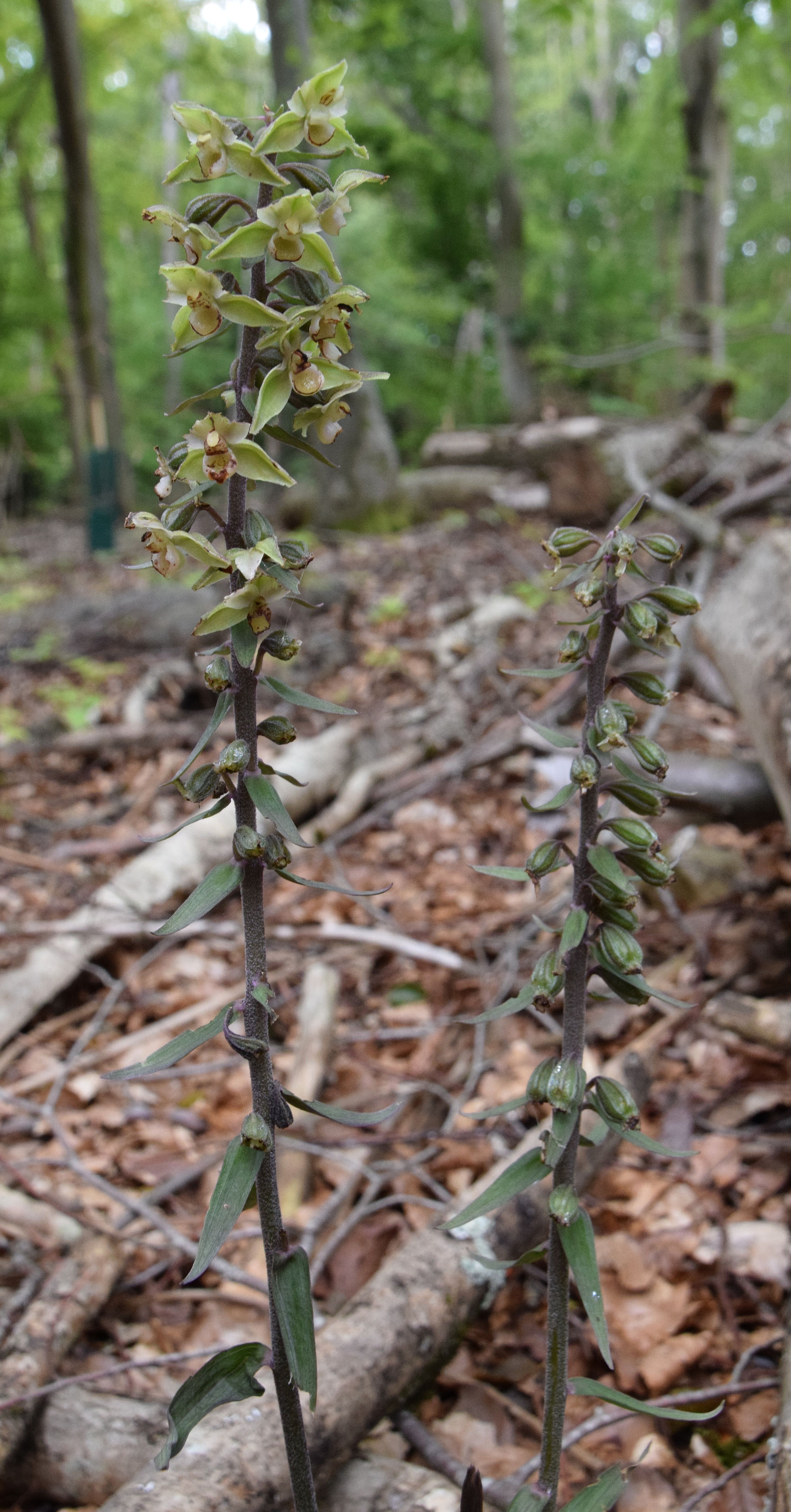
Violet Helleborine
It still remained to experience three more new Helleborines, of which Violet and Narrow-lipped have occurred historically at BBOWT’s Warburg Reserve (RG9 6BJ – SU721 878) near Henley, and the smaller Green-flowered at nearby Lambridge Wood (SU731843). I visited both sites on 7th Aug and several Violet Helleborine (pictured above) at the first one were impressive plants indeed. Closely related to Broad-leaved, these deep shade lovers may also grow to a metre high though the greenish-white flowers are less variable in colour. The stems and leaves may both be tinted purple, giving the plant its name. This once widespread, notably long-lived Orchid has undergone serious national decline over the past 160 years and now only survives in ancient woodland such as this.
The acting Warburg warden advised that though the reserve is still cited for Narrow-lipped Helleborine, few if any remain. Another site speciality, Lesser Butterfly Orchid has also not been recorded in 2023. And on 7th I also failed to find Green-flowered Helleborine where I had been advised to look in Lambridge Wood, though that last item is said to appear until early October. Finding these less profuse things in the field is clearly an imprecise art.


